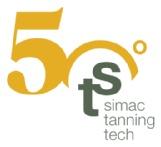
FOCUS
PREVIEW FAIRS

24/03
GREEN DEAL LEATHER UPHOLSTERY SIMAC TANNING TECH NEW LEATHER CHEMICALS APLF Report ACLE Preview ISSN 2531-9620 ARSTANNERY1° SUPPLEMENTO AD ARSUTORIA 489MAY 2024POSTE ITALIANE S.p.A.SPEDIZIONE IN A.P.AUT. MBPA/LO-NO/049/A.P./2017 ART.1 COMMA1LO/MI

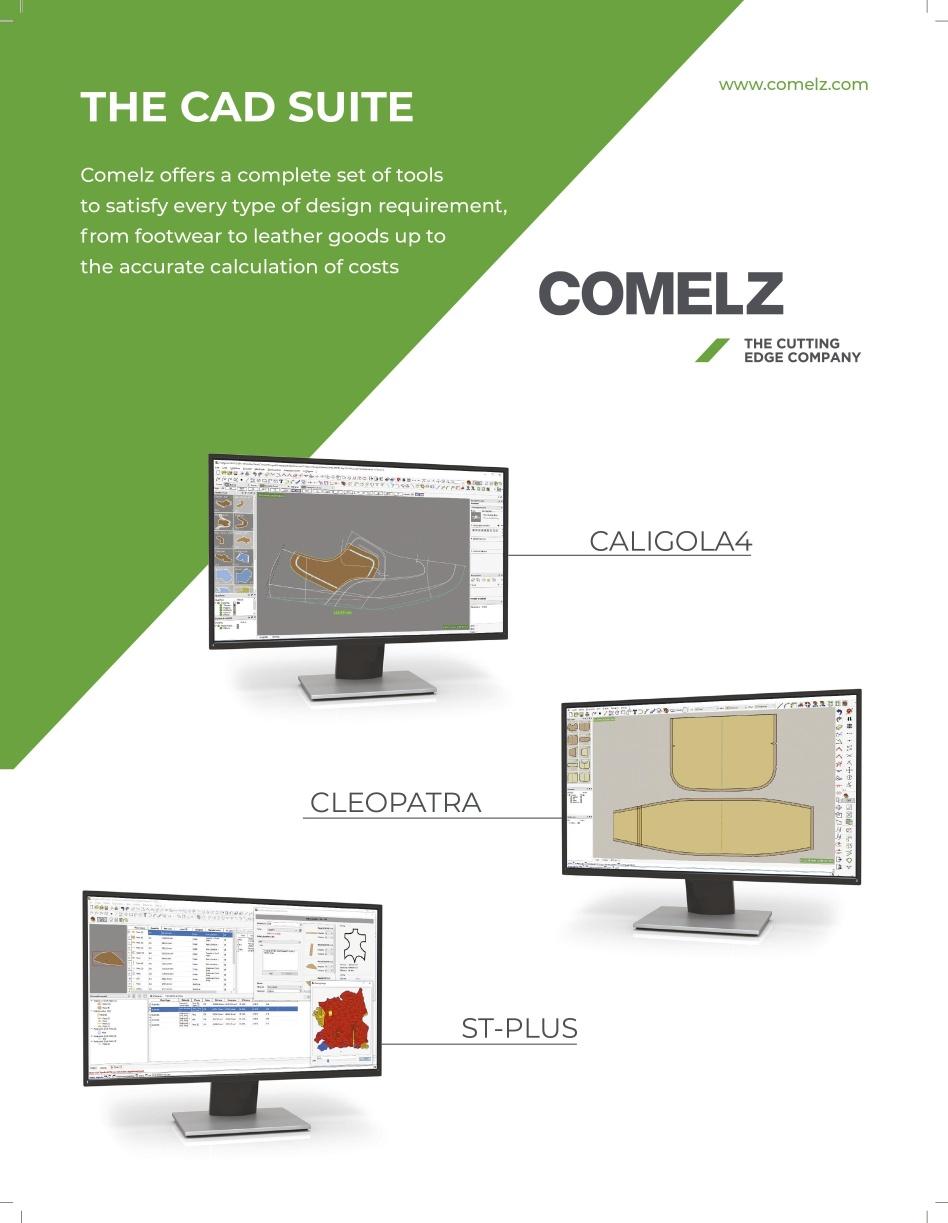

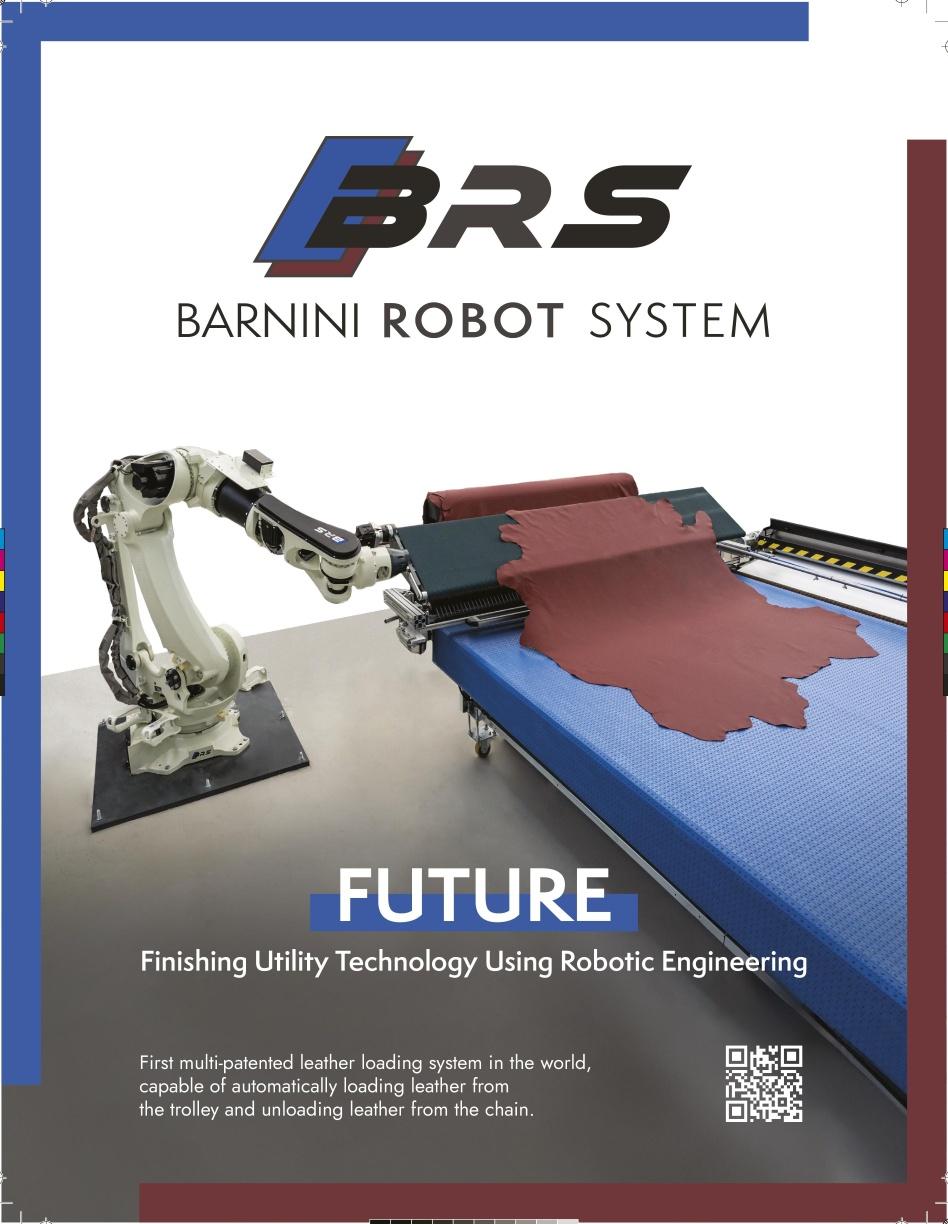
ARSTANNERY - 1° SUPPLEMENTO
AD ARSUTORIA 489
Maggio 2024
Poste Italiane Spa – Spedizione in abbonamento postale –Autorizzazione MBPA/LO-NO/049/A.P./2017 ART.1 COMMA1 – LO/MI.
Direttore Responsabile Matteo Pasca © Copyright 1967
Tutti i diritti di proprietà artistica e letteraria sono riservati. È assolutamente vietata la riproduzione totale o parziale di articoli, disegni e fotografie, in qualsiasi forma e modo, sia analogico che digitale, anche citandone la fonte, senza espressa autorizzazione della casa editrice. Ogni abuso sarà perseguito a norma di legge
All artwork and copyrights are reserved. Total or partial reproduction is absolutely forbidden of articles, designs and photographs in any form, either analogical or digital, even if stating the source, without the express permission of the publishing house. Any abuse will be punished by law.
ISSN 2531-9620
Le inserzioni pubblicitarie sono pubblicate sotto la totale responsabilità del committente; la casa editrice non si assume alcuna responsabilità per il loro contenuto. Per ogni contestazione si rimanda all’indirizzo del committente pubblicato sulla sua stessa pagina pubblicitaria o, in mancanza, in fondo alla rivista.
Adverts are published at the full responsibility of the client; the publishing house does not accept any responsibility for the contents.
All notifications must be referred to the advertiser, whose address can be found either printed on his advertising page or, if this is not the case, in the end of the magazine. Ai sensi dell’articolo 2 comma 2 del Codice di deontologia relativo al trattamento dei dati personali nell’esercizio dell’attività giornalistica, si rende nota l’esistenza di una banca-dati personali di uso redazionale presso la sede di Milano, via Ippolito Nievo 33. Gli interessati potranno rivolgersi al responsabile del trattamento dei dati Ing. Matteo Pasca presso la sede di Milano, via Ippolito Nievo 33, per esercitare i diritti previsti dal D.L.GS. 30 giugno 2003, n.196
Direttore Responsabile Matteo Pasca
Editorial
Erika Alberti, Emanuela Cecchetti Alessandro Dorio, Enrico Martinelli Sara Meneghetti redazione@edizioniaf.com
Digital
Domiziana Desantis, Maria Teresa Caruso Simone Riccardi digital@edizioniaf.com
Pr & Marketing
Mariella Catalano, Mariel Cuba marketing@edizioniaf.com
Advertising
Filippo Crepaldi, Lucio Luiselli, Stefano Migliavacca adv@edizioniaf.com
Operations
Massimo Ledda, Elisa Trasi Andrea Zampieri operations@edizioniaf.com
Printing
New Everprint neweverprint.it

Send an e-mail to: arsutoria@edizioniaf.com
LET'S HAVE A LOOK
# 006 GREEN DEAL LEATHER PROJECT COMES TO AN END # 022 NEW EUROPEAN SUSTAINABILITY REGULATIONS AFFECT EVERYONE, NOT JUST THE BIG NAMES # 082 APLF: SUCCESSFUL RETURN TO HONG KONG # 092 FURNITURE COMES TO TERMS WITH WEAK DEMAND # 106 SUSTAINABLE CONSTRUCTION MATERIALS FOR LOW-COST HOUSING # 018 AICC: NEW FRONTIERS IN LEATHER PRODUCTION # 045 SIMAC TANNING TECH, ROAD TO 50th EDITION. FROM THE FIRST EDITION TO THE FUTURE. A HISTORY OF SUCCESS
to receive a link and read the next issues of ARS TANNERY online for free
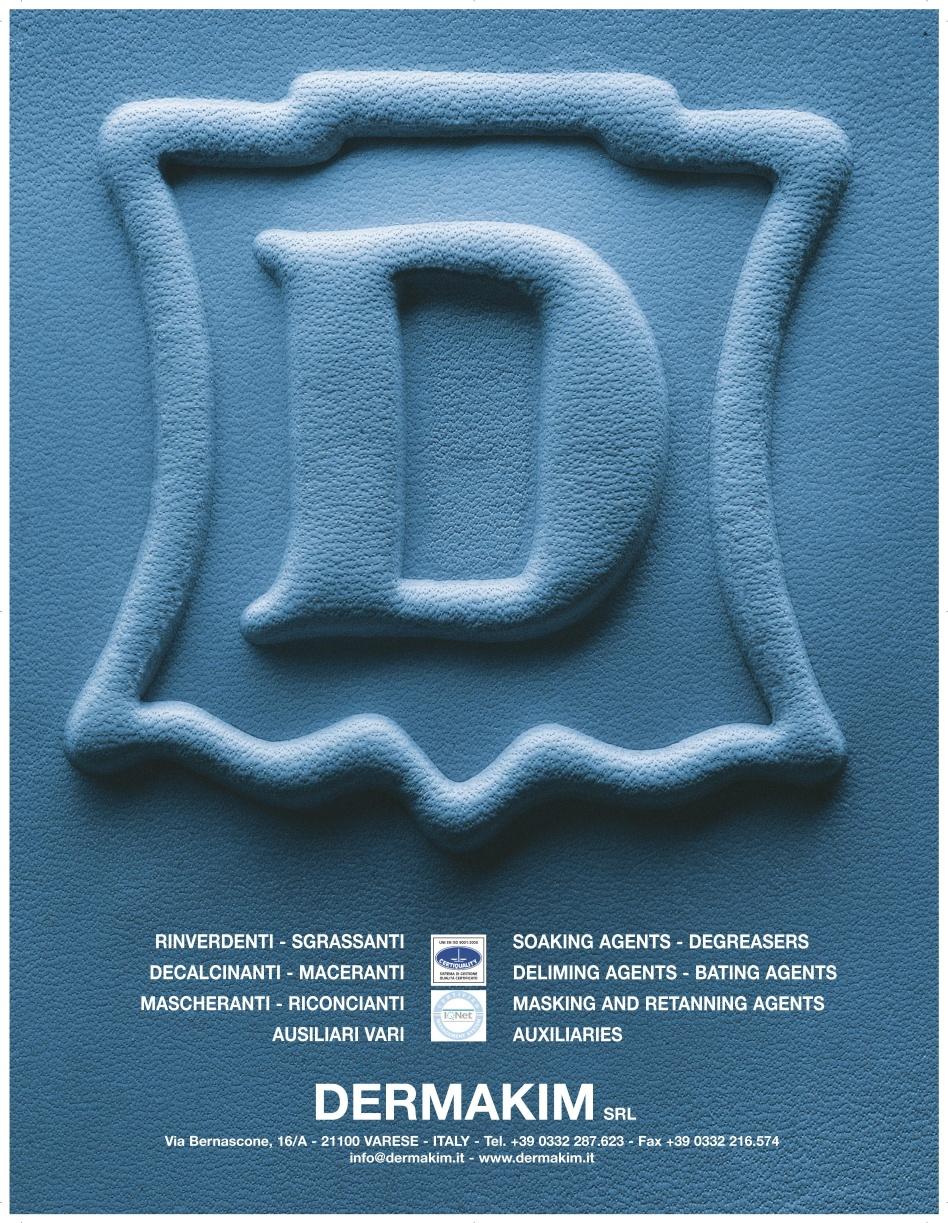
GREEN DEAL LEATHER PROJECT COMES TO AN END
Towards Zero Adverse Impact of the European Leather Industry
Last May 16th, in Brussels, the European Tanning and Leather social partners, COTANCE and industriAll Europe held the Green Deal Leather Final Conference, concluding a two-year, EU-funded Social Dialogue project ’Towards Zero Adverse Impact of the European Leather Industry – GREEN DEAL LEATHER’. The event attracted around 100 on-site attendees and marked the end of a successful, EU-funded social dialogue project between the European social partners as well as national representatives from Spain (ACEXPIEL), Portugal (APIC), France (FFTM), Hungary (MKZS), Italy (UNIC), Germany (VDL), and Austria (FVTBSL).
The Final Conference commenced with an address by Judith Kirton-Darling, Secretary General of industriAll Europe, who stated: “We have a proud tradition of producing good quality leather here in Europe and we want to make the leather sector, like all manufacturing sectors, as green as possible. At the same time, good occupational health and safety practices in the workplace, with ongoing training and checks, are essential for achieving a more sustainable leather industry. Social dialogue is key, and with the project’s preliminary results serving as a baseline, we must now work together to achieve zero accidents.’’
Mr Manuel Rios, President of COTANCE, added: "Through the Green Deal Leather project, COTANCE continues to equip European tanners with the tools and intelligence needed to progress towards a more sustainable future. We believe that transparency is key to advancing our social and environmental credentials and dispelling common misconceptions about leather. We are proud to undertake this journey hand in hand with our social partners.”

Following the opening remarks, COTANCE Secretary General, Mr. Gustavo González-Quijano, introduced the audience to the GDL project. Representative data on tannery workplace safety in the EU ("Injuries/Incidents at the Workplace" study released in Lineapelle/Milan, September 19, 2023) and the carbon footprint of leather ("The Carbon Footprint of European Bovine Leather" study released at the Final Conference in Brussels) were screened in two infographic videos. The data obtained serves as both a benchmark and a baseline, supporting sustainable development within the European tanning industry.
The studies reveal that:
- Tannery-related accidents in EU countries surveyed (Italy, Spain, France, Germany, Portugal, Hungary and Austria) declined by 16%, from 1,317 in 2019 to 1,102 in 2021. However, with an 1 incidence rate of 3.2% in 2021, of which 15% is on the way to/from work, and over 90% of recorded accidents being qualified as of "minor" severity, there is still room for improvement.
- Calculating leather's carbon footprint is a complex exercise that requires a thorough understanding of the tanning industry, its processes and products. The result obtained with the ECO2L method indicates an average of 8kg of CO2 per m2 of bovine leather in tannery processes. This figure can vary based on specific characteristics of the leather, such as thickness and performance requirements. Therefore, since each batch of leather is made to order, customers have the opportunity to influence the eco-design of their leather products.
- Leather's environmental impact stems more from livestock breeding and chemicals than from tanning. The study also

6 ARSTANNERY NEWS
GUSTAVO GONZÁLEZ-QUIJANO, SEGRETARIO GENERALE COTANCE
MANUEL RIOS, PRESIDENTE COTANCE
GUSTAVO GONZÁLEZ-QUIJANO, COTANCE SECRETARY GENERAL
MANUEL RIOS, COTANCE PRESIDENT
shows why replacing a chemical with one that has a lower carbon footprint does not always result in overall improvement.
Following the presentation, the first panel, moderated by Elspeth Hathaway of industriAll Europe, featured Agostino Apolito, Director General of Assomac; Beatriz Mello da Cunha, Specialist at ILO; Javier Uson Montesinos, Representative at UGT-FICA; and Sabrina Frontini, Director of ICEC, who together provided valuable insights into the social sustainability of the leather industry. Speakers emphasised that prevention strategies, including health & safety certification and training, Personal Protective Equipment (PPE), and active worker involvement are crucial to enhancing workplace safety. Quality social dialogue is an effective tool for discussing workplace issues and ensuring all workers are safe. Additionally, with challenges in attracting young people to the sector, it is important to demonstrate that the tanning and leather industry is not only safe but also green and circular.
The second panel featured top leather industry experts: Dr Francesco Troisi, head of the CERIS srl Analytical Laboratory and member of the UNPAC Technical Commission; Andreas Meyer, Managing Director of VDL; Ivan Kral, Industrial Development Officer of UNIDO; and Guido Zilli, ESG Manager of Gruppo Mastrotto. Christian Baio, Sustainability & Business Development Manager, SPIN360, moderated the panel. Building on previous achievements and leather's natural properties, from its durability and life-cycle assessment, discussed by Ivan Kral, to the dysfunction of the EF methodology and its penalising effects, presented by Guido Zilli, the second panel highlighted leather's inherent sustainability, making it an ideal component of the circular economy. The ECO2L carbon footprint calculation tool, introduced yesterday, marks a further step towards a harmonised approach and increased transparency in the industry. Future steps will develop aspects like durability, natural content, and reparability to enable accurate comparisons of different materials and their true environmental footprints.
The Final Conference of the GDL project showcased the work and achievements of the social partners, who, in these last two years, have gathered and produced data that will greatly benefit the tanning and leather sector globally. By working together in social dialogue, the European leather industry produces tools and intelligence which contribute to worker safety, protect the environment, and promote sustainable, high-quality leather, supporting millions of jobs worldwide.
Project website: https://euroleather.com/news/projects/greendeal-leather
SI CONCLUDE IL PROGETTO GREEN DEAL LEATHER
Obiettivo: verso un impatto ambientale Zero dell'industria europea del cuoio
Lo scorso 16 maggio, a Bruxelles, le parti sociali europee del settore conciario e del cuoio, COTANCE e industriAll Europe hanno tenuto la Conferenza finale del Green Deal Leather, a conclusione del progetto biennale di dialogo sociale finanziato dall'UE "Verso un impatto negativo zero dell'industria europea del cuoio - GREEN DEAL LEATHER". L'evento ha attirato circa 100 partecipanti in loco e ha segnato la fine di un progetto di dialogo sociale di successo, finanziato dall'UE, tra le parti sociali europee e i rappresentanti nazionali di Spagna (ACEXPIEL), Portogallo (APIC), Francia (FFTM), Ungheria (MKZS), Italia (UNIC), Germania (VDL) e Austria (FVTBSL).
La Conferenza finale è iniziata con un discorso di Judith Kirton-Darling, Segretario Generale di industriAll Europe, che ha dichiarato: "Abbiamo una tradizione orgogliosa di produzione di pelle di buona qualità qui in Europa e vogliamo rendere il settore della pelle, come tutti i settori manifatturieri, il più ecologico possibile. Allo stesso tempo, buone pratiche di salute e sicurezza sul lavoro, con formazione e controlli continui, sono essenziali per ottenere un'industria della pelle più sostenibile. Il dialogo sociale è fondamentale e, con i risultati preliminari del progetto che fungono da base di partenza, dobbiamo ora lavorare insieme per raggiungere l'obiettivo di zero infortuni.''.
Manuel Rios, Presidente di COTANCE, ha aggiunto: "Attraverso il progetto Green Deal Leather, COTANCE continua a fornire ai conciatori europei gli strumenti e le informazioni necessarie per progredire verso un futuro più sostenibile. Riteniamo che la trasparenza sia fondamentale per far progredire le nostre credenziali sociali e ambientali e per dissipare le comuni idee sbagliate sulla pelle. Siamo orgogliosi di intraprendere questo viaggio insieme ai nostri partner sociali".
Dopo il discorso di apertura, il Segretario Generale di COTANCE, Gustavo González-Quijano, ha presentato al pubblico il progetto GDL. I dati rappresentativi sulla sicurezza
ARSTANNERY 7 NEWS

sul lavoro in conceria nell'UE (studio "Injuries/Incidents at the Workplace" pubblicato a Lineapelle/Milano il 19 settembre 2023) e l'impronta di carbonio della pelle (studio "The Carbon Footprint of European Bovine Leather" pubblicato alla Conferenza finale di Bruxelles) sono stati proiettati in due video infografici. I dati ottenuti servono sia come benchmark che come base di riferimento, a sostegno dello sviluppo sostenibile dell'industria conciaria europea.
Gli studi rivelano che:
- Gli incidenti legati alla concertazione nei Paesi dell'UE presi in esame (Italia, Spagna, Francia, Germania, Portogallo, Ungheria e Austria) sono diminuiti del 16%, passando da 1.317 nel 2019 a 1.102 nel 2021. Tuttavia, con un tasso di incidenza del 3,2% nel 2021, di cui il 15% nel tragitto da/per il lavoro, e oltre il 90% degli infortuni registrati qualificati come di gravità "lieve", c'è ancora spazio per migliorare.
- Il calcolo dell'impronta di carbonio della pelle è un esercizio complesso che richiede una conoscenza approfondita dell'industria conciaria, dei suoi processi e dei suoi prodotti. Il risultato ottenuto con il metodo ECO2L indica una media di 8 kg di CO2 per m2 di pelle bovina nei processi di conceria. Questa cifra può variare in base alle caratteristiche specifiche della pelle, come lo spessore e le prestazioni richieste. Pertanto, poiché ogni lotto di pelle è realizzato
su ordinazione, i clienti hanno la possibilità di influenzare l'eco-design dei loro prodotti in pelle.
- L'impatto ambientale della pelle deriva più dall'allevamento del bestiame e dalle sostanze chimiche che dalla concia. Lo studio mostra anche perché la sostituzione di una sostanza chimica con un'altra che ha un'impronta di carbonio inferiore non sempre comporta un miglioramento complessivo.
Dopo la presentazione, il primo panel, moderato da Elspeth Hathaway di industriAll Europe, ha visto la partecipazione di Agostino Apolito, Direttore Generale di Assomac; Beatriz Mello da Cunha, Specialista dell'ILO; Javier Uson Montesinos, Rappresentante dell'UGT-FICA; e Sabrina Frontini, Direttore dell'ICEC, che insieme hanno fornito preziose indicazioni sulla sostenibilità sociale dell'industria della pelle. I relatori hanno sottolineato che le strategie di prevenzione, tra cui la certificazione e la formazione in materia di salute e sicurezza, i dispositivi di protezione individuale (DPI) e il coinvolgimento attivo dei lavoratori sono fondamentali per migliorare la sicurezza sul lavoro. Un dialogo sociale di qualità è uno strumento efficace per discutere i problemi del luogo di lavoro e garantire la sicurezza di tutti i lavoratori. Inoltre, dato che è difficile attirare i giovani nel settore, è importante dimostrare che l'industria conciaria e della pelle non è solo sicura, ma anche verde e circolare.
Il secondo panel ha visto la partecipazione di esperti del settore della pelle: Francesco Troisi, responsabile del Laboratorio di analisi del CERIS srl e membro della Commissione tecnica dell'UNPAC; Andreas Meyer, amministratore delegato di VDL; Ivan Kral, responsabile dello sviluppo industriale dell'UNIDO e Guido Zilli, responsabile ESG del Gruppo Mastrotto.
Christian Baio, Sustainability & Business Development Manager di SPIN 360, ha moderato la tavola rotonda. Partendo dai risultati ottenuti in precedenza e dalle proprietà naturali della pelle, dalla durabilità e dalla valutazione del ciclo di vita, discussa da Ivan Kral, alle disfunzioni della metodologia EF e ai suoi effetti penalizzanti, presentati da Guido Zilli, il secondo panel ha evidenziato la sostenibilità intrinseca della pelle, che la rende una componente ideale dell'economia circolare. Lo strumento di calcolo dell'impronta di carbonio ECO2L, utilizzato per lo studio, segna un ulteriore passo verso un approccio armonizzato e una maggiore trasparenza nel settore. Le fasi future svilupperanno aspetti come la durata, il contenuto naturale e la riparabilità per consentire un confronto accurato tra i diversi materiali e le loro reali impronte ambientali.
La conferenza finale del progetto GDL ha messo in luce il lavoro e i risultati ottenuti dalle parti sociali che, negli ultimi due anni, hanno raccolto e prodotto dati che saranno di grande utilità per il settore conciario e della pelle a livello globale. Lavorando insieme nel dialogo sociale, l'industria europea della pelle produce strumenti e informazioni che contribuiscono alla sicurezza dei lavoratori, alla protezione dell'ambiente e alla promozione di una pelle sostenibile e di alta qualità, sostenendo milioni di posti di lavoro in tutto il mondo.
8 ARSTANNERY NEWS

ANTI-DEFORESTATION: LOTS WILL BE TRACKED, NOT
INDIVIDUAL HIDES
Brussels accedes to COTANCE and UNIC's request
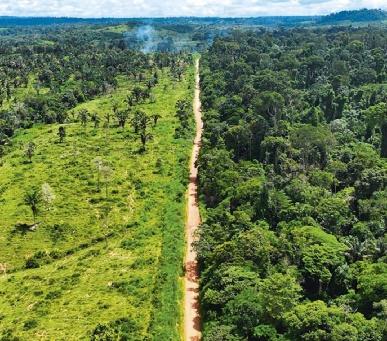
It will trace the lot, not the individual hide. Accepting the request of the European tanners' association COTANCE, Brussels has clarified an important step that represents a first major advance in relation to the infamous EU Anti-Deforestation Regulation (EUDR), which from next year will oblige operators marketing bovine hides in the European Union to verify their origin from non-deforested areas.
The Italian Tanning Union (UNIC) confirms that "some important updates emerged during the last meeting of the EU Commission's multi-stakeholder platform on EUDR." Among them was probably the most expected and important clarification: "during the meeting, Brussels verbally communicated that traceability, in the case of hides will be able to be by batches."
Given the context and the possible negative consequences that the EUDR might entail, this is undoubtedly good news for the first time. Traceability by individual hide was, after all, a requirement that was technically impossible to achieve. "The Commission's affirmation intervenes on a decisive point, marking a step forward to enable companies to comply with the requirements imposed by Regulation 1115/2023," explains UNIC. So, a necessary and opportune adjustment to a regulation that "sets objectives (those of combating from deforestation) that tanners fully share." But which, at the same time, threatens the leather sector since the current formulation of EUDR calls for the ap-
plication of traceability tools that today are not adequate to the demands. In the face of this alarm and cross-activation at multiple levels, Brussels has therefore taken up an initial request made by COTANCE and also supported by UNIC. That of tracking the batch, not the individual hide. UNIC also reports that "the Commission expects to publish before July the official guidelines to be able to properly carry out the Due Diligence declaration."
ANTI-DEFORESTAZIONE:
SI TRACCERÀ IL LOTTO, NON LA SINGOLA PELLE
Bruxelles accoglie la richiesta di COTANCE e UNIC
Si traccerà il lotto, non la singola pelle. Accogliendo la richiesta dell’associazione dei conciatori europei COTANCE, Bruxelles ha chiarito un passaggio importante che rappresenta un primo importante progresso in relazione al famigerato Regolamento UE Anti-Deforestazione (EUDR) che dal prossimo anno obbligherà gli operatori che commercializzano pelli bovine nell’Unione Europea a verificarne la provenienza da aree non deforestate. L’Unione conciaria italiana (UNIC) conferma che “sono emersi alcuni importanti aggiornamenti durante l’ultima riunione della piattaforma multi-stakeholder della Commissione UE su EUDR”. Tra questi il chiarimento probabilmente più atteso e importante: “durante la riunione, Bruxelles ha comunicato verbalmente che la tracciabilità, nel caso delle pelli, potrà avvenire per lotti”. Considerato il contesto e le possibili conseguenze negative che l’EUDR potrebbe comportare, si tratta indubbiamente di una prima buona notizia. La tracciabilità per singola pelle rappresentava del resto una richiesta tecnicamente impossibile da realizzare. “L'affermazione della Commissione interviene su un punto decisivo, segnando un passo avanti per consentire alle aziende la conformità ai requisiti imposti dal Regolamento 1115/2023” spiega UNIC. Dunque, un adeguamento necessario e opportuno a una normativa che “si pone obiettivi (quelli di combattere da deforestazione) che i conciatori condividono pienamente”. Ma che, allo stesso tempo, “minaccia il settore della pelle poiché l’attuale formulazione di EUDR prevede l’applicazione di strumenti di tracciabilità che oggi non sono adeguati alle richieste”. A fronte di questo allarme e dell’attivarsi trasversale a più livelli, Bruxelles ha recepito dunque una prima richiesta avanzata da COTANCE sostenuta anche da UNIC. Appunto quella di tracciare il lotto, non la singola pelle. UNIC segnala anche che “la Commissione prevede di pubblicare prima di luglio le linee guida ufficiali per poter realizzare correttamente la dichiarazione di Due Diligence”.
10 ARSTANNERY NEWS

ECHA CORRECTS ITS MISLEADING COMMUNICATION ON LEATHER
After complaints from COTANCE and CEC
Another blow to the industry's image comes, it is unclear how consciously, from the European Chemicals Agency (ECHA), which is accused of publishing an infographic and a Linkedin post on cancer prevention, in respect of which the consumer was led to believe that leather causes cancers because it automatically contains chromium VI. Following a complaint from the European leather (COTANCE) and footwear (CEC) organisations, ECHA formally apologised and edited the image in question and removed the post. This ECHA’s deceptive communication was pinpointed last 15th of March in a joint letter from COTANCE and CEC. They denounced an infographic on the ECHA web page of its "Preventing Cancer" campaign and the corresponding LinkedIn Post for being inaccurate and misleading, reminding the Agency: “that Chromium VI is not used for tanning leather and that Chromium


tanning is not the only tanning method in the sector. Yet, the infographic gives the impression that leather automatically contains Chromium VI, and that this presence is likely to cause cancer. This creates unjustified concerns in consumers, which may take distance from leather articles”. The letter further clarified that the actual EU restriction on Chromium VI in leather regards its potential skin sensitising properties, not its carcinogenicity.
The formal response from ECHA came on April 9, which stated: “We [ECHA] apologise for this error and have corrected the infographic, as soon as our attention was drawn to it, to reflect the actual situation. We have also removed the LinkedIn post referred to in your letter”. While COTANCE and CEC appreciate ECHA’s swift action to erase inaccurate and misleading information conveyed by its channels to the public, the leather and footwear industries express their profound disappointment over the Agency's failure to fully accept responsibility for the harm inflicted upon these sectors. “The decision to delete a post, which by then had already gone viral, does little to mend the reputation of our unjustly maligned industries, nor does it aid EU citizens in understanding what was wrong”.
ECHA CORREGGE LA SUA COMUNICAZIONE FUORVIANTE SULLA PELLE
le denunce di COTANCE e CEC
Un altro colpo all’immagine del settore arriva, non si capisce quanto consapevolmente, dall’Agenzia Europea per le Sostanze Chimiche (ECHA) rea di aver pubblicato un’infografica e un post su Linkedin dedicati alla prevenzione dai tumori, rispetto ai quali il consumatore veniva indotto a credere che le pelli delle calzature sono cancerogene perché contenenti sempre Cromo VI. In seguito alla denuncia delle organizzazioni europee della pelle (COTANCE) e della calzatura (CEC), l’ECHA si è formalmente scusata e ha modificato l’immagine in oggetto e rimosso il post.
La comunicazione ingannevole dell'ECHA è stata segnalata lo scorso 15 marzo in una lettera congiunta di COTANCE e CEC. Le due organizzazioni che rappresentano i settori pelle e calzature in Europa hanno denunciato l’errore ricordando: “che il cromo VI non viene utilizzato per la concia del cuoio e che la concia al cromo non è l'unico metodo di concia del settore. Al contrario l'infografica suggerisce che la pelle contenga automaticamente Cromo VI e che questa presenza possa causare il cancro. Ciò crea preoccupazioni ingiustificate nei consumatori, che potrebbero prendere le distanze dagli articoli in pelle”. La lettera chiarisce inoltre che l'effettiva restrizione dell'UE sul cromo VI nel cuoio riguarda le sue potenziali proprietà sensibilizzanti per la pelle, non la sua cancerogenicità. La risposta formale dell'ECHA è arrivata il 9 aprile e afferma che: “Ci scusiamo per questo errore e abbiamo corretto l'infografica, non appena ci è stato fatto notare. Abbiamo anche rimosso il post su LinkedIn a cui si fa riferimento nella vostra lettera”. Anche se COTANCE e CEC hanno apprezzato la rapida azione dell'ECHA nel cancellare le informazioni imprecise e fuorvianti trasmesse dai suoi canali al pubblico, i settori pelle e calzature esprimono la loro profonda delusione per la mancata assunzione di responsabilità da parte dell'Agenzia per il danno inflitto a questi settori.
“La decisione di cancellare un post, che a quel punto era già diventato virale, non serve a riparare il danno di immagine alle nostre industrie, ingiustamente maltrattate, né ad aiutare i cittadini dell'UE a capire l’errore” commentano COTANCE e CEC.
12 ARSTANNERY NEWS
Dopo
THE FIRST INFOGRAPHIC PUBLISHED ON THE ECHA WEBSITE SUGGESTED THE PRESENCE OF CHROMIUM VI IN LEATHER FOOTWEAR
IN THE NEW INFOGRAPHIC, THE REFERENCE TO LEATHER FOOTWEAR HAS BEEN REMOVED
LA PRIMA INFOGRAFICA PUBBLICATA SUL SITO ECHA SUGGERIVA LA PRESENZA DI CROMO VI NELLE CALZATURE IN PELLE
NELLA NUOVA INFOGRAFICA È STATO ELIMINATO IL RIFERIMENTO ALLA PELLE
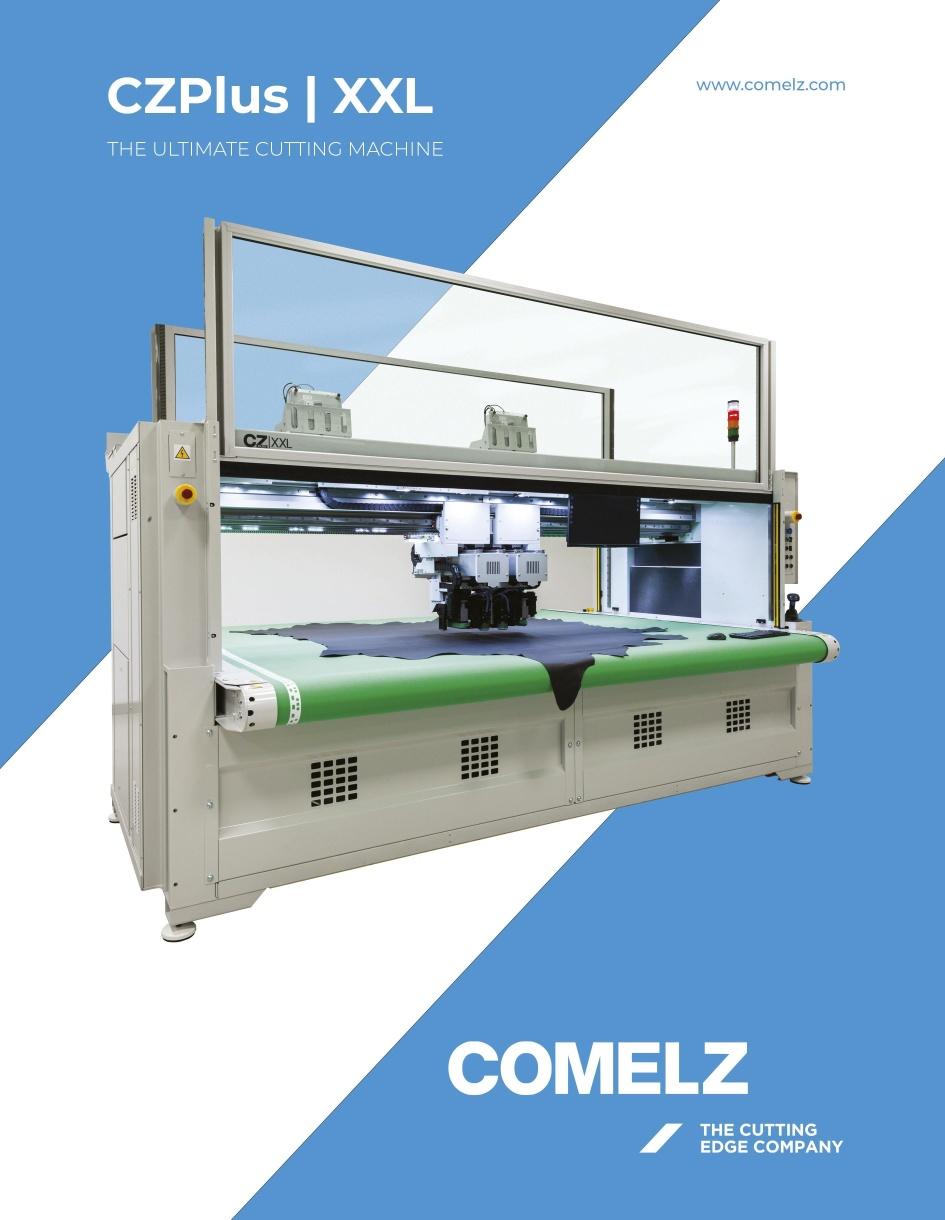
FREIBERG LEATHER DAYS IN SALZBURG
The Congress of leather chemists will present the latest advances in the industry on 12 and 13 June
It will be the Austrian city of Salzburg on 12 and 13 June that will host the 2024 edition of the Freiberg Leather Days, the Congress dedicated to leather chemists organised by the German association VGCT, together with the FILK research institute, one year in Freiberg and the following year abroad.
As many as 25 specialist conferences with speakers from 10 countries are scheduled. This year's opening lecture is entitled 'Pastoralism: a sustainable and nature-positive production system' by Mascha Kaddori, Tierärzte ohne Grenzen e.V., Berlin (DE).
Supported by VÖLT, the Austrian leather technicians association, which will do the honours, the VGCT and FILK have as always invited experts, researchers and specialists to exchange ideas and take an active part in defining the technical content.
The rich conference programme includes a presentation on Green Deal Leather by Andreas Meyer of VDL, a talk on the Carbon Footprint of leather by Ivan Kral of UNIDO, a study on biocide residues in leather by Andreas Weckmann of Lanxess, and much more.
The event will be held at the IMLAUER Hotel Pitter, close to the famous Mirabell Gardens and the Mozart residence. For the complete programme and to register for the event, visit https://www.freibergleatherdays.com/
A SALISBURGO I FREIBERG LEATHER DAYS
Il Congresso dei chimici conciari presenterà gli ultimi progressi del settore il 12 e 13 giugno
Sarà la città austriaca di Salisburgo il 12 e 13 giugno prossimi ad ospitare l’edizione 2024 dei Freiberg Leather Days, il Congresso dedicato ai chimici della pelle organizzato dall’associazione tedesca VGCT, insieme all’Istituto di ricerca FILK, un anno a Freiberg e l’anno dopo all’estero.
In programma ben 25 conferenze specialistiche con relatori provenienti da 10 paesi. La conferenza d’apertura di quest'anno ha per titolo: "La pastorizia: un sistema di produzione sostenibile e positivo per la natura" di Mascha Kaddori, Tierärzte ohne Grenzen e.V., Berlino (DE). Supportati dalla VÖLT, l’associazione chimico conciaria austriaca che farà gli onori di casa, la VGCT e la FILK hanno come sempre invitato esperti, ricercatori e specialisti a scambiare idee e a partecipare attivamente alla definizione dei contenuti tecnici.
Nel ricco programma di conferenze spiccano una presentazione sul Green Deal Leather da parte di Andreas Meyer di VDL, una relazione sulla Carbon Footprint della pelle da parte di Ivan Kral di UNIDO, uno studio sui residui di biocidi nella pelle da parte di Andreas Weckmann di Lanxess e molto altro ancora.
L'evento si terrà presso l'IMLAUER Hotel Pitter, vicino ai famosi Giardini Mirabell e alla residenza di Mozart.
Per il programma completo e per iscriversi all'evento, visitare il sito https://www.freibergleatherdays.com/


14 ARSTANNERY NEWS
LA CITTÀ VECCHIA DI SALISBURGO VISTA DAL FIUME
SALZBURG'S OLD TOWN AS SEEN FROM THE RIVER

CEC SIGNS MANIFESTO TO BOOST EUROPEAN
COMPETITIVENESS
Together with 85 other organisations, the European Footwear Confederation calls for action to counter the risk of deindustrialisation
The European Footwera Confederation (CEC) has joined forces with 85 others European and national industry associations to publish the European Industry Manifesto “Relaunching European Competitiveness”. The Manifesto calls against the risk of de-industrialisation on our continent by relaunching Europe’s competitiveness.
The EU enters a new policy cycle at a challenging time, with technology and geopolitics acting as global disruptors, adding pressure to an already difficult economic situation.
“Now is the time to start building a strategic plan that unlocks the Single Market’s full potential and builds a regulatory environment for Europe industry to remain globally competitive”.
The organisations involved highlighted five priorities as part of this objective, including: repositioning Europe as a world leader in trade; embracing a horizontal approach to the single market and EU competitiveness; building a joint strategy to strengthen value chain resilience; protecting jobs and consumers; bridging the innovation gap; and nurturing talent and skills.
“The success of Europe’s trade policy is directly connected to a smart regulatory environment that consolidates our Single Market. This again points to the importance of ensuring a level playing field; the regulatory framework needs to be respected by all EU- and non-EU products and for that we need more market surveillance and customs controls” said Carmen Arias, CEC Secretary General.
LA CEC FIRMA IL MANIFESTO PER IL RILANCIO DELLA
COMPETITIVITÀ
EUROPEA
Insieme ad altre 85 organizzazioni, la Confederazione Europea della Calzatura sollecita interventi per contrastare il rischio di deindustrializzazione
La Confederazione Europea della Calzatura (CEC) ha unito le forze con altre 85 associazioni industriali europee per pubblicare il Manifesto per “Rilanciare la competitività europea”, un documento comune che invita a contrastare il rischio di deindustrializzazione del nostro continente, rilanciando appunto la competitività dell’Europa.
L’Unione Europea sta per entrare in un nuovo ciclo politico in un momento difficile, con la tecnologia e la geopolitica che agiscono come fattori di disturbo globali, aggiungendo pressione a una situazione economica già difficile. “È il momento di iniziare a costruire un piano strategico che liberi il pieno potenziale del mercato unico e crei un ambiente normativo che permetta all’industria europea di rimanere competitiva a livello globale” spiegano dalla CEC.
Le organizzazioni coinvolte hanno evidenziato cinque priorità come parte di questo obiettivo, tra cui: riposizionare l'Europa come leader mondiale nel commercio, adottare un approccio orizzontale al mercato unico e alla competitività dell'UE, costruire una strategia congiunta per rafforzare la resilienza della catena del valore, proteggere i posti di lavoro e i consumatori, colmare il divario di innovazione e coltivare talenti e competenze.
“Il successo della politica commerciale europea è direttamente collegato a un ambiente normativo intelligente che consolida il nostro mercato unico. Questo sottolinea ancora una volta l'importanza di garantire condizioni di parità; il quadro normativo deve essere rispettato da tutti i prodotti dell'UE e non, e per questo abbiamo bisogno di una maggiore sorveglianza del mercato e di controlli doganali” ha dichiarato Carmen Arias, segretario generale della CEC.
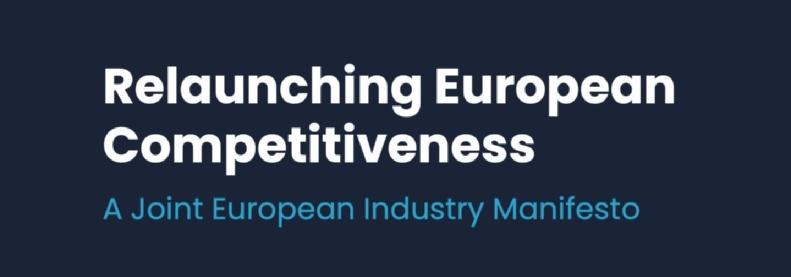
16 ARSTANNERY NEWS

AICC: NEW FRONTIERS IN LEATHER PRODUCTION
At the National Conference of Leather Chemists on May 17, the future is mapped out
Massive participation by tanners and leather technicians at the 52nd AICC National Conference held on May 17 in Chiampo, Vicenza. After all, the topic on the agenda was decidedly intriguing: "New Frontiers in Leather Production" with speakers representing some of the major companies in the industry. Doing the honors were AICC Secretary Renato Bertoli and President Franca Nuti who welcomed Chiampo Mayor Filippo Negro and all the speakers.
The proceedings were kicked off by Ralph Günther Blach and Fabio Lupi of Stahl, who spoke about the advantages of "Hyperfunctional Polycarbodiimide Crosslinkers for Aqueous Leather Finishes" which are an alternative that can offer important technical and environmental advantages over traditional crosslinkers.
Giulio Galiotto of Erretre gave a talk titled "Dry Milling as a control tool" during which he presented the results of tests carried out together with a New Zealand University on the effects that dry milling produces in the distribution of fat-
liquors within leather fibers. Galiotto also spoke about the importance of the data that today's tannery machines are able to produce: the analysis of these numbers, Galiotto explained, represents the real "game changer" at the technological level today, as they offer the opportunity to optimize processing.
Luca Ramadori of Arco illustrated the results of a "Biocide Migration Study" which, in addition to explaining the crucial importance of these products for the preservation of leather, showed that on samples of various types of leather - analyzed after being treated with the active ingredients allowed by the regulations - no traces of biocide could be detected.
There was a return to the subject of machinery with Gianni Maitan of Gemata who presented the "New finishing technology with release paper for buffed and full grain leathers," illustrating the many technical, economic and environmental advantages of this type of processing, which in fact is enjoying great success on the market.
Concluding the conference was a paper by Riccardo Pasquale

18 ARSTANNERY EVENTS
PUBBLICO DELLE GRANDI OCCASIONI AL 52° CONVEGNO NAZIONALE AICC
LARGE AUDIENCE AT THE 52ND AICC NATIONAL CONVENTION
of GSC Group dedicated to "Utilization of Bio-based Products - Assessment and LCA Assessment for the Future of Leather Production". Based on extensive studies carried out by the Veneto-based leather chemicals company, the researcher
Le relazioni presentate al Convegno AICC hanno approfondito tematiche di grande attualità per il progresso chimico e tecnologico del settore conciario
pointed out that a tanning chemistry based on bio-based components contributes to mitigating climate change, although from the point of view of final purification the loads are increased and that therefore the systems currently in use require adaptations.

AICC: LE NUOVE FRONTIERE NELLA PRODUZIONE DELLA PELLE
Al Convegno Nazionale dei Chimici del Cuoio del 17 maggio si traccia il futuro
Partecipazione massiccia di conciatori e tecnici conciari al 52° Convegno Nazionale AICC svoltosi il 17 maggio scorso a Chiampo (Vicenza). Del resto, il tema all’ordine del giorno era decisamente intrigante: “Nuove frontiere nella produzione della pelle” con la partecipazione di relatori che rappresentano alcune delle maggiori aziende del settore. A fare gli onori di casa il segretario AICC Renato Bertoli e la presidente Franca Nuti che hanno dato il benvenuto al sindaco di Chiampo Filippo Negro e a tutti i relatori.
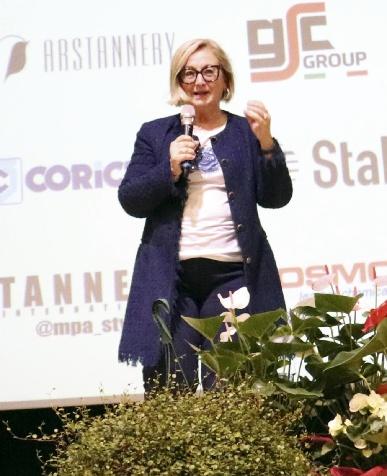
ARSTANNERY 19 EVENTS
IL SINDACO DI CHIAMPO FILIPPO NEGRO LA PRESIDENTE AICC FRANCA NUTI CHIAMPO MAYOR FILIPPO NEGRO AICC PRESIDENT FRANCA NUTI
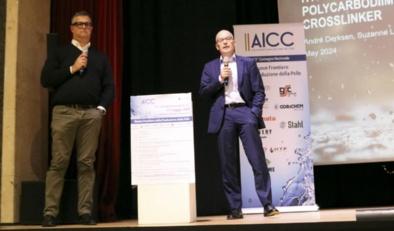

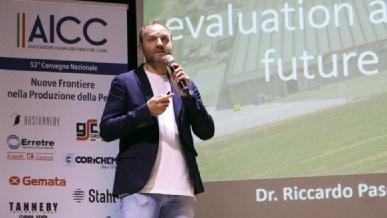

I lavori sono stati avviati da Ralph Günther Blach e Fabio Lupi di Stahl che hanno parlato dei vantaggi dei “Reticolanti policarbodiimidici iperfunzionali per le finiture acquose delle pelli” che rappresentano un’alternativa in grado di offrire importanti vantaggi tecnici e ambientali rispetto ai reticolanti tradizionali.
Giulio Galiotto di Erretre ha svolto una relazione intitolata “La follonatura come strumento di controllo” durante la quale ha presentato i risultati di test eseguiti insieme ad una Università neozelandese sugli effetti che la follonatura produce nella distribuzione degli ingrassi all’interno delle fibre della pelle. Galiotto ha anche parlato dell’importanza dei dati che le macchine per conceria oggi sono in grado di produrre: l’analisi di questi numeri – ha spiegato Galiotto – rappresenta oggi il vero “game changer” a livello tecnologico, in quanto offrono l’opportunità di ottimizzare le lavorazioni.
Luca Ramadori di Arco ha illustrato i risultati di uno “Studio sulla migrazione dei biocidi” che, oltre a spiegare l’importanza cruciale di questi prodotti per la conservazione della pelle, ha dimostrato come sui campioni di pelli di varia tipologia - analizzati dopo essere stati trattati con i principi attivi ammessi dalla normativa - non sia rilevabile alcuna traccia di biocida.
Si è tornati a parlare di macchinari con Gianni Maitan di Gemata che ha presentato la “Nuova tecnologia di rifinizione con carta release per pelli smerigliate e pieno fiore” illustrando i molteplici vantaggi tecnici, economici e ambientali di questo tipo di lavorazione che infatti sta riscuotendo molto successo sul mercato.
A concludere il Convegno, la relazione di Riccardo Pasquale di GSC Group dedicata alla “Utilizzazione di prodotti bio-based - Valutazione e LCA Assessment per il futuro della produzione della pelle”. Sulla base di studi approfonditi effettuati dall’azienda chimico-conciaria veneta, il ricercatore ha sottolineato come una chimica conciaria a base di componenti bio-based contribuisca a mitigare il cambiamento climatico, anche se dal punto di vista della depurazione finale i carichi risultano maggiorati e che pertanto i sistemi attualmente in uso richiedono adattamenti.

20 ARSTANNERY EVENTS
GIULIO GALIOTTO OF ERRETRE
LUCA RAMADORI OF ARCO
RICCARDO PASQUALE OF GSC GROUP
GIANNI MAITAN OF GEMATA

NEW EUROPEAN SUSTAINABILITY REGULATIONS AFFECT EVERYONE, NOT JUST THE BIG NAMES
There is no more time, the new regulations approved at EU level will affect entire production chains, not just the big names. In order not to lose customers, data must be consciously collected, managed and communicated.

“According to EU rules, companies must provide truthful information to consumers and must refrain from deceiving them in order to influence their choices. EU rules on unfair commercial practices allow national enforcement authorities to curb a wide range of unfair commercial practices.” So reads part of the article published at the end of February on the European Commission’s website about Zalando’s commitment, following a dialogue with the European Commission itself, to remove misleading sustainability labels and icons
appearing next to products offered on its platform. Indications that could mislead consumers about the environmental characteristics of products. Instead, Zalando will provide clear information about the environmental benefits of products, such as the percentage of recycled materials used. This is just a case study to introduce the topic of this article which would like to make the shoe and bag production chain aware of the important changes coming up on the sustainability front: the Green Deal promoted by the European Union is in full
implementation and companies need to be increasingly aware of this so as to organise themselves adequately to comply with the demands coming from their customers, on pain of a loss of competitiveness that could put them out of the market.
STATE OF THE ART OF EUROPEAN REGULATIONS
European regulations are pushing companies towards environmentally friendly design, reporting and monitoring of supply chains in order to provide reliable and measurable information. After the entry into force of the Zero Deforestation Supply Chains Regulation (approved in 2023), CSRD and Green Claims, the European Parliament passed two more measures on 24 April: the Ecodesign Regulation and the CSDDD Directive. The Zero Deforestation Supply Chain Regulation and the Corporate Sustainability Due Diligence Directive (CSDDD) require companies to have greater control over their supply chain. The most recent CSDDD requires large companies (1,000 employees and 450 million revenue and above) to check that practices that harm the environment, workers and local communities do not occur along their supply chains. The Green Claims and CSRD directives, on the other hand, are about communicating the level of sustainability of products and the impact of fashion companies. They aim to reduce greenwashing practices by substituting reliable or measurable information for ‘green’ and ‘sustainable’ claims and consolidate sustainability reporting obligations. The approved Ecodesign Regulation (ESPR) will oblige companies, by 31 December 2030, to design products to be circular
22 ARSTANNERY NEWS
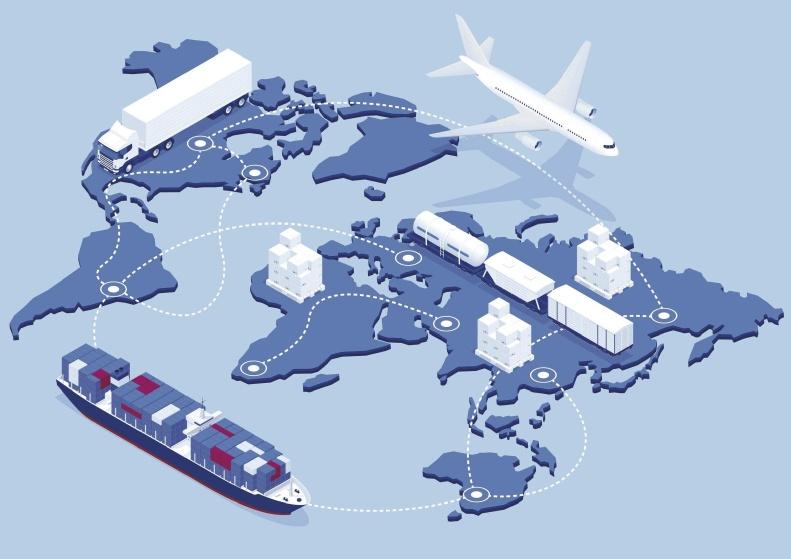
and durable, to equip them with a digital passport tracking their production steps and to provide consumers with information on how to maintain or repair the product. Finally, it will prohibit the destruction of unsold products. All these regulations envisage a cultural change in a broad sense for companies: measuring the real impact of products based on scientific data.
THE DIFFICULT PROCESS OF THE CSDDD STANDARD
Examining the complicated process that led to the approval of the CSDD standard allows us to highlight the pros and cons of the legislative framework from the outset. The directive, which was approved at second reading in Strasbourg on 24 April, had a complex process that led to a significant reduction in its scope of application.
“Thanks to pressure from the Italian Confindustria (Confederation of Italian
Industry) and the German equivalent, at the urging of Confindustria Moda together with national trade associations, the EU was asked to revise the rule that initially would have involved all large and medium-sized companies in our sector”, says Giovanna Ceolini, President of Assocalzaturifici. “The revision of the rule in terms of timing and implementation has avoided a devastating impact on the entire fashion production chain”. Specifies Martina Schiuma, Impact Manager at The ID Factory: “Italy has opposed these laws not so much on the merits, which everyone considers to be correct, but because the costs of compliance for a company that has never structured processes aimed at due diligence dynamics are not measurable. Because the investments it implies do not only concern the auditing of suppliers, but the company structure itself, at the level of management systems, which is often inadequate. The issue becomes
more complicated if we consider that, to date, the management systems used by companies are many, and not shared along the supply chain. It is in this specific context that The ID Factory and Ympact were born, two SaaS solutions structured for the collection of extended supply chain data and the return of this data within the management systems currently in use in each company”.
A regulation approved following many compromises that particularly concerned the company size of application. Although the rule, rewritten with respect to December 2023, reduces the companies involved by almost 50%, in reality the implications on smaller companies remain and will be very real, even if to date little perceived.
ALL COMPANIES ARE AFFECTED
Right now, according to Ceolini, the real issue is not to ask which companies
ARSTANNERY 23 NEWS
actually fall within the scope of the rule, but what will be the impact of the rule on the many companies, large and small, that work for the most prominent brands. “There is still very little awareness in the industry of how much these regulations will affect all the companies in the supply chain, which will be obliged to provide data on their production activities”, says Ceolini.
Francesca Rulli, CEO and Founder of Process Factory and 4sustainability®, also agrees, explaining her point of view by broadening the picture: “Europe is the first continent aiming for Net Zero by 2050, so it pays very strong attention to the issue of reducing environmental impact.
Simplifying, the Green Deal’s regulatory complex covers 3 areas:
- ECO-DESIGN: which pushes organisations to design the product differently right from its conception;
- SUPPLY CHAIN: which broadens the due diligence on the supply chain to assess the environmental and social risks and impacts of the production system;
- PRODUCT: which leads to the management of data on the product and its production method through the Digital Product Passport to give transparency to the consumer and the logic of extended responsibility or circularity”.
According to Rulli, this strategic framework can only lead to all companies having to map, analyse and assess their risks and impacts, and if necessary implement strategies to limit or solve them: “When we ask ourselves - continues Rulli - to whom these regulations apply, the formally correct answer is ‘only to the largest companies for the time being’, but in reality all the links upstream in the chain are inevitably involved, the rationale of the whole strategy being to control production systems on the one hand and to extend the life cycle on the other. And for small or medium-sized companies, it is important that this awareness spreads: the challenge to be faced is to consciously manage their data. It is essential that companies collect data competently, respond to assessments and monitoring systems with a scientific and structured approach, because that information and that data will determine their rating, their impact assessment. “It is essential to be aware that the data you provide is relevant and determines risk and impact assessments that weigh on your own business and that of your customers”, reiterates Rulli.
From these considerations and from the collaboration with hundreds of companies in the fashion supply chain as well as numerous Brands, the 4sustainability® system was born,

24 ARSTANNERY NEWS
which allows the collection of impact data on 6 environmental and social dimensions aligned to the best market methodologies, stimulating the implementation of risk and impact reduction actions periodically verified to design from green and social washing.
There are now thousands of supply chain companies on the Ympact platform running the 4sustainability model, of which more than 500 have verified data and more than 250 have achieved certified levels of implementation. It is precisely these supply chains, capable of managing data and improving it, that are better able to meet current market demands and, tomorrow, will face the challenges of regulation.
WHAT TO DO
In 2026, the first reports on the tracking of supply chain risks involving Tier 1 and 2 w ill have to be formulated. So, what to do in view of these deadlines?
Let’s start with the data collection methodology on which the regulation is based, the one proposed by the OECD - Organisation for Economic Co-operation and Development, which outlines the 4 steps needed to express one’s ability to manage risks:
- map suppliers;
- collect data to assess risk and environmental and social impact;
- implementing mitigation actions (correction of processes, correction of risk assumptions, even redesigning one’s supply chain);
- report periodically. This step is linked to the Sustainability Reporting legislation.
“If these are the requirements, it is easy to understand - Martina Schiuma argues - that companies will also have to structure themselves from a technological point of view, since the duty of reporting will force them to abandon manual, poorly organised and fragmented methods of data collection, otherwise they will be unable to demonstrate the validity of their actions.
Therefore, we will not only witness a social and environmental revolution, but also a technological one, because if those players who have not been able to promote their activities through the new online media have lost their customers, today those who will not be able to structure themselves with an internal data collection and a system of analysis and sharing

ARSTANNERY 25 NEWS
with their corporate customers will suffer a considerable loss of competitiveness, to the point of risking being ousted from the market”.
Schiuma continues with a very clear piece of advice: “It is important to equip oneself, as a company or, even better, as a group of companies, with one’s own data collection and analysis platform so as to be able to manage it in the best possible way without ‘suffering’ customer demands. Those who do not choose this path risk finding themselves in the situation of having to report on many different systems, which would turn into a cost rather than added value. The moment that the account of my virtuous actions is available to everyone without the need for special efforts, but only against a good organisation, a potential competitive advantage over competitors would be achieved”.
Lorenzo Saa of Clarity AI is of the same opinion: “You have to be prepared to have in-depth data, people and systems capable of managing it and delivering it to your customers, bearing in mind that the demands might be similar in substance but different in form. One has to be ready to change one’s processes in case they do not conform to customers’ risk assessments”. Given the complexity of the subject, Clarity AI is betting heav-
ily, as the name suggests, on the use of Artificial Intelligence: “Because we think it is a tool through which we can bring scale, efficiency and quality to the information that we then make available to investors, clients and consumers. You think that once you get past the first level of suppliers, you very quickly find yourself having to report on a wide range of different companies. Perhaps located in countries outside the EU and that provide very little information, which can also be difficult to find due to the language and cultural barrier. In this case, the help of Artificial Intelligence can be not only successful, but also indispensable”.
Giovanna Ceolini notes, however, a critical issue inherent in the regulations: “The sustainability certification label for footwear companies VCS - Verified and Certified Steps, which we are proposing as Assocalzaturifici, responds exactly to the demands and requests for data sharing and certification by major brands. But footwear companies still have a very lukewarm approach to the topic of sustainability. The reason is simple: all the platforms available today are a cost that companies struggle to meet. We are advising companies to equip themselves with these tools, but we realise the sacrifice and the difficulties that companies have to face”.

26 ARSTANNERY NEWS
CRITICALITY
This is not the only shadow hanging over the new European legislation. “It is certainly important to record the courage and positive impact of the regulations that the EU is proposing; however, one cannot fail to note some difficulties in grounding them”, says Saa of Clarity AI. And they continue: “The lack of specific parameters indicating which data to collect, how to collect it and according to which criteria to assess risk, expose the industry to uncertainty, confusion and relativism. The supply chain could be faced with a considerable amount of different requests, including data requests from its customers. More detail on the specific methodologies to be adopted in data collection and evaluation by the European Commission or other authorities may be useful”. Ceolini elaborates further: “Unfortunately, those that have been passed are directives and not regulations. Therefore, it will be up to each state to apply them and formulate its own laws in this regard. This is a very negative aspect because there is a high risk of inhomogeneity within the European Union itself. The landscape in which we will have to operate will be even more complex”. Assocalzaturifici warns against 3 other critical aspects: “The obligation for large brands to control and be responsible for the supply chains could lead to the further growth of the take-over phenomenon, which has already been going on for some time. This is a systemic risk, as it could impoverish our industry in terms of skills and human resources. Another issue that we are strongly submitting to the legislator concerns international competition. It would be good if the obligations to which European production is currently subject were also extended to all products sold in Europe, otherwise the risk that the market will be further distorted by non-compliant, but much more competitive imports will increase even more”.
Finally, Assocalzaturifici notes a fact: “It is true that companies must become more aware of the importance of sustainability issues and plan development plans to structure themselves in this sense. At the same time, at the moment, the sustainability theme is very much felt upstream of the product, i.e. by big brands, but much less so downstream, by consumers. Our data, in fact, tell of a consumer who today does not recognise any pluses in sustainable products. It is not true that buyers are willing to spend more for a sustainable product. Today, the market is strongly polarised between those who can still afford luxury, which has in any case lost its inspirational allure, and those who are looking to buy good mid-range products while paying close attention to price”.
CONCLUSION
“Italy must live this historic moment as a great opportunity to capitalise on the great work done in the past decades, measure it and communicate it. We are excellent in many areas, we must also become excellent in data management”, Francesca Rulli concludes positively. Organising oneself to comply with the new regulations can therefore become a competitive advantage, despite the many difficulties highlighted, but it must be done as soon as possible through training and corporate structuring processes that can no longer be postponed, as well as structured and market-validated tools, from which users will easily benefit.
LE NUOVE NORME EUROPEE SULLA SOSTENIBILITÀ
RIGUARDANO TUTTI, NON SOLO
I GRANDI
Non c’è più tempo, i nuovi regolamenti approvati a livello di Unione Europea coinvolgeranno intere filiere produttive, non solo le grandi firme. Per non perdere clienti bisogna raccogliere, gestire e comunicare i dati in modo consapevole.
Secondo le norme dell’Unione Europea, le imprese devono fornire informazioni veritiere ai consumatori e devono astenersi dall’ingannarli per influenzarne le scelte. Le norme dell’UE sulle pratiche commerciali sleali consentono alle autorità nazionali di controllo di arginare un’ampia gamma di pratiche commerciali sleali.” Così recita parte dell’articolo pubblicato a fine febbraio sul sito della Commissione Europea in cui si parla dell’impegno preso da Zalando, a seguito di un dialogo con la stessa Commissione Europea, a rimuovere le ingannevoli etichette e icone di sostenibilità che compaiono accanto ai prodotti offerti sulla sua piattaforma. Indicazioni che potevano indurre in errore i consumatori riguardo le caratteristiche ambientali dei prodotti. Zalando fornirà, invece, informazioni chiare sui vantaggi ambientali dei prodotti, come la percentuale di materiali riciclati utilizzati. È solo un caso di studio per introdurre il tema di questo articolo che vorrebbe rendere consapevole la filiera produttiva di scarpe e borse degli importanti cambiamenti in arrivo sul fronte sostenibilità: il Green Deal promosso dall’Unione Europea è in piena attuazione e le aziende devono esserne sempre più consapevoli così da organizzarsi in modo adeguato per risultare conformi alle richieste che giungeranno dai propri clienti, pena una perdita di competitività che potrebbe porle fuori dal mercato.
STATO DELL’ARTE DELLA NORMATIVA EUROPEA
Le normative europee spingono le aziende verso una progettazione eco compatibile, la rendicontazione e il monitoraggio delle catene di approvvigionamento, così da poter fornire informazioni attendibili e misurabili.
Dopo l’entrata in vigore del regolamento sulle catene di fornitura a deforestazione zero (approvato nel 2023), della CSRD e della Green Claims, il 24 aprile scorso il Parlamento Europeo ha licenziato altri due provvedimenti: il regolamento Ecodesign e la direttiva CSDDD. Il regolamento sulle Catene di Approvvigionamento a Deforestazione Zero e la Corporate Sustainability Due Diligence Directive (CSDDD) impongono alle aziende un controllo maggiore sulla propria filiera. La più recente CSDDD impone alle grandi aziende (da 1.000 dipendenti e 450 milioni di ricavi in su) di controllare che lungo le loro supply chain non
ARSTANNERY 27 NEWS
si verifichino pratiche che danneggiano l’ambiente, i lavoratori e le comunità locali.
Le direttive Green Claims e CSRD riguardano, invece, la comunicazione del livello di sostenibilità dei prodotti e dell’impatto delle aziende della moda. Si punta a ridurre le pratiche di greenwashing sostituendo informazioni attendibili o misurabili alle diciture “green” e “sostenibile”, e si consolidano gli obblighi di rendicontazione della sostenibilità. L’approvato regolamento sull’Ecodesign (ESPR) obbligherà le aziende, entro il 31 dicembre 2030, a progettare i prodotti affinché siano circolari e durevoli, a dotarli di un passaporto digitale che ne tracci i passaggi produttivi e fornisca ai consumatori informazioni per mantenere o riparare il prodotto. Infine, vieterà la distruzione dell’invenduto. Tutte queste norme prevedono un cambio culturale in senso lato per le aziende: la misurazione del reale impatto dei prodotti basandosi su dati scientifici.
IL DIFFICILE ITER DELLA NORMA CSDDD
Esaminare il complicato iter che ha portato all’approvazione della norma CSDDD ci permette di evidenziare fin da subito pro e contro dell’impianto legislativo.
La direttiva, approvata in seconda lettura a Strasburgo il 24 aprile, ha avuto un iter complesso che ha comportato una riduzione sensibile del suo perimetro di applicazione.
“Grazie alle pressioni della Confindustria italiana e dell’equivalente tedesco, su spinta di Confindustria Moda insieme alle associazioni nazionali di categoria, si è chiesto all’UE di rivedere la norma che inizialmente avrebbe coinvolto tutte le grandi e medie imprese del nostro settore”, racconta Giovanna Ceolini, Presidente di Assocalzaturifici. “La revisione della norma nei tempi e nei modi di attuazione ha evitato una ricaduta devastante su tutta la filiera produttiva della moda”. Specifica Martina Schiuma, Responsabile d’Impatto presso The ID Factory: “L’Italia si è opposta a queste norme non tanto nel merito, da tutti ritenuto corretto, ma perché non sono misurabili i costi di adeguamento per un’azienda che non ha mai strutturato processi finalizzati a dinamiche di due diligence. Perché gli investimenti che implica non riguardano solo l’auditing dei fornitori, ma la stessa struttura aziendale, a livello di sistemi gestionali, spesso non adeguata. Il tema si complica se si considera che, ad oggi, i sistemi gestionali usati dalle aziende sono tanti, e non condivisi lungo la filiera. In questo contesto specifico sono nate The ID Factory e Ympact, due soluzioni SaaS strutturate per la raccolta dati di filiera estesa e la restituzione di tali dati all’interno dei sistemi gestionali attualmente in uso in ciascuna azienda”.non esistono sistemi tecnologici così avanzati da poter coprire ogni casistica e in poco tempo rendere conformi le aziende alle richieste della normativa”. Una normativa approvata a seguito di molti

28 ARSTANNERY NEWS
compromessi che hanno riguardato in particolare la dimensione aziendale di applicazione. Per quanto la norma, riscritta rispetto a dicembre 2023, riduca di quasi il 50% le aziende coinvolte, in realtà le implicazioni sulle aziende più piccole restano e saranno molto concrete, anche se ad oggi poco percepite.
TUTTE LE AZIENDE SONO COINVOLTE
In questo momento, secondo Ceolini, il tema vero non è chiedersi quali aziende rientrino effettivamente nel perimetro della norma, ma quale sarà l’impatto della norma sulle tante aziende, grandi e piccole, che lavorano per i marchi più in vista. “Nel settore c’è ancora pochissima consapevolezza di quanto queste norme andranno a riverberarsi su tutte le aziende della filiera, le quali saranno obbligate a fornire dati sulla propria attività produttiva”, dichiara Ceolini.
Concorda anche Francesca Rulli, CEO e Founder di Process Factory e 4sustainability®, che motiva il suo punto di vista ampliando il quadro: “L’Europa è il primo continente che tende a Net Zero entro il 2050, quindi pone un’attenzione molto forte al tema della riduzione dell’impatto ambientale. Semplificando, il complesso normativo del Green Deal riguarda 3 ambiti:
- ECO-DESIGN: che spinge le organizzazioni a progettare in modo diverso il prodotto fin dalla sua ideazione;
- FILIERA: che allarga il dovere di diligenza sulla filiera, per valutare rischi e impatti ambientali e sociali del sistema produttivo;
- PRODOTTO: che porta alla gestione dei dati relativi al prodotto e alla sua modalità di produzione attraverso il Digital Product Passport per dare trasparenza al consumatore e alle logiche di responsabilità estesa o circolarità”.
Secondo Rulli, questo impianto strategico non può che portare tutte le aziende a dover mappare, analizzare e valutare i propri rischi e impatti, e nel caso implementare strategie per limitarli o risolverli: “Quando ci si chiede – continua Rulli - a chi sono applicabili queste norme, la risposta formalmente corretta è ‘solo alle aziende più grandi per il momento’, ma in realtà sono inevitabilmente coinvolti tutti gli anelli a monte della catena, essendo la ratio di tutta la strategia quella del controllo dei sistemi produttivi da una parte e di estensione del ciclo di vita dall’altra”. E per le piccole o medie imprese è importante che questa consapevolezza si diffonda: la sfida da fronteggiare riguarda una gestione consapevole dei propri dati. È fondamentale che le aziende raccolgano dati con competenza, rispondano ad assessment e sistemi di monitoraggio con approccio scientifico e strutturato, perché quelle informazioni e quei dati determineranno il loro rating, la loro valutazione di impatto. “È essenziale essere consapevoli che i dati che si forniscono sono rilevanti e determinano valutazioni di rischio e di impatto che pesano sul proprio business e su quello dei clienti”, ribadisce Rulli. Da queste considerazioni e dalla collaborazione con centinaia di aziende della filiera moda oltre che di numerosi Brand, è nato il sistema 4sustainability®, che permette di raccogliere i dati di impatto su 6 dimensioni ambientali e sociali allineate alle migliori metodologie di mercato, stimolando l’implementazione di azioni di riduzione del rischio e dell’impatto verificate periodicamente per progettere da green e social washing.
Sono migliaia oggi le aziende di filiera presenti nella piattaforma Ympact che esegue il modello 4sustainability, di queste oltre 500 hanno hanno dati verificati e oltre 250 hanno raggiunti livelli di implementazione attestati. Proprio queste filiere, capaci di gestire dati e migliorarli, meglio affrontano le richieste attuali del mercato e, domani, affronteranno le sfide della normativa”.
COSA FARE
Nel 2026 dovranno essere formulati i primi report riguardanti il tracciamento dei rischi di filiera che coinvolgeranno i Tier 1 e 2. Quindi, cosa fare in vista di queste scadenze?
Partiamo dalla metodologia di raccolta dati su cui si basa la normativa, quella proposta dalla OECD - Organization for Economic Co-operation and Development, in cui vengono indicati i 4 passi necessari per esprimere la propria capacità di gestire i rischi:
- mappare i fornitori;
- rilevare i dati utili a valutare il rischio e l’impatto ambientale e sociale;
- porre in atto azioni di mitigazione (correzione di processi, correzioni delle ipotesi di rischio, finanche il ridisegno della propria filiera);
- rendicontare periodicamente. Questa fase è collegata alla normativa sul Reporting di sostenibilità.
“Se queste sono le esigenza è facile capire – sostiene Martina Schiuma - che le aziende dovranno strutturarsi anche dal punto di vista tecnologico poiché il dovere di rendicontazione obbligherà ad abbandonare metodi manuali, poco organizzati e frammentati di raccolta dati, pena l’incapacità di dimostrare la validità delle proprie azioni”. Non si assisterà, quindi, a una rivoluzione solo sociale e ambientale, ma anche tecnologica, perché se quegli attori che non sono stati in grado di promuovere le proprie attività attraverso i nuovi media online hanno perso i propri clienti, oggi chi non sarà in grado di strutturarsi con una raccolta dati interna e un sistema di analisi e condivisione con i propri clienti corporate, subirà una notevole perdita di competitività, fino a rischiare l’estromissione dal mercato. Schiuma prosegue con un consiglio molto chiaro: “È importante dotarsi, come azienda o, ancora meglio, come gruppo di aziende di una propria piattaforma di raccolta e analisi dei dati così da poterla gestire al meglio senza ‘subire’ le richieste dei clienti. Chi non sceglie questa strada rischia di trovarsi nella situazione di dover rendicontare su tanti sistemi diversi, il che si trasformerebbe in un costo piuttosto che in un valore aggiunto. Nel momento in cui il racconto delle mie azioni virtuose è a disposizione di tutti senza la necessità di particolari sforzi, ma solo a fronte di una buona organizzazione, si conseguirebbe un potenziale vantaggio competitivo rispetto ai concorrenti”.
È della stessa idea Lorenzo Saa di Clarity AI: “Bisogna prepararsi a disporre di dati approfonditi, di persone e sistemi in grado di gestirli e fornirli ai propri clienti, tenendo in conto che le richieste potrebbero essere simili nella sostanza, ma differenti nella forma. Bisogna essere pronti a modificare i propri processi nel caso non fossero conformi alle valutazioni di rischio dei clienti”. Vista la complessità del tema Clarity AI sta puntando molto, come il
ARSTANNERY 29 NEWS
nome stesso lascia immaginare, sull’utilizzo dell’Intelligenza Artificiale: “Perché pensiamo che sia uno strumento attraverso il quale possiamo portare scala, efficienza e qualità alle informazioni che poi mettiamo a disposizione di investitori, clienti e consumatori. Si pensi che, una volta superato il primo livello di fornitori, ci si ritrova molto rapidamente a dover rendicontare riguardo un’ampia gamma di aziende diverse. Magari situate in paesi al di fuori dell’UE che mettono a disposizione pochissime informazioni, difficili da reperire anche a causa della barriera linguistica e culturale. In questo caso l’aiuto dell’Intelligenza Artificiale può risultare non solo vincente, ma anche indispensabile”.
Giovanna Ceolini rileva, però, una criticità insita nella normativa: “Il marchio di certificazione della sostenibilità per le aziende calzaturiere VCS - Verified and Certified Steps, che proponiamo come Assocalzaturifici, risponde esattamente alle richieste e alle sollecitazioni di condivisione dei dati e della loro certificazione da parte dei grandi marchi. Ma le aziende calzaturiere hanno un approccio ancora molto tiepido verso il tema della sostenibilità. Il motivo è semplice: tutte le piattaforme oggi disponibili sono un costo che le società faticano ad affrontare. Noi stiamo consigliando le aziende di dotarsi di questi strumenti, ma ci rendiamo
conto del sacrificio e delle difficoltà che le imprese devono fronteggiare”.
CRITICITÀ
Quella appena rilevata non è l’unica ombra a pesare sulla nuova legislazione europea. “È certo importante registrare il coraggio e l’impatto positivo delle regolamentazioni che l’UE sta proponendo; tuttavia, non si possono non rilevare alcune difficoltà legate alla loro messa a terra”, dichiara Saa di Clarity AI. E proseguono: “La mancanza di parametri specifici che indichino quali dati rilevare, con quali modalità e secondo quali criteri valutare il rischio, espongono il settore a incertezza, confusione e relativismo. La catena di fornitura potrebbe trovarsi a fronteggiare una quantità notevole di richieste differenti, tra cui richieste di dati da parte dei propri clienti. Sarebbe stato utile un maggior approfondimento delle specifiche metodologie da adottare nella raccolta e valutazione dei dati da parte della Commissione Europea o altre autorità”. Ceolini approfondisce ulteriormente il tema: “Purtroppo quelle varate sono direttive e non regolamenti. Perciò, sarà competenza di ogni Stato applicarle e formulare le proprie leggi a riguardo.
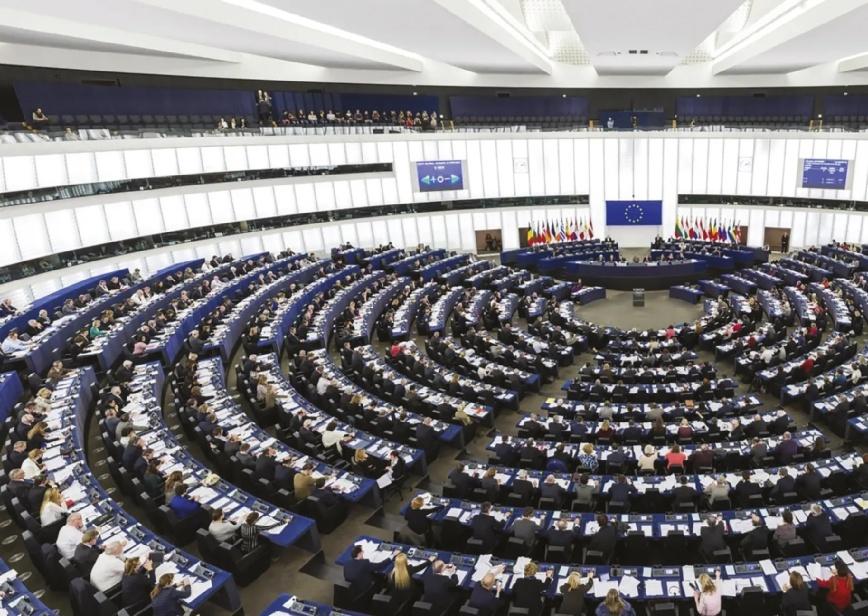
30 ARSTANNERY NEWS
Un aspetto molto negativo perché si rende elevato il rischio di disomogeneità all’interno della stessa Unione Europea. Sarà ancor più complesso il panorama in cui ci si troverà ad operare”. Assocalzaturifici mette sull’avviso rispetto ad altre 3 criticità: “L’obbligo per i grandi brand di dover controllare ed essere responsabili delle filiere potrebbe condurre alla ulteriore crescita del fenomeno delle acquisizioni, già in atto da tempo. Un rischio sistemico, poiché potrebbe impoverire la nostra industria dal punto di vista delle competenze e delle risorse umane. Un altro tema che stiamo sottoponendo con forza al legislatore riguarda la competizione internazionale. Sarebbe bene che gli obblighi a cui oggi devono sottostare le produzioni europee fossero estesi anche a tutti i prodotti venduti in Europa, altrimenti crescerà ancor più il rischio che il mercato venga ulteriormente falsato da importazioni non conformi, ma molto più competitive”. Assocalzaturifici rileva, infine, un dato di fatto: “È vero, le aziende devono rendersi maggiormente conto dell’importanza dei temi connessi alla sostenibilità e programmare piani di sviluppo per strutturarsi in tal senso. Al tempo stesso, in questo momento, il tema sostenibilità è molto sentito a monte del prodotto, quindi dai grandi marchi, ma molto meno a valle, dai consumatori. I
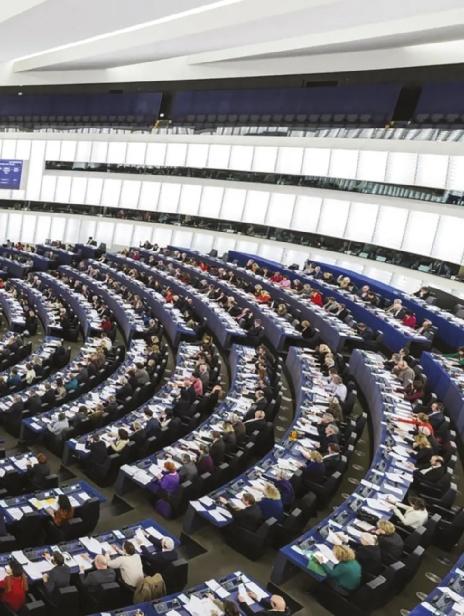
nostri dati, infatti, raccontano di un consumatore che oggi non riconosce alcun plus ai prodotti sostenibili. Non è vero che chi acquista è disposto a spendere di più per un prodotto sostenibile. Oggi, il mercato è fortemente polarizzato fra chi ancora può permettersi il lusso, che ha comunque perso la sua allure ispirazionale, e chi cerca di acquistare dei buoni prodotti di livello medio ponendo grande attenzione al prezzo”.
CONCLUSIONE
“L’Italia deve vivere questo momento storico come una grande opportunità per mettere a frutto il grande lavoro di filiera compiuto negli scorsi decenni, misurarlo e comunicarlo. Siamo eccellenti in tanti ambiti, dobbiamo diventarlo anche nella gestione del dato”, conclude positivamente Francesca Rulli. Organizzarsi per essere conformi alle nuove normative può quindi divenire un vantaggio competitivo, nonostante le tante difficoltà messe in luce, ma deve essere fatto al più presto attraverso processi di formazione e di strutturazione aziendale non più rinviabili, oltre che di strumenti strutturati e validati dal mercato, da cui gli utilizzatori trarranno facilmente beneficio.
4SUSTINABILITY
4sustainability.it
It is an innovative implementation framework and a registered trademark certifying the sustainability performance of the fashion and luxury supply chain.
È un framework di implementazione innovativo e un marchio registrato che certifica le performance di sostenibilità della catena di fornitura della moda e del lusso.
ASSOCALZATURIFICI
assocalzaturifici.it
Assocalzaturifici is the Association that represents, on a national level, industrial companies operating in the footwear production sector. It has about 500 member companies. Assocalzaturifici è l’Associazione che rappresenta a livello nazionale le imprese a carattere industriale che operano nel settore della produzione delle calzature. Conta circa 500 aziende iscritte.
CLARITY AI
clarity.ai
A sustainability technology company that provides data, insights, and tools to help investors, companies and consumers make their decisions through a sustainability lens.
Azienda tecnologica che si occupa di sostenibilità e che fornisce dati, approfondimenti e strumenti per aiutare gli investitori, le aziende e i consumatori a prendere le loro decisioni attraverso una lente di sostenibilità.
THE ID FACTORY
theidfactory.com
The ID Factory is a supply chain traceability platform (SaaS) that, through the creation of a unique digital passport, enables fashion companies to achieve complete transparency of their global supply chain.
The ID Factory è una piattaforma di tracciabilità della filiera (SaaS) che, attraverso la creazione di un passaporto digitale unico, consente alle aziende di moda di ottenere una trasparenza completa della propria filiera globale.
ARSTANNERY 31 NEWS
INCENTIVES ARE COMING FOR ENERGY SAVING AND GREEN TRANSITION OF COMPANIES
At the 'La Pelle 5.0' conference, undersecretary Massimo Bitonci anticipated the guidelines of the new measures to reduce energy consumption
A large number of entrepreneurs from the sector took part in the conference entitled 'La Pelle 5.0' (Leather 5.0) organised by the Veneto Leather District in collaboration with the industry associations at the Municipal Auditorium in Chiampo (Vi) on 12 April. The guest of honour was the Honourable Massimo Bitonci, undersecretary of the Ministry of Enterprise and Made in Italy, who presented the guidelines of the Transition 5.0 Plan, providing interesting anticipations on the new measures currently being studied by the government and aimed at fostering green investments by companies with an endowment of 6.3 billion euro. “We have been working on the recovery of Re-Power funds in favour of companies,” said Bitonci, who recognised the importance of the Italian leather industry and the need to promote
its investments, particularly in the self-production of renewable energy. In this case, the measure would include a tax credit scheme for expenditure made between 1 January and 31 August 2025, which could reach up to 45% of the amount of the investment in the event of a significant reduction in energy consumption.
Co-organised by Assomac and Confindustria Vicenza (and sponsored by SSIP and UNPAC, among others), the meeting opened with a welcome from the mayor of Chiampo, Filippo Negro, followed by speeches from the president of the Tanning Section of Confindustria Vicenza, Mirko Balsemin, and the vice-president of Assomac, Mauro Bergozza. Both pointed out the need for some corrections to the decree, changes necessary to mitigate its complexity and bureaucratic requirements, but also to include

some sectors that would currently be excluded, such as the tanning industry, which would be fully entitled to do so since it is very energy-intensive by nature. Suggestions that the undersecretary declared he accepted, committing himself to bring to the attention of the Ministry's technicians, also and above all in view of the release of the implementation decrees, expected shortly.
For his part, the president of the Veneto Leather District, Riccardo Boschetti, emphasised the importance of the fact that the leather supply chain has been included among those considered strategic for Made in Italy, and the importance of enhancing human capital in a true sustainable transition plan. In conclusion, speeches were made by Assomac director Agostino Apolito and the director of the Veneto Leather District Matteo Macilotti.
IN ARRIVO INCENTIVI PER LA TRANSIZIONE GREEN DELLE IMPRESE
Al Convegno “La Pelle 5.0” il sottosegretario Massimo Bitonci ha anticipato le linee guida delle nuove misure per la riduzione dei consumi energetici
Grande partecipazione di imprenditori del settore al convegno intitolato “La Pelle 5.0” organizzato dal Distretto Veneto della Pelle in collaborazione con le associazioni della fi -
32 ARSTANNERY NEWS IL SINDACO DI CHIAMPO FILIPPO NEGRO, HA APERTO I LAVORI DEL CONVEGNO THE MAYOR OF CHIAMPO, FILIPPO NEGRO, OPENED THE PROCEEDINGS OF THE CONFERENCE
liera presso l’Auditorium Comunale di Chiampo (Vi) lo scorso 12 aprile. Ospite d’onore l’onorevole Massimo Bitonci, sottosegretario del Ministero delle imprese e del Made in Italy, che ha presentato le linee guida del Piano Transizione 5.0 fornendo interessanti anticipazioni sulle nuove misure attualmente allo studio del governo che mirano a favorire gli investimenti green delle imprese con una dotazione di 6,3 miliardi di euro. “Abbiamo lavorato per il recupero dei fondi Re-Power a favore delle imprese” ha precisato Bitonci che ha riconosciuto l’importanza della filiera pelle italiana e la necessità di favorirne gli investimenti finalizzati alla riduzione dei consumi energetici con un’attenzione particolare agli impianti per l’autoproduzione di energia rinnovabile. Nella fattispecie la misura comprende un regime di crediti d’imposta per le spese effettuate tra il 1° gennaio e il 31 agosto 2025 che potranno arrivare fino al 45% dell’ammontare dell’investimento in caso di forte riduzione dei consumi energetici.
Co-organizzato da Assomac e Confindustria Vicenza (e con il patrocinio tra gli altri di SSIP e UNPAC) l’incontro si è aperto con il benvenuto del sindaco di Chiampo, Filippo Negro, cui sono seguiti gli interventi del presidente di Sezione Concia di Confindustria Vicenza, Mirko Balsemin e del vicepresidente di Assomac, Mauro Bergozza. Entrambi hanno fatto presente la necessità di alcune correzioni al decreto, modifiche necessarie ad attenuarne complessità e adempimenti burocratici, ma anche a far rientrare alcuni settori che al momento risulterebbero esclusi, tra cui proprio l’industria
conciaria che invece ne avrebbe pieno titolo essendo per sua natura molto energivora. Suggerimenti che peraltro il Sottosegretario ha dichiarato di accogliere, impegnandosi a portare all’attenzione dei tecnici del Ministero, anche e soprattutto in vista dell’uscita dei decreti attuativi, previsti a breve.
Dal canto suo il presidente del Distretto Veneto della Pelle, Riccardo Boschetti, ha evidenziato l’importanza del fatto che la filiera della pelle sia stata inserita tra quelle considerate strategiche per il made in Italy e l’importanza di valorizzare il capitale umano in un vero piano di transizione sostenibile. In conclusione gli interventi del direttore di Assomac Agostino Apolito e del direttore del Distretto Veneto della Pelle Matteo Macilotti.
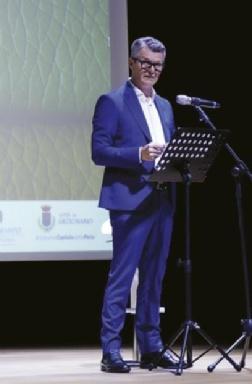
Il
piano Transizione 5.0 comprende un regime di crediti d’imposta fino al 45% per gli investimenti delle imprese mirati a ridurre i consumi energetici
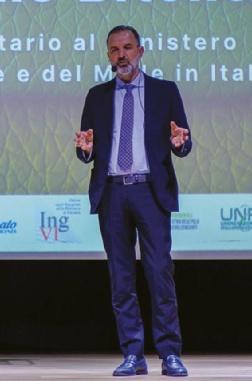
ARSTANNERY 33 NEWS AL MICROFONO IL VICEPRESIDENTE ASSOMAC MAURO BERGOZZA IL SOTTOSEGRETARIO MASSIMO BITONCI AL CONVEGNO LA PELLE 5.0 AT THE MICROPHONE ASSOMAC VICE-PRESIDENT MAURO BERGOZZA UNDERSECRETARY MASSIMO BITONCI AT THE LA PELLE 5.0 CONFERENCE
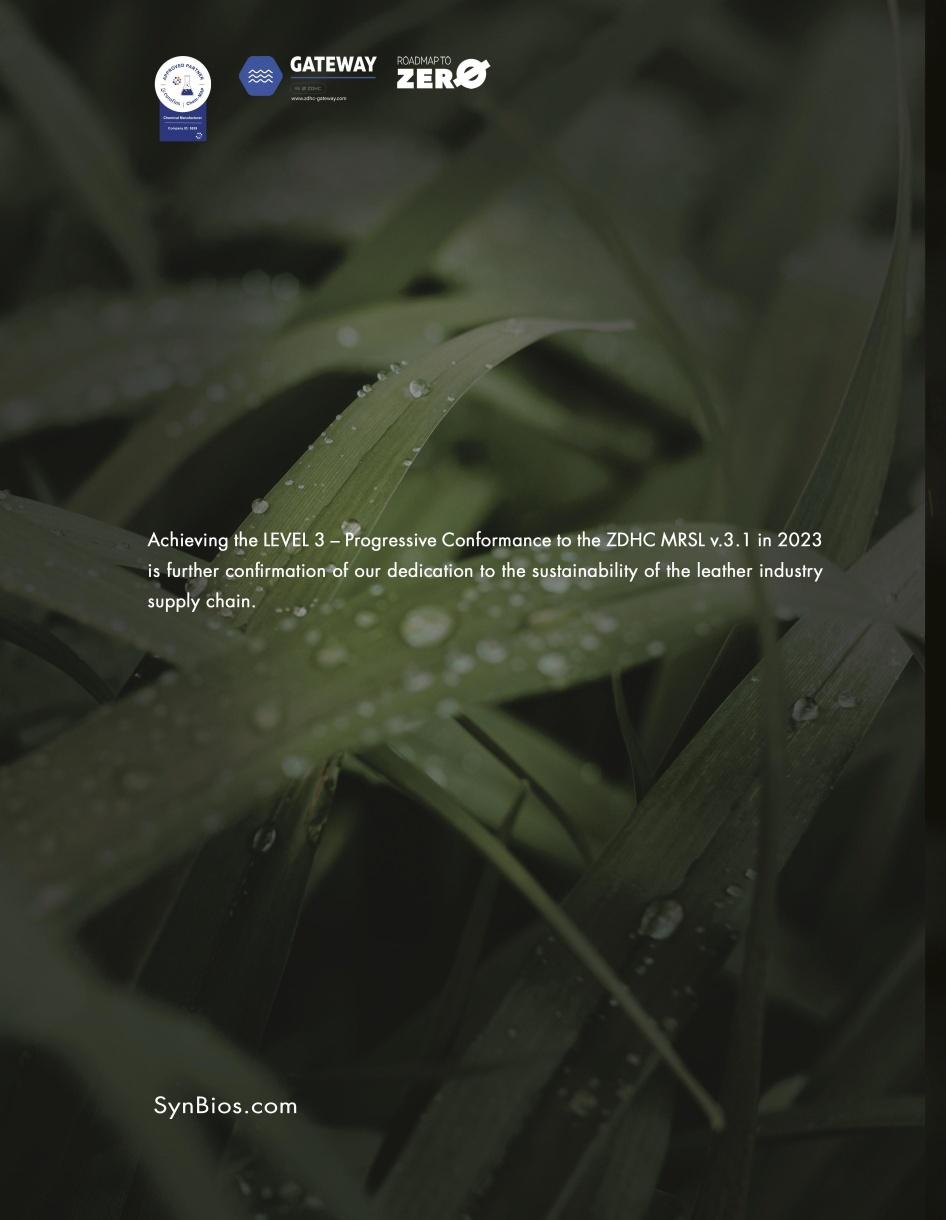

FRANCE, LIGHTS AND SHADOWS FOR THE LEATHER INDUSTRY
Asia remains the key market for French leather goods. Italy first outlet for raw hides and skins
Alliance France Cuir (AFCuir), the new name for the Conseil National du Cuir (CNC), the body representing the interests of 21 federations of the French leather industry, released figures for the leather, footwear and leather goods sector for 2023. With imports stable at about 14 billion euros and exports up 6 percent to 19 billion euros, the French leather goods industry ended the past year with a trade surplus of just over 5 billion euros, despite the sector's nearly 100 billion euro drop in sales. Leather goods remains the key sector for French export growth. Asia, particularly China, Japan, Hong Kong and South Korea, is boosting the sector, while Italy remains a key partner despite a slight decline in imports. Rising average customs prices and intra-European trade could encourage a relocation of European leather goods and footwear supplies. Imports from Asia decreased by 9%, offset by an 11% increase in imports from Europe. On the export front, the more moderate increase than in previous years in the industry's sales abroad is explained in particular by a slowdown in U.S. demand (-5% for the U.S.); this should be seen in the context of the strong growth recorded last year in the U.S. (+42% between 2021 and 2022).

Asia, stronghold for the French leather industry
In 2023, sales to Asia increased by 12 percent, accounting for 44 percent of all French exports (or 8.4 billion euros). There was a sharp increase in exports from the leather industry to some Asian countries, such as Japan (+28%), Hong Kong (+17%) and South Korea (+16%).
As for finished products, and more specifically leather goods, China remains France's best customer, accounting for 18 percent of French exports, up 9 percent from 2022. As for finished leathers, China has become France's second largest cus-
tomer, after Italy. Sales almost doubled (+84%) to 21 million euros. Sales of finished bovine hides tripled.
Italy, a key upstream partner in the industry
The European market accounts for the majority of French exports of raw hides and skins, with 89% of the value of exported hides and skins. Sales of raw hides to Italy account for more than 2/3 of French exports. Italy remains the best customer for French leather, with sales of 145 million euros in 2023, despite a 12 percent drop from 2022. The Spanish are far behind, but have managed to steal second place from China, with a 31 percent increase in their imports of French raw hides to 26 million euros.
In 2023, 84 percent of finished leathers imported from France came from a European country. Once again, Italy is France's top supplier, accounting for nearly half of French imports (274 million euros, up 18 percent), and its top customer, accounting for 35 percent of French exports (81 million euros, down 8 percent-a slight decline that can be explained by a slowdown in the activity of Italian producers of finished leather products).
One of the main reasons for this import-export dynamic is that Italy buys most sheep and calf finished leather from France, while France buys mainly bovine finished leather (40% of French purchases from Italy - by value).
The weight of the European market grows
In 2023, French leather goods imports from Europe increased by 16%, while those from Asia decreased by 6% (to -18% for India and -18% for Vietnam). On the export front, 30 percent of French leather goods sales go to Europe, up 5 percent from 2022.
In footwear, 87 out of every 100 pairs of shoes sold by France are purchased from European countries. France imported fewer Asian shoes (-15% in volume, -10% in value) than last year. France's sales - in volume terms - outside Europe remain low at 17 million pairs, despite a surge in 2023 (+44%) - compared to +28% between 2021 and 2022 with 12 million pairs. Given this situation, it is questionable whether the supply of leather goods and footwear does not tend to move to the Old Continent.
This is all the more true considering that average customs prices are rising, a sign that products are moving upward, despite inflation. Import prices are up 12 percent for a pair of shoes and up to 16 percent for shoes with leather uppers. For handbags, the increase was 26 percent, with a 14 percent increase in the value of imports.
36 ARSTANNERY NEWS
FRANCIA, LUCI E OMBRE PER L’INDUSTRIA DELLA PELLE
L’Asia resta il mercato chiave della pelletteria francese. Italia primo sbocco delle pelli grezze
Alliance France Cuir (AFCuir), la nuova denominazione del Conseil National du Cuir (CNC), l’organismo che rappresenta gli interessi di 21 federazioni dell'industria della pelle francese ha diffuso i dati del settore pelle, calzature e pelletteria relativi al 2023.
Con importazioni stabili a circa 14 miliardi di euro ed esportazioni in crescita del 6% a 19 miliardi di euro, l'industria francese della pelletteria ha chiuso l’anno passato con un surplus commerciale di poco più di 5 miliardi di euro, nonostante il settore abbia registrato un calo del fatturato di quasi 100 miliardi di euro.
La pelletteria rimane il comparto chiave per la crescita delle esportazioni francesi. L'Asia, in particolare Cina, Giappone, Hong Kong e Corea del Sud, sta dando impulso al settore, mentre l'Italia rimane un partner fondamentale nonostante un leggero calo delle importazioni. L'aumento dei prezzi medi doganali e del commercio intraeuropeo potrebbe incoraggiare una delocalizzazione delle forniture europee di pelletteria e calzature. Le importazioni dall'Asia sono diminuite del 9%, compensate da un aumento dell'11% delle importazioni dall'Europa. Sul fronte delle esportazioni, l'aumento più moderato rispetto agli
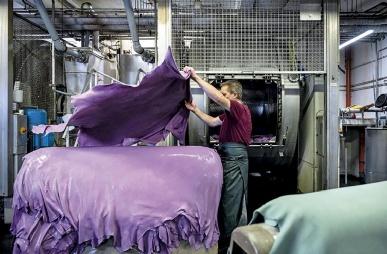
anni precedenti delle vendite del settore all'estero si spiega in particolare con un rallentamento della domanda statunitense (-5% per gli Stati Uniti); ciò va visto nel contesto della forte crescita registrata lo scorso anno negli Stati Uniti (+42% tra il 2021 e il 2022).
Asia, roccaforte per l'industria francese della pelle Nel 2023, le vendite in Asia sono aumentate del 12%, rappresentando il 44% di tutte le esportazioni francesi (o 8,4 miliardi di euro). Si è registrato un netto aumento delle esportazioni
del settore della pelle verso alcuni Paesi asiatici, come il Giappone (+28%), Hong Kong (+17%) e la Corea del Sud (+16%). Per quanto riguarda i prodotti finiti, e più specificamente la pelletteria, la Cina si conferma il miglior cliente della Francia, con il 18% delle esportazioni francesi, in crescita del 9% rispetto al 2022. Per quanto riguarda le pelli finite, la Cina è diventata il secondo cliente della Francia, dopo l'Italia. Le vendite sono quasi raddoppiate (+84%), raggiungendo i 21 milioni di euro. Le vendite di pelli finite bovine sono triplicate.
Italia, partner chiave a monte dell'industria
Il mercato europeo rappresenta la maggior parte delle esportazioni francesi di pelli grezze, con l'89% del valore delle pelli esportate. Le vendite di pelli grezze all'Italia rappresentano oltre i 2/3 delle esportazioni francesi. L'Italia rimane il miglior cliente della pelle francese, con vendite per 145 milioni di euro nel 2023, nonostante un calo del 12% rispetto al 2022. Gli spagnoli sono lontani, ma sono riusciti a rubare il secondo posto alla Cina, con un aumento del 31% delle loro importazioni di pelli grezze francesi, fino a 26 milioni di euro.
Nel 2023, l'84% delle pelli finite importate dalla Francia proveniva da un Paese europeo. Ancora una volta, l'Italia è il primo fornitore della Francia, con quasi la metà delle importazioni francesi (274 milioni di euro, in crescita del 18%), e il primo cliente, con il 35% delle esportazioni francesi (81 milioni di euro, in calo dell'8% - un leggero calo che può essere spiegato da un rallentamento dell'attività dei produttori italiani di prodotti finiti in pelle).
Una delle ragioni principali di questa dinamica import-export è che l'Italia acquista dalla Francia la maggior parte delle pelli finite ovine e di vitello, mentre la Francia acquista soprattutto pelli finite bovine (40% degli acquisti francesi dall'Italia - in valore).
Cresce il peso del mercato europeo
Nel 2023, le importazioni francesi di pelletteria dall'Europa sono aumentate del 16%, mentre quelle dall'Asia sono diminuite del 6% (fino a -18% per l'India e -18% per il Vietnam).
Sul fronte delle esportazioni, il 30% delle vendite di pelletteria francese è destinato all'Europa, con un aumento del 5% rispetto al 2022.
Nel settore delle calzature, 87 paia di scarpe su 100 vendute dalla Francia sono acquistate da Paesi europei. La Francia ha importato meno scarpe asiatiche (-15% in volume, -10% in valore) rispetto allo scorso anno. Le vendite - in termini di volume - della Francia al di fuori dell'Europa rimangono basse, con 17 milioni di paia, nonostante un'impennata nel 2023 (+44%) - rispetto al +28% tra il 2021 e il 2022 con 12 milioni di paia.
Data questa situazione, è lecito chiedersi se l'offerta di pelletteria e calzature non tenda a trasferirsi nel Vecchio Continente.
Ciò è tanto più vero se si considera che i prezzi medi doganali sono in aumento, segno che i prodotti si stanno spostando verso l'alto, nonostante l'inflazione. I prezzi delle importazioni sono aumentati del 12% per un paio di scarpe e fino al 16% per le scarpe con tomaia in pelle. Per le borse, l'aumento è stato del 26%, con un incremento del 14% del valore delle importazioni.
ARSTANNERY 37 NEWS
RI.BIO.PELL. - THE NEW FRONTIER OF ECOSUSTAINABLE FINISHING
CORICHEM has developed, in collaboration with the University of Padua, SINTEX and Conceria GIDUE, a revolutionary leather finishing technology with reduced environmental impact based on bio-based products
RI.BIO.PELL: this is the acronym used to call the recently concluded research project of which Corichem was the leader. Bio-Sustainable Leather Finishing, not just an advertising slogan but a real goal achieved. Not just a theoretical research that creates a new category of chemical products for the tanning sector, but an industrially applicable reality. This project, completed thanks to the fruitful collaboration between Corichem, Sintex, the University of Padua and Gidue Pellami, has led to the realisation of a new paradigm in leather finishing. The project earned funding from the European community as part of the complementary operational plan to the 2014-2020 POR FESR for the support of collaborative R&D activities aimed at the development of new sustainable technologies.

The originality of the project was recognised with its top ranking in the ranking list for access to these funds. The aim of the project was to develop a technology package that allows the valorisation of hides and skins through the creation of a finishing layer that is not only intrinsically more sustainable, as it is produced with the highest possible bio-based content, but also capable of being applied with an innovative technology, also developed in the context of the project, that is more environmentally friendly and safer for the operator. Corichem has many years of experience in the synthesis and formulation of chemicals for the tanning industry and has been able to develop a series of bio-based finishing products. This started with the synthesis of a new series of resins, which, in addition to their bio-based content, possess unique properties that are completely new to the tanning industry market. These were developed to meet three requirements: a high bio-based content, the ability to undergo embossing processes at low temperatures and pressures, and to be single-component with cross-linking at room temperature. For the development of this technology, the fundamental project partner was the University of Padua, in particular the research group of the director of the Department of Chemical Sciences, Prof. Mammi, who, with the help of the CNR group of the Institute of Biomolecular Chemistry located in Padua, contributed to the characterisation of the newly developed chemical technology. These products are more environmentally friendly due to their bio-based origin and the possibility of being embossed at low temperature and cross-linked at room temperature. These products are in fact single-component and do not require the addition of any external crosslinker for their curing, nor do they need to be subject-
ed to high temperatures as is the case for locked isocyanates. This is an advantage not only in terms of increased competitiveness of the leather finishing process, but also for personnel and the environment, as the use and marketing of external crosslinkers or two-component systems whose toxicity to humans and ecotoxicity is well known is eliminated. The resins produced can cover a wide range of articles, which in the course of the project was developed by GIDUE. The current state of the art in technical equipment prior to this project did not allow the full potential of the newly developed water-based resins to be exploited. Thanks to Sintex's fundamental contribution, a pilot plant was therefore set up for the production of leathers with these new technologies that allow leather finishing without using high temperatures or crosslinkers. This finishing system is also able to imprint the desired pattern on the leather surface by applying much lower pressures than are normally used in this production phase. The pilot plant developed is fully functional and allows the production process to be faithfully replicated in small scale, which can then be transferred directly to the industrial plant.
Ultimately RiBioPell is:
- A finishing system that uses bio-based products.
- A finishing system that uses single-component products that cross-link at room temperature.
- A finishing system that enables the embossing of leathers at low temperatures and pressures.
- An innovative application system that exploits the exclusive characteristics of this type of resin.
- An easily industrialised finishing system, tested on semi-industrial pilot plants, competitive for the market.
38 ARSTANNERY NEWS
PREPARAZIONE DEL FISSATIVO LUCIDO BIO; DETTAGLIO SUL REATTORE PREPARATION OF THE BIO GLOSS FIXATIVE; DETAIL ON THE REACTOR
RI.BIO.PELL. LA NUOVA FRONTIERA DELLA RIFINIZIONE ECOSOSTENIBILE
CORICHEM ha sviluppato, in collaborazione con Università di Padova, SINTEX e Conceria
GIDUE, una rivoluzionaria tecnologia di rifinizione delle pelli a ridotto impatto ambientale basata su prodotti bio-based
RI.BIO.PELL: è questo l’acronimo con il quale è stato chiamato il progetto di ricerca appena concluso di cui Corichem è stata capofila. Rifinizione Bio-sostenibile delle Pelli, non solo uno slogan pubblicitario ma un vero e proprio obbiettivo conseguito. Non solamente una ricerca teorica che crea una nuova categoria di prodotti chimici per il settore conciario, ma una realtà applicabile industrialmente. Tale progetto, portato a termine grazie alla fruttuosa collaborazione tra Corichem, Sintex, Università di Padova e Gidue Pellami, ha portato alla realizzazione di un nuovo paradigma nella rifinizione delle pelli. Il progetto è valso il finanziamento da parte della comunità europea nell’ambito del piano operativo complementare al POR FESR 2014-2020 per il sostegno alle attività di R&S collaborative, volto allo sviluppo di nuove tecnologie sostenibili. L’originalità del progetto è stata riconosciuta con il posizionamento ai primi posti nella graduatoria per l’accesso a questi fondi. Scopo del progetto è stato quello di sviluppare un pacchetto di tecnologie che permetta la valorizzazione delle pelli per mezzo della creazione di uno strato di rifinizione non solo intrinsecamente più sostenibile, in quanto prodotto al più alto contento bio-based possibile, ma anche in grado di essere applicato con un’innovativa tecnologia, sviluppata sempre nel contesto del progetto, più rispettosa dell’ambiente e più sicura per l’operatore.
Corichem possiede una esperienza pluriennale nella sintesi e nella formulazione di prodotti chimici per l’industria conciaria ed è stata in grado di sviluppare una serie di prodotti per rifinizione bio-based. Per fare questo si è partiti dalla sintesi di una nuova serie di resine, le quali posseggono, oltre al contenuto bio, proprietà uniche e di assoluta novità per il mercato dell’industria conciaria. Tali sostanze sono state sviluppate per soddisfare tre requisiti: un alto contenuto bio-based, la capacità di subire processi di goffratura a basse temperature e pressioni, essere monocomponenti con reticolazione a temperatura ambiente. Per lo sviluppo di questa tecnologia il partner di progetto fondamentale è stata l’Università Padova, in particolare il gruppo di ricerca del direttore del Dipartimento di Scienze Chimiche, il Prof. Mammi, il quale, con l’ausilio del gruppo CNR dell’istituto di chimica biomolecolare sito in Padova, ha contribuito alla caratterizzazione della nuova tecnologia chimica sviluppata. Tali prodotti risultano essere più rispettosi per l’ambiente data la loro origine bio-based e la possibilità di essere goffrati a bassa temperatura e reticolati a temperatura ambiente. Questi prodotti sono infatti monocomponente e non richiedono l’aggiunta di alcun reticolante esterno per il loro curaggio, né necessitano di essere sottoposti ad alte temperature come per gli isocianati bloccati. Un vantaggio non solo in termini di una maggiore competitività del processo di rifinizione delle pelli ma anche per il personale e l’ambiente, venendo meno l’uso e la commercializzazione di reticolanti esterni o sistemi bicomponente la cui tossicità per l’uomo ed ecotossicità è ben nota. Le resine prodotte possono coprire un’ampia gamma di articolistica, la quale nel corso del progetto è stata sviluppata da GIDUE. L’attuale stato dell’arte presente nel panorama dell’attrezzatura tecnica prima di questo progetto non permetteva di sfruttare a pieno le potenzialità delle nuove resine a base acqua sviluppate. Grazie al fondamentale contributo di Sintex è stato quindi realizzato un impianto pilota per la produzione di pellami con queste nuove tecnologie che permettono di eseguire la rifinizione del cuoio senza usare alte temperature o reticolanti. Questo sistema di rifinizione è inoltre in grado di imprimere il disegno desiderato sulla superficie della pelle applicando pres-
sioni di molto inferiori a quelle che vengono utilizzate normalmente in questa fase produttiva. L’impianto pilota sviluppato è in tutto e per tutto funzionante e permette di replicare fedelmente in piccolo il processo produttivo, che può essere quindi poi trasferito direttamente all’impianto industriale.
In definitiva RI.BIO.PELL è:
La nuova tecnologia verrà presentata ufficialmente al pubblico alla prossima edizione di Lineapelle
- Un sistema di rifinizione che utilizza prodotti di origine bio-based.
- Un sistema di rifinizione che utilizza prodotti monocomponente, che reticolano a temperatura ambiente.
- Un sistema di rifinizione che permette la goffratura delle pelli a basse temperature e pressioni.
- Un innovativo sistema applicativo che sfrutta le caratteristiche esclusive di questo tipo di resine.
- Un sistema di rifinizione facilmente industrializzabile, testato su impianti pilota semi-industriali, competitivo per il mercato.
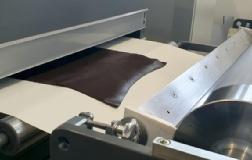
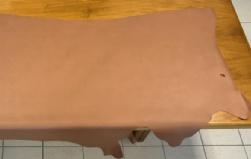
ARSTANNERY 39 NEWS
ESEMPIO DI PELLE RIFINITA PER MEZZO DELLA TECNOLOGIA SVILUPPATA, FISSATIVO OPACO
OF LEATHER FINISHED BY MEANS OF THE DEVELOPED TECHNOLOGY, MATT FIXATIVE
EXAMPLE
TESTATI DOPO APPLICAZIONE DEL FONDO BIO DRYING PHASE OF ONE OF THE TESTED SAMPLES AFTER APPLICATION OF THE ORGANIC PRIMER
FASE DI ASCIUGATURA DI UNO DEI CAMPIONCINI
TFL SOLUTIONS TO MAKE BISPHENOL-FREE LEATHER WITHOUT COMPROMISING QUALITY
Chris Tysoe, Head of Wet-end (CRU) in the TFL Group, explains the company's latest progress

In recent years, the issue of bisphenols in the tanning industry has been increasingly discussed, given the criticality presented by these compounds in the synthetic tannins used during the leather processing. With Chris Tysoe, Head of Wet End Product Management at TFL, we talk about the company's strategy and progress in reducing the bisphenol content in their products.
The news about the temporary withdrawal of the dossier concerning the restriction draft of ECHA on Bisphenol A and other bisphenols of similar concern (BoSC), has rapidly spread in the tanning community. Doesn’t this mean that the issue is not as urgent or less important than before?
“Absolutely not! Whilst this initially seems like good news it has unfortunately, lured some into a very dangerous false sense of security. The reality is that this draft is only delayed, not cancelled. Furthermore, some famous brands have either already implemented, or are currently implementing, the addition of bisphenols to their own ‘Restricted Substances Lists’ (RSL’s). In addition, in the USA, Bisphenol S (BPS) has been listed as a ‘reproductive toxicant’ under ‘California Proposition
65’ (Prop 65). The warning requirement for significant exposure to BPS of leather consumer articles will take effect in December 2024. It is yet, however, unclear how ‘significant exposure’ will be defined in the USA. The Prop 65 listing requires that all consumers buying an article made of leather, whether a shoe, handbag, car seat or sofa etc., are informed”. How do you think this will progress and what are you doing to support tanners?
“We don’t speculate, we at TFL are in close contact with the US authorities and will keep tanners fully informed of all developments in this field as soon as they become available, to support them to success. In the meantime, we are supporting our customers to make leather below 10ppm bisphenol content to ensure they are way ahead of any current or expected legislation”.
Do we really need syntans still today in modern leather production?
“The term ‘syntan’ is loosely used in our industry, which seems to cover just about anything added in the retanning that is ‘synthesized’ or ‘synthetic’. Therefore, it is very important to distinguish between ‘auxiliaries’ and genuine replacement ‘syntans’. Just as the name suggests, genuine replacement syntans were originally developed to replace, or substitute, vegetable tannins but with clear advantages over them. Genuine replacement syntans are, today, still an essential part of wet end processing, with their ‘tanning power’ completing the tannage, turning the intermediates of wet blue and wet white into genuine leather. They provide the key properties of tightness, fullness and softness together with light fastness and heat resistance. Replacement syntans are simply indispensable”.
Can’t syntans be simply substituted by other retanning chemicals?
“No, the genuine ‘tanning power’ of syntans is not possessed by the other conventional retanning agents like resins, polymers and fillers etc. Although these other retanning chemicals play an important role modifying the filling properties, they do not tan, so cannot substitute genuine replacement syntans”.
How is TFL supporting customers to develop leathers which fulfil bisphenol restrictions?
“There are three major ways in which we provide a superior solution to this industry-wide bisphenol challenge. Firstly, we now have a range of replacement syntans with ultra-low to zero bisphenol content. This unique range enables tanners to produce all leathers from shoe upper and leather goods through to furniture upholstery and automotive. The
40 ARSTANNERY INTERVIEW
CHRIS TYSOE, RESPONSABILE DEL PRODUCT MANAGEMENT WET END DI TFL
CHRIS TYSOE, HEAD OF WET END PRODUCT MANAGEMENT AT TFL
resulting leather, following out recommendations will be below 10 ppm bisphenol content / non detectable.
Secondly, we ensure that all other supporting leather-making chemicals in our wet end range are completely free of bisphenols. That’s all our resins, retanning and softening polymers, dyestuffs and fatliquors etc. It is only the replacement syntans that are affected by this bisphenol issue.
Thirdly, we at TFL have developed a unique tool that calculates the bisphenol content in leather.
This helps customers to select suitable TFL products in the amount required to make the desired leathers and being compliant with bisphenol restrictions. Of course, from time to time customers may also send cuttings to either TFL or a third party to confirm the predicted results”.
Why has TFL launched the ‘ultra-low to zero’ bisphenol syntan range in liquid form?
“We at TFL are committed to lower energy consumption in production and thus significantly lower the overall CO2 footprint. Therefore, liquid products offer an environmental advantage as well as health and automation benefits. Should certain markets continue requiring powdered replacement syntans, TFL will make dried, bisphenol optimized products available as well”.
LE SOLUZIONI TFL PER PRODURRE PELLE DI ALTA QUALITÀ SENZA BISFENOLI
Chris Tysoe, Responsabile del Wet-end (CRU) nel Gruppo TFL, illustra gli ultimi progressi aziendali
Negli ultimi anni, il tema dei bisfenoli in ambito conciario è sempre più discusso, date le criticità presentate da questi composti presenti nei tannini sintetici utilizzati durante il processo di lavorazione delle pelli. Con Chris Tysoe, responsabile del Product Management Wet End di TFL, parliamo della strategia aziendale e dei progressi compiuti per ridurre il contenuto di bisfenoli nei loro prodotti.
TFL has developed a range of replacement syntans with ultra-low to zero bisphenol content
La notizia del temporaneo ritiro del dossier riguardo la bozza di restrizioni ECHA sul bisfenolo A e su altri bisfenoli di simile preoccupazione (BoSC), si è diffusa rapidamente nella comunità dei conciatori. Significa che la questione non è più così urgente o che è meno importante di prima?
“Assolutamente no! Mentre questa sembrava inizialmente una buona notizia, sfortunatamente ha condotto alcuni verso un pericoloso e falso senso di sicurezza. La realtà è che questa bozza è stata soltanto ritardata, non cancellata. Peraltro, alcuni brand famosi hanno già implementato, o stanno attualmente implementando, la loro ‘Lista di Sostanze soggette a Restrizioni’ (RSL) con l’aggiunta di altri bisfenoli.
Inoltre, negli Stati Uniti, il Bisfenolo S (BPS) è stato classificato come ‘tossico per la riproduzione’ all’interno della ‘California Proposition 65’ (Prop 65). L’obbligo di avvertimento per una significativa esposizione al BPS sugli articoli in pelle destinati al consumatore scatterà a dicembre

ARSTANNERY 41 INTERVIEW
conferiscono le proprietà chiave di fermezza, pienezza e morbidezza, insieme alla solidità alla luce e alla resistenza al calore. I tannini sintetici sostitutivi sono semplicemente indispensabili”.
“We are supporting our customers to make leather below 10ppm bisphenol content to ensure they are way ahead of any current or expected legislation”.
2024. Tuttavia, non è ancora chiaro come ‘esposizione significativa’ verrà determinata negli USA. La classificazione della Prop 65 richiede che tutti i consumatori che acquistano un articolo fatto in pelle, che sia una scarpa, una borsa, un sedile auto o un divano... siano informati”.
Come pensate che si evolverà la questione e cosa state facendo per supportare le concerie?
“Preferiamo evitare speculazioni, noi di TFL siamo in stretto contatto con le autorità USA e terremo pienamente informati i conciatori su tutti gli sviluppi in materia non appena saranno disponibili, per supportarli verso il successo. Nel frattempo, li aiutiamo a fare pelli con contenuto di bisfenoli sotto i 10 ppm, per assicurarci che siano più avanti di qualsiasi regolamentazione attuale o prevista”.
Abbiamo davvero bisogno ancora oggi dei tannini sintetici nella moderna produzione del cuoio?
“Il termine ‘tannino sintetico’ è utilizzato liberamente nella nostra industria, tanto che sembra comprendere qualsiasi cosa aggiunta nella riconcia che sia ‘sintetizzata’ o ‘sintetica’. Per questo è molto importante distinguere tra ‘ausiliari’ e veri ‘tannini sintetici’ sostitutivi. Proprio come suggerisce il nome, gli autentici tannini sintetici sostitutivi furono sviluppanti originariamente per rimpiazzare, o sostituire, i tannini vegetali, ma con un chiaro vantaggio rispetto a questi ultimi.
I veri tannini sintetici sostitutivi oggigiorno sono ancora una parte essenziale del processo di umido, con il loro ‘potere conciante’ che completa il procedimento, trasformando gli intermedi da wet blue e wet white a vera pelle. Essi
Non possiamo semplicemente sostituire i tannini sintetici con altri prodotti chimici riconcianti?
“No, l’autentico ‘potere conciante’ dei tannini sintetici non appartiene a nessun altro agente riconciante convenzionale come resine, polimeri o filler... Anche se questi altri riconcianti chimici giocano un ruolo importante nel modificare le proprietà riempitive, essi non conciano; quindi non possono sostituire i veri tannini sintetici.
TFL come sta supportando i propri clienti nello sviluppo di pelli che soddisfino le restrizioni sui bisfenoli?
“Sono principalmente tre i modi in cui forniamo soluzioni superiori per affrontare questa sfida dei bisfenoli all’industria. Per prima cosa, ora abbiamo una gamma di tannini sintetici sostitutivi con contenuto di bisfenoli bassissimo o zero. Questo range unico permette ai conciatori di produrre qualsiasi tipo di pellame dalla calzatura alla pelletteria, passando per l’arredamento e l’automotive. Le pelli ottenute seguendo le nostre indicazioni avranno un contenuto di bisfenoli sotto i 10 ppm, o non rilevabile.
In secondo luogo, garantiamo che tutti gli altri prodotti chimici della nostra gamma wet end necessari alla concia siano completamente esenti da bisfenoli. Si tratta di tutte le nostre resine, dei polimeri riconcianti e ammorbidenti, dei coloranti e degli ingrassi...Solamente i tanni sintetici sostitutivi sono interessati dalla questione dei bisfenoli. In terzo luogo, noi di TFL abbiamo sviluppato uno strumento unico che calcola il contenuto di bisfenoli nella pelle. Questo aiuta i clienti a selezionare i prodotti TFL adatti nella quantità richiesta, per produrre le pelli desiderate nel rispetto delle restrizioni sui bisfenoli. Naturalmente, di tanto in tanto i clienti dovrebbero anche inviare dei campioni degli articoli a TFL o ad una terza parte per confermare i risultati predetti”.
Perché TFL ha lanciato la gamma di tannini sintetici ‘ultra-low to zero’ esente da bisfenoli in forma liquida? “Noi di TFL ci impegniamo a ridurre il consumo energetico in produzione, e ad abbassare così significativamente l’impronta complessiva di CO2. Perciò, i prodotti liquidi offrono un vantaggio ambientale, così come dei benefici in termini di salute e automazione. Se alcuni mercati continueranno a richiedere tannini sintetici sostitutivi in polvere, TFL renderà disponibili anche prodotti in polvere con contenuto di bisfenoli ottimizzato”.
42 ARSTANNERY INTERVIEW
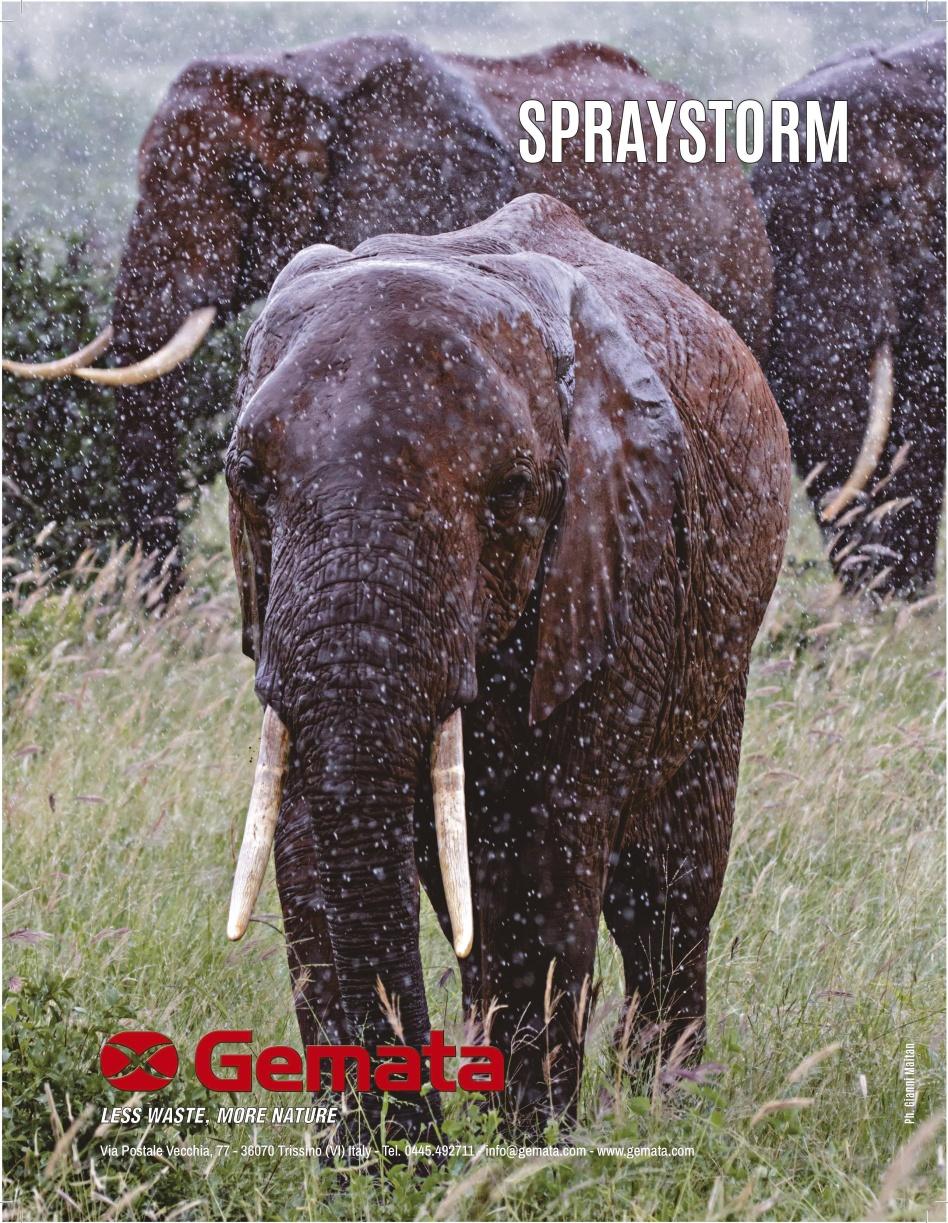
LAPI GELATINE RETURNS
TO 100 PERCENT OWNERSHIP OF LAPI GROUP
The Lapi Family, through its holding company Lapi Group, consolidates control of Lapi Gelatine S.p.A. by purchasing the share of SICI SGR
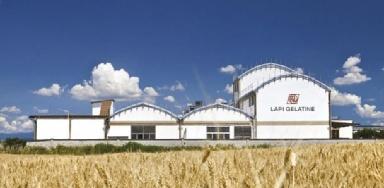
On May 16, the Lapi Family, which already owned a majority stake in Lapi Gelatine S.p.A. through its holding company Lapi Group S.p.A., announced that it had acquired the minority stake held by Sviluppo Imprese Centro Italia SGR S.p.A. (SICI SGR), thus returning to being the sole shareholder of the Tuscan company. Founded in 1966 in Empoli (FI) Lapi Gelatine produces gelatins and collagen peptides for the pharmaceutical and food industries. With a turnover of more than 30 million euros and active distribution in 52 countries worldwide, the Tuscan industrial reality has become a major international player and has managed to generate a trend of steady growth in recent years, including through external lines. Precisely for this purpose, SICI SGR, through the Relaunch and Development fund, had subscribed in November 2021 for a capital increase in Lapi Gelatine as part of the transaction to acquire control of Spanish competitor Juncà Gelatines SA. based in Girona, Barcelona. The acquisition, structured in partnership with DisproInvest (a holding company under Spanish law that controls the international raw materials distributor Disproquima active in the Life Sciences market) had been co-financed by the Lapi Family itself with a semi-equity investment and by Banca Monte dei Paschi di Siena with a mix of senior and secured acquisition financing and cash lines. "We are very pleased with this transaction: the acquisition of Juncà Gelatines, which was a courageous but well thought-out decision, represents for Lapi Gelatines a determined step forward in its international growth strategy in markets where growth forecasts are still very interesting," commented Lapi Group Chairman Roberto Lapi and Tommaso Lapi, CEO of Lapi Gelatines. "The results of these first years confirm the potential growth in value that the Business Unit can generate over time for the entire Lapi Group. We would like to thank SICI, and in particular Chairman Cav. Vittorio Gabbanini and Deputy General Manager Dr. Francesco Castaldelli, for the human and professional contribution they have brought in their role as directors of Lapi Gelatine, with the hope of continu-
ing the collaboration and being able to carry out other operations together." Vittorio Gabbanini, President of SICI, commented, "The operation gives credit to the strategic vision of the Lapi Family and its management, which have completed one of the rare foreign acquisition operations by Tuscan SMEs, generating great value for shareholders and continuing on the well-started path of growth."
LAPI GELATINE TORNA AD ESSERE AL 100% DI LAPI GROUP
La Famiglia Lapi, tramite la propria holding Lapi Group, consolida il controllo di Lapi Gelatine S.p.A. acquistando la quota di SICI SGR
Il 16 maggio scorso la famiglia Lapi, già proprietaria della maggioranza di Lapi Gelatine S.p.A. tramite la holding Lapi Group S.p.A., ha annunciato di aver acquisito la quota di minoranza detenuta da Sviluppo Imprese Centro Italia SGR S.p.A. (SICI SGR), e torna così ad essere socio unico della realtà toscana.
Fondata nel 1966 a Empoli (FI) Lapi Gelatine produce gelatine e peptidi di collagene per l'industria farmaceutica e alimentare. Con un fatturato superiore a 30 milioni di euro e una distribuzione attiva in 52 paesi nel mondo, la realtà industriale toscana è diventata un player di rilievo internazionale ed è riuscita a generare un trend di costante crescita negli ultimi anni, anche per linee esterne. Proprio a tale scopo, SICI SGR, tramite il fondo Rilancio e Sviluppo, aveva sottoscritto a novembre 2021 un aumento di capitale in Lapi Gelatine nell’ambito dell’operazione di acquisizione del controllo del competitor spagnolo Juncà Gelatines SA., con sede a Girona (Barcellona).
L’acquisizione, strutturata in partnership con DisproInvest (holding di diritto spagnolo che controlla il distributore internazionale di materie prime Disproquima attivo nel mercato Life Sciences) era stata co-finanziata dalla stessa Famiglia Lapi con un investimento a titolo di semi-equity e da Banca Monte dei Paschi di Siena con un mix di acquisition financing senior e secured e linee di cassa. “Siamo molto sodisfatti di quest’operazione: l’acquisizione di Juncà Gelatines, che è stata una decisione coraggiosa ma ben ponderata, rappresenta per Lapi Gelatine un determinato passo avanti nella strategia di crescita internazionale in mercati nei quali le previsioni di crescita sono ancora molto interessanti”, hanno commentato il Presidente di Lapi Group, Roberto Lapi e Tommaso Lapi, AD di Lapi Gelatine. “I risultati di questi primi anni confermano la potenziale crescita di valore che la Business Unit potrà generare nel tempo per l’intero Gruppo Lapi. Ringraziamo SICI, ed in particolare il Presidente Cav. Vittorio Gabbanini ed il Vice Direttore Generale Dott. Francesco Castaldelli, per il contributo umano e professionale che hanno portato nel loro ruolo di amministratori di Lapi Gelatine, con l’auspicio di continuare la collaborazione e poter realizzare insieme altre operazioni.” Vittorio Gabbanini, Presidente di SICI, ha commentato: “L’operazione rende merito alla visione strategica della Famiglia Lapi e del suo management, che hanno portato a compimento una delle rare operazioni di acquisizione all’estero da parte delle PMI toscane”.
44 ARSTANNERY NEWS
SIMAC TANNING TECH
Road to 50th edition. From the first edition to the future. A history of success

ARCHIVIO STORICO DI FONDAZIONE FIERA MILANO
“WE WANT A SIMAC TANNING TECH MORE AND
MORE CONNECTED TO THE WORLD”
People often celebrate victories or achievements. In the case of the 50th edition of SIMAC TANNING TECH, a success story is celebrated with the awareness that the past behind us must serve as a springboard towards the future.
Agostino Apolito, Director of ASSOMAC, the event’s organisers, explains it well: ‘In a difficult and complex economic moment to decipher, we believe that recovery can only come from getting to know better and better the various international markets in which we are present by weaving ever closer relations with market players and, together with them, looking to the future. That is why the celebration of the 50th edition of the fair will be marked by events capable of promoting international connections and relations.
Such as the Gala Evening on 18 September, which will be an opportunity for the approximately 300 guests to develop increasingly effective networking with the different souls that inhabit the panorama of technology and innovation in the footwear, leather goods and leather sectors. The dinner will also give guests the opportunity to attend a talk that will provide brief insights into the influence and repercussions that current geopolitical movements will have on the fashion industry, seeking to illuminate possible future scenarios and prospects.
Spesso si festeggia in occasione delle vittorie o dei traguardi raggiunti. Nel caso delle 50 edizioni di SIMAC
TANNING TECH si festeggia una storia di successo con la consapevolezza che il passato ormai alle spalle deve servire come trampolino verso il futuro.
Lo spiega bene Agostino Apolito, Direttore di ASSOMAC, organizzatrice della manifestazione: “In un momento congiunturale difficile e complesso da decifrare, crediamo che la ripresa possa passare solo dal conoscere sempre meglio i diversi mercati internazionali in cui siamo presenti tessendo relazioni sempre più strette con gli attori del mercato e, insieme a loro, guardare al futuro”. Perciò la celebrazione delle 50 edizioni della fiera sarà connotata da eventi capaci di promuovere connessioni e relazioni a livello internazionale.
Come la Serata di Gala del 18 settembre che sarà occasione, per i circa 300 invitati, di sviluppare un networking sempre più efficace con le diverse anime che abitano il panorama della tecnologia e dell’innovazione dei settori calzature, pelletteria e pelle.
La cena darà anche modo agli invitati di assistere a un talk che fornirà brevi spunti di riflessione riguardo l’influenza e le ricadute che i movimenti geopolitici attuali avranno sul comparto moda, cercando di illuminare eventuali scenari e prospettive future.
Sulla stessa rotta si stabilisce anche l’iniziativa pensata per il 17 settembre insieme a The European House – Ambrosetti: un momento di incontro e confronto fra i fornitori di tecnologie e i più importanti brand del settore moda. “Vogliamo interpretare la missione della fiera in senso ampio e offrire sempre più occasioni che aiutino la filiera a monte a conoscere le esigenze degli attori che si confrontano direttamente con le richieste del mercato”.
46 ARSTANNERY WELCOME

The initiative planned for 17 September together with The European HouseAmbrosetti is also along the same lines: a moment of encounter and comparison between technology suppliers and the most important brands in the fashion sector. “We want to interpret the mission of the fair in a broad sense and offer more and more occasions that help the upstream supply chain to get to know the needs of the players that are directly confronted with the demands of the market”.
There will be no shortage of opportunities to recall the past thanks to a celebratory supply chain exhibition that tells the story and the evolutions of the last 50 years of technological innovations, components and materials as well as finished products. “We want to illustrate - Apolito explains - the immense value of the complex work that the entire fashion supply chain carries out day after day. We want to talk about a history that has always looked to the future”.
Apolito concludes: “These 50 years of trade fairs have taught us that to imagine tomorrow there is no other way but to open up to the market. This is why we have thought of an edition of SIMAC TANNING TECH that will allow the 100-plus international delegates attending the fair to meet and get to know each other better so that together we can imagine a future of development and growth. As ASSOMAC we particularly want to meet the many countries where we are well established - I am thinking of India, Vietnam, Pakistan and South America. But we also want to exploit the synergy with other concurrent events in the industry to open new channels with other markets, such as the United States. Probing new opportunities in markets with an important industrial fabric and that might need our technologies”.
Non mancherà l’occasione di ricordare il passato grazie a una mostra celebrativa di filiera che racconti la storia e le evoluzioni degli ultimi 50 anni di innovazioni tecnologiche, di componenti e materiali nonché di prodotto finito. “Vogliamo illustrare – spiega Apolito – l’immenso valore del complesso lavoro che l’intera filiera della moda conduce giorno dopo giorno. Vogliamo parlare di una storia che da sempre guarda al futuro”.
Conlude Apolito: “Questi 50 anni di fiere hanno insegnato che per immaginare il domani non c’è altra via che aprirsi al mercato. Perciò abbiamo pensato ad un’edizione di SIMAC TANNING TECH che consenta alle 100 e più delegati internazionali presenti in fiera di incontrarsi e conoscersi sempre meglio così da poter immaginare insieme un futuro di sviluppo e crescita. Come ASSOMAC vogliamo in particolare incontrare i tanti Paesi in cui siamo ben radicati - penso all’India, al Vietnam, al Pakistan e al Sud America. Ma desideriamo anche sfruttare la sinergia con gli altri concomitanti eventi della filiera per aprire nuovi canali con altre piazze, come per esempio gli Stati Uniti. Sondare nuove opportunità su mercati dall’importante tessuto industriale e che potrebbero aver bisogno delle nostre tecnologie”.
48 ARSTANNERY WELCOME
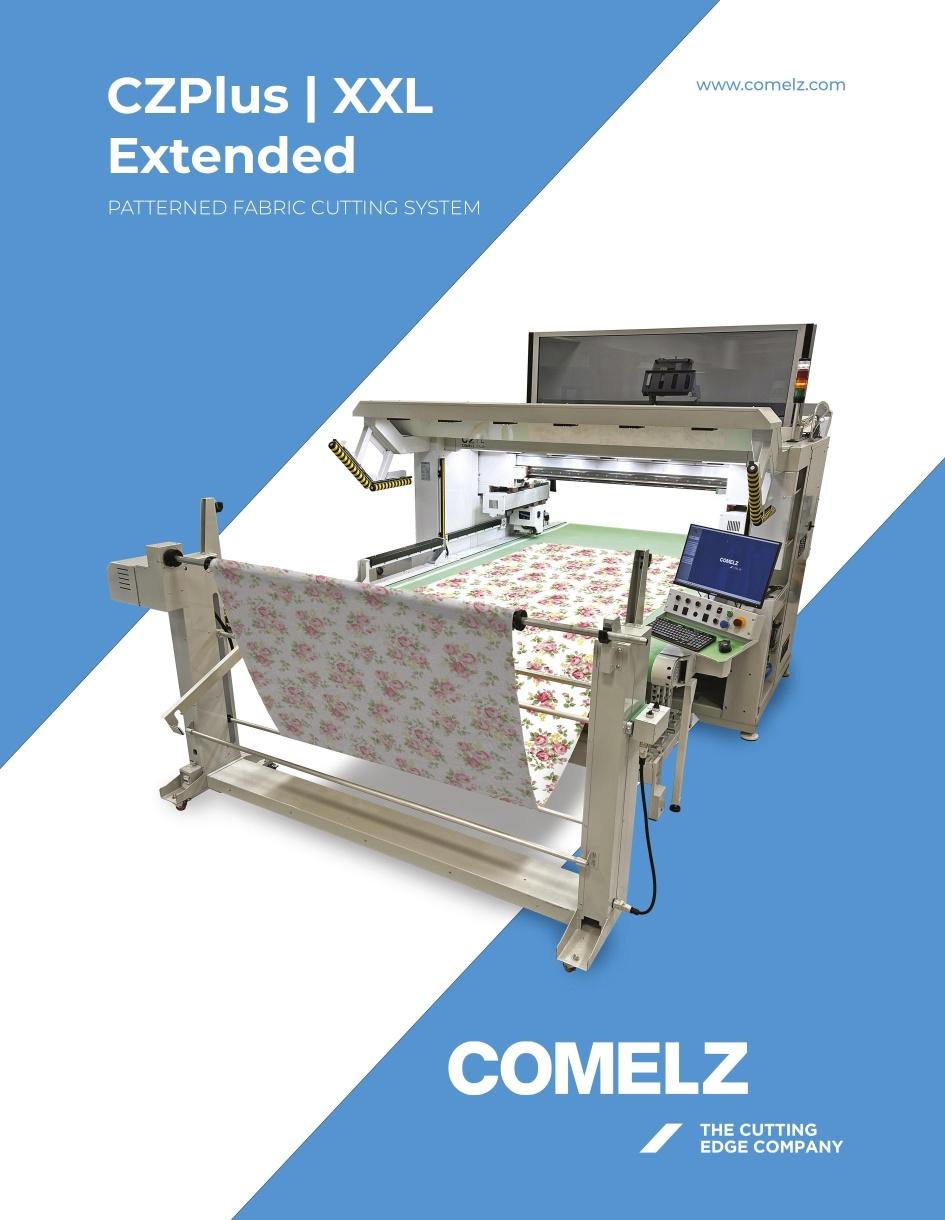
IN 2024 THE TECHNOLOGY RACE SLOWS DOWN
2024 market outlook for the footwear, leather goods and leather technology and innovation sector

Assomac, the national association that aggregates and represents Italian manufacturers of footwear, leather goods and tanning technology, presents the first six-monthly economic analysis 2024 and the sector data for 2023.
The Italian footwear, leathergoods and tannery machinery sector in the 2023 forecast shows growth in the sector, albeit at a lower rate than in previous years. In fact, 2022 had ended with a good performance compared to 2021. After a good start for exports in the first half of 2023, this suffered a setback in the last months of the year due to international conflicts and the consequent weakening of the global economic scenario.
From the data processed by Centro Studi Confindustria, it is clear that the outlook for the Italian economy in 2024 remains sluggish and uncertain. Downside risks are preponderant, due above all to the widening of geopolitical tensions, linked to the
further war in the Middle East, the increased fragmentation of international production and the possible repercussions on commodity prices. There are various negative factors: the brake on trade flows in the Suez Canal persists, oil prices continue to rise, the rate cut is postponed again, and credit to companies remains in decline. A weak GDP is expected in Q1 2024. Only part of the economy is growing. In Q1 2024, Italian GDP grew (+0.3%), but industry output and consumption of goods contracted.
Emblematic is the situation of machine tools, which well represent the instrumental mechanics sector: already at the end of 2023, between October and December, domestic orders had more than halved. Between January and March, the year-onyear fall was almost 20 points, halving demand in Italy compared to the average.
50 ARSTANNERY MARKET
The year 2024 started with worrying signs; in the first quarter of 2024, the ‘leather, leather goods and footwear’ sector presented the highest increase, at national level, of recourse to the Wage Compensation Fund: +128.6% compared to the same period in 2023.
Tuscany and Campania are the epicentre of the leather crisis. Here, the use also exceeded the record levels of 2010.
Surveys promoted by the supply chain associations to their members show that most of them believe that the recovery will not take place before 2025. It is not easy to make predictions at the moment, but it will certainly be a complex year.
As far as the tannery, footwear and leather goods machinery sector is concerned, the survey of a significant sample of companies shows:
- INTERNAL ORDERS: 76% of respondents expect a contraction and 24% expect them to remain unchanged;
- FOREIGN ORDERS: 47% expect a contraction, 35% expect them to stay the same and 18% expect them to increase.
The markets to which companies are exporting are mainly European - Spain, Germany, Portugal and France; AmericaUnited States, Canada, Mexico and Brazil; and in Asia - India, Indonesia and China.
The latest available Istat data for the first two months of 2024 show a contraction in exports compared to the same period last year. This contraction is more accentuated for the footwear and leather goods machinery sector (-33.52%), for the tannery machinery sector (-22.22%), while it is more contained for spare parts (-5.21%).
President of ASSOMAC and SIMAC TANNING TECH, Maria Vittoria Brustia, emphasises that “after a 2023 that was nevertheless positive, this first period of the year shows a negative start for foreign orders and concerns also on the domestic front, given the difficulties of the companies in the supply chain. The Israeli-Palestinian issue and the prolonged conflict between Russia and Ukraine, with the resulting uncertainties, weigh on all sectors”.
ASSOMAC Director Agostino Apolito points out that “without prospects of a recovery in sales and without guarantees of economic inflows, the propensity of companies to invest in technology remains low. This is why both Federmacchine and Confindustria have repeatedly stressed that investments must be relaunched by launching the implementation decrees of Industry 5.0, but not only that, by identifying a measure with a longer-term horizon”.
Without the incentives for new tangible and intangible capital to embed digital innovations in production processes and to continue the energy transition, productivity growth remains stunted and so does their projection into global markets. For advanced nations, efficiency gains require investment in innovation and new skills, as well as well-designed incentives with respect to objectives. “If the push to remedy stagnating productivity is to be a priority, incentives cannot wait”, Apolito concludes.
NEL 2024 RALLENTA LA CORSA DELLA TECNOLOGIA
Prospettive di mercato per il 2024 del settore della tecnologia e innovazione di calzature, pelletteria e pelle
Assomac, l’associazione nazionale che aggrega e rappresenta i costruttori italiani di tecnologie per calzature, pelletteria e conceria, presenta la prima analisi congiunturale semestrale 2024 e i dati di settore per il 2023. Il settore italiano delle macchine per calzature, pelletteria e conceria nel preconsuntivo 2023 evidenzia una crescita del settore, seppure con un tasso inferiore rispetto agli anni precedenti. Il 2022 si era, infatti, concluso con una buona performance rispetto al 2021. Dopo una buona partenza dell’export nel primo semestre del 2023, questo ha subito una battuta d’arresto negli ultimi mesi dell’anno a causa dei conflitti internazionali e del conseguente indebolimento dello scenario economico globale.

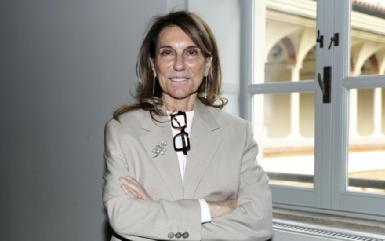
ARSTANNERY 51 MARKET
AGOSTINO APOLITO, DIRETTORE ASSOMAC
MARIA VITTORIA BRUSTIA, PRESIDENTE ASSOMAC E SIMAC TANNING TECH
AGOSTINO APOLITO, DIRETTORE ASSOMAC
MARIA VITTORIA BRUSTIA, PRESIDENTE ASSOMAC E SIMAC TANNING TECH
MACCHINE PER CALZATURE E PELLETTERIA
GENNAIO-FEBBRAIO 2024
VALORE (IN MILIONI DI €) %
VARIAZIONE %
GENNAIO-FEBBRAIO 2024/2023
EUROPA 7,49 64,13 -35,71
ASIA 1,6 13,7 -53,7
AMERICA 1,86 15,92 23,24
AFRICA 0,65 5,57 -26,32
OCEANIA 0,08 0,68 -1,09 TOTALE
Dai dati elaborati dal Centro Studi Confindustria risulta evidente che per il 2024 le prospettive sull’economia italiana restano fiacche e incerte. Sono preponderanti i rischi al ribasso, dovuti soprattutto all’ampliamento delle tensioni geopolitiche, legate all’ulteriore guerra in Medio Oriente, alla maggiore frammentazione produttiva internazionale e alle possibili ripercussioni sui prezzi delle commodity. Vari i fattori negativi: si protrae il freno ai flussi commerciali nel canale di Suez, il petrolio continua a rincarare, il taglio dei tassi è rinviato ancora, il credito alle imprese resta in calo. Si prospetta un PIL debole nel 1° trimestre 2024. In crescita solo parte dell’economia. Nel 1° trimestre 2024 il PIL italiano è cresciuto (+0,3%), ma la produzione dell’industria e i consumi di beni si sono contratti. Emblematica la situazione delle macchine utensili, che ben rappresentano il settore della meccanica strumentale: già a fine 2023, tra ottobre e dicembre, gli ordini interni si erano più che dimezzati. Tra gennaio e marzo, la caduta su base annua è stata di quasi 20 punti, arrivando a dimezzare la domanda in Italia rispetto alla media. Il 2024 è iniziato con segnali preoccupanti; nel primo trimestre 2024 il settore “pelli, cuoio e calzatura” ha presentato il maggior incremento, a livello nazionale, di ricorso alla CIG: +128,6% rispetto allo stesso periodo del 2023.
Toscana e Campania sono l’epicentro della crisi della pelle. Qui il ricorso alla cassa integrazione ha superato anche i livelli record del 2010.
Dai sondaggi promossi dalle Associazioni della filiera nei confronti dei loro associati risulta che gran parte di essi ritengono che la ripartenza non avverrà prima del 2025. Al momento non è facile lanciarsi in previsioni, ma sicuramente sarà un anno complesso.
Per quanto concerne il settore delle macchine per conceria, calzature e pelletteria, dall’indagine effettuata presso un campione significativo di aziende risulta:
– ORDINI INTERNI: il 76% degli intervistati prevede una contrazione e il 24% che restino invariati;
- ORDINI ESTERNI: il 47% prevede una contrazione, il 35% che restino invariati e il 18% che aumentino.
I mercati sui quali le aziende stanno esportando sono soprattutto quelli europei - Spagna, Germania, Portogallo e Francia - America - Stati Uniti, Canada, Messico e Brasile - e in Asia India, Indonesia e Cina.
Gli ultimi dati Istat disponibili relativi al primo bimestre 2024 evidenziano una contrazione delle esportazioni rispetto allo stesso periodo dell’anno precedente. Tale contrazione è più accentuata per il settore delle macchine per calzature e pelletteria (-33,52%), per quello delle macchine per conceria (-22,22%), mentre è più contenuta per le parti di ricambio (-5,21%).
La Presidente di ASSOMAC e SIMAC TANNING TECH, Maria Vittoria Brustia, sottolinea come “dopo un 2023 comunque positivo, questo primo periodo dell’anno mostra un avvio negativo degli ordini esteri e preoccupazioni anche sul fronte interno, viste le difficoltà delle aziende della filiera. Su tutti i settori pesano la questione israelo-palestinese e il prolungarsi del conflitto tra Russia e Ucraina, con le conseguenti incertezze”.
Il Direttore di ASSOMAC, Agostino Apolito, evidenzia che “Senza prospettive di ripresa delle vendite e senza garanzie di flussi economici in entrata rimane bassa la propensione delle imprese ad effettuare investimenti in tecnologia. Per questo sia Federmacchine che Confindustria hanno più volte ribadito che occorre rilanciare gli investimenti, varando i decreti attuativi di Industria 5.0, ma non solo, individuando una misura con un orizzonte più a lungo termine”.
Senza gli incentivi per il nuovo capitale materiale e immateriale per innestare le innovazioni digitali nei processi produttivi e per proseguire nella transizione energetica, la crescita della produttività resta frenata e così la loro proiezione sui mercati globali. Per le nazioni avanzate gli incrementi di efficienza richiedono investimenti in innovazione e nuove competenze, e anche incentivi ben disegnati rispetto agli obiettivi. “Se la spinta per porre rimedio a una produttività stagnante deve essere prioritaria, gli incentivi non possono attendere”, conclude Apolito.
52 ARSTANNERY MARKET
100
11,68
-33,52
NEW LOGO FOR THE 50TH ANNIVERSARY OF SIMAC TANNING TECH
A modern and attractive design distinguishes the new logo celebrating the important milestone reached by the event, scheduled to take place from 17 to 19 September 2024
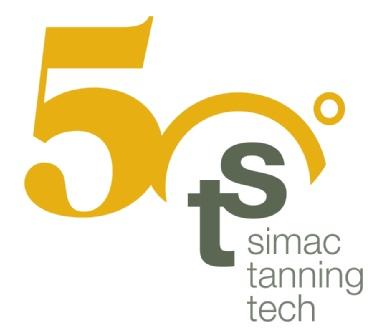
On the occasion of the opening of registration applications for Simac Tanning Tech, the world’s leading exhibition dedicated to technologies for the footwear, leather goods and tanning industry, the new official logo celebrating the 50th anniversary of the event was presented. The modern and attractive design retains the iconic elements of the original logo, while the number ‘50’ stands out in the foreground, highlighting the importance of the historic milestone reached. This edition promises to be full of novelties for technologies and machinery for the footwear, tanning and leather goods industry. Starting from the initiatives for the valorisation of the technological innovations presented at the fair, to the networking initiatives.
There will also be moments dedicated to the celebration of the historic anniversary, such as the setting up of an exhibition on technology, which will retrace the history of the sector in a fascinating journey through the evolution of the industry and its future.
The appointment, not to be missed, is therefore in Milan from 17 to 19 September 2024, with the presence of more than 300 exhibitors who will present the latest in technology for the footwear, leather goods and tanning industries. Info: www.simactanningtech.it
NUOVO LOGO PER IL 50° ANNIVERSARIO DI SIMAC TANNING TECH
Un design moderno e accattivante contraddistingue il nuovo logo che celebra l’importante traguardo raggiunto dalla manifestazione, in calendario dal 17 al 19 settembre 2024
In occasione dell’apertura delle domande di iscrizione a Simac Tanning Tech, la fiera leader mondiale dedicata alle tecnologie per l’industria calzaturiera, pellettiera e conciaria, è stato presentato il nuovo logo ufficiale per celebrare il 50esimo anniversario della manifestazione. Il design moderno e accattivante conserva gli elementi iconici del logo originale, mentre il numero “50” campeggia in primo piano, evidenziando l’importanza del traguardo storico raggiunto. Un’edizione, questa, che si preannuncia ricca di novità per le tecnologie e i macchinari per l’industria delle calzature, concia e pelletteria. A cominciare dalle iniziative di valorizzazione delle innovazioni tecnologiche presentate in fiera, per passare alle iniziative di networking. Non mancheranno, inoltre, momenti dedicati alla celebrazione dell’anniversario storico, come l’allestimento di una mostra sulla tecnologia, che ripercorrerà la storia del settore in un viaggio affascinante sull’evoluzione della filiera e del suo futuro.
L’appuntamento, da non perdere, è quindi a Milano dal 17 al 19 settembre 2024, con la presenza di oltre 300 espositori che presenteranno le ultime novità in materia di tecnologie per le industrie della calzatura, pelletteria e conceria. Info: www.simactanningtech.it

ARSTANNERY 53 NEWS
50 EDITIONS OF SIMAC, A SUCCESS STORY
SIMAC TANNING TECH is much more than just a trade fair. It is a journey through the history of the footwear and leather processing industry, an event that celebrates its 50th edition with pride and innovation
In Italy, the first edition of an autonomous exhibition where the machinery and technologies of the sector are the main protagonists took shape in 1973 with the realisation of an international exhibition of machinery for the footwear and tanning industry: SIMAC. The first edition was held in the Milan Trade Fair Building from 1 to 4 June of that year.
BEFORE SIMAC
Since the first half of the 20th century, footwear manufacturers had been exhibiting at generic or finished product events such as the ‘Fiera Campionaria’ in Milan, the ‘National Footwear Fashion Presentation’ in Bologna, which later became ‘Modacalzatura’, or the ‘Settimana Vigevanese’, which later became the ‘National Footwear Exhibition’ and then moved to Milan in 1969 under the name of Micam: ‘Mostra Internazionale delle Calzature, Concerie, Accessori e Macchine per calzature’, as well as the ‘Mostra della Calzatura di Civitanova Marche’ and the ‘Campionaria Internazionale di Calzature, Pelletterie e Cuoio’ in Florence, to which were added the ‘Preselezioni Italiane della Moda’, biennial exhibitions reserved for manufacturers upstream of the shoe factories for the presentation of tanning, accessories and components production and, in particular, of stylists.
This productive vitality and the rapid development in the 1960s of the Italian industrial fabric of footwear and leather machinery were therefore the prelude to the creation of an event that could compete with the reference exhibition of the time, the ‘Internationale Messe für Shuhfabrikation’ (IMS) in Pirmasens, Germany, which was however held every three years.
SIMAC IS BORN
The birth of SIMAC as a new exhibition reality within this articulated framework was the result of a long and difficult negotiation between the pre-existing trade fair organisations and the Vigevano mechanical entrepreneurs. The clash was resolved with the co-ownership of the new event between A.N.C.I. (National Association of Italian Footwear Manufacturers) and the Bologna Trade Fair Authority, with the presidency entrusted to the Vigevano entrepreneur Antonio Capuano and the decision to alternate editions between Milan and Bologna. Following this agreement, the second edition of Simac was
held in Bologna in 1974. In the following years, however, the exhibition always remained in the pavilions of the Milan Trade Fair.
In 1977, Simac and the Florence Trade Fair reached an agreement to create the ‘Simac-Italian Fashion Exhibition’, i.e. an exhibition where all sectors upstream of the finished product, from machinery to tanned leather, to components including footwear accessories, would converge.
IN THE HANDS OF ASSOMAC
We had to wait until the early 1980s to see ownership of the exhibition pass entirely to Assomacc, later to become Assomac, which, starting from the presidency of Mario Bruggi in 1983, managed it directly.
THE BOLOGNA YEARS
The move to Bologna took place in 1988 in conjunction with Lineapelle, the event created in 1981 with the absorption of the ‘Preselezione Italiana Moda’ trade fair.
Apart from the parenthesis of an ‘itinerant Simac’ held in 1991 at the IMS in Pirmasens, the exhibition remained in Bologna until 2013, moving in 2008 from the historic spring event to an autumn edition.
THE UNION WITH TANNING TECH
Since 2007, Simac has been organised in conjunction with TANNING-TECH, the exhibition that for a decade has brought together exhibitors of tanning technology and chemical auxiliaries in Bologna. Originally organised by CIMACO, the group within ANIMA - National Association of Mechanical and Allied Industries that brought together the Italian manufacturers of machinery for the tanning industry, the event passed under the organisation of SIMAC in 1996, together with the confluence of the entire group of mechano-tanning companies within Assomac.
THE RETURN TO MILAN
The return of the event to Milan takes place in 2015, at the new exhibition centre in Rho, where it will be organised in February. At the same time, the rebranding of the two fairs to SIMAC TANNING TECH - International Exhibition of Machines and Technologies for the Footwear, Leathergoods and Tanning Industries takes place. In the post-pandemic period, it is decided to move the exhibition to September.
54 ARSTANNERY FAIRS

FAIRS ARCHIVIO STORICO DI FONDAZIONE FIERA MILANO

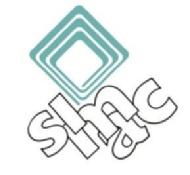
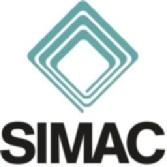
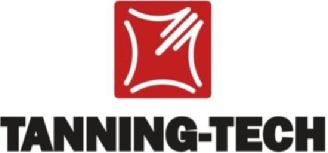
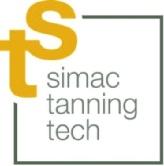
PRESENT AND FUTURE
The SIMAC TANNING TECH trade fair, thanks to its vitality and consolidated collaboration with Agenzia ICE, has benefited over the years from the presence of numerous buyers and visitors from every corner of the world. Since the boom of the 1960s/70s and withstanding the various industrial crises that have occurred over time, SIMAC TANNING TECH has established itself as an unmissable international event, an important reference point for the entire footwear, leather goods and leather processing industry. This year, on the occasion of its 50th edition, the fair will be held at Rho Fiera Milano from 17 to 19 September 2024 and will be a unique opportunity to celebrate the past and look to the future of an industry in continuous evolution.
50 EDIZIONI DI SIMAC, UNA STORIA DI SUCCESSO
SIMAC TANNING TECH è molto più di una semplice fiera. È un viaggio attraverso la storia dell’industria calzaturiera e della lavorazione delle pelli, un evento che celebra la sua cinquantesima edizione con orgoglio e innovazione
In Italia la prima edizione di un salone autonomo dove le macchine e le tecnologie del settore sono le protagoniste principali di una manifestazione prende forma nel 1973 con la realizzazione di un salone internazionale delle macchine per l’industria calzaturiera e conciaria: il SIMAC. La prima edizione si tenne nel Palazzo della Fiera di Milano dall’1 al 4 giugno di quell’anno.
PRIMA DI SIMAC
Fin dalla prima metà del ‘900 le industrie meccaniche esponevano all’interno di manifestazioni generiche o del prodotto finito come la “Fiera Campionaria” di Milano, la “Presentazione Nazionale Moda della Calzatura” di Bologna, poi diventata “Modacalzatura”, o la “Settimana Vigevanese” poi diventata “Mostra Mercato Nazionale delle
56 ARSTANNERY FAIRS
THE HISTORY OF THE EVENT CAN BE READ IN THE CHANGING LOGOS NELLO MUTARE DEI LOGHI SI LEGGE LA STORIA DELLA MANIFESTAZIONE
Calzature” e trasferitasi quindi nel 1969 a Milano con la denominazione di Micam: “Mostra Internazionale delle Calzature, Concerie, Accessori e Macchine per calzature”, oltreché la “Mostra della Calzatura di Civitanova Marche” e la “Campionaria Internazionale di Calzature, Pelletterie e Cuoio” di Firenze, a cui si affiancavano le “Preselezioni italiane della moda”, mostre biennali riservate ai produttori a monte dei calzaturifici per la presentazione della produzione conciaria, di accessori e componentistica e, in particolar modo, degli stilisti.
Questa vitalità produttiva e il rapido sviluppo negli anni ’60 del tessuto industriale italiano delle macchine per calzature e della pelle furono il preludio quindi della creazione di una manifestazione che potesse competere con la mostra di riferimento di quel tempo, la “Internationale Messe für Shuhfabrikation” (IMS) di Pirmasens in Germania, che aveva però cadenza triennale.
NASCE SIMAC
La nascita del SIMAC come nuova realtà espositiva all’interno di questo quadro articolato fu il risultato di una lunga
e difficile trattativa tra le pre-esistenti organizzazioni fieristiche e gli imprenditori meccanici vigevanesi, lo scontro si risolse con la co-titolarità della nuova manifestazione tra A.N.C.I. (Associazione Nazionale Calzaturifici Italiani) e l’Ente Fiera di Bologna, con la presidenza affidata all’imprenditore vigevanese Antonio Capuano e la decisione di alternare le edizioni tra Milano e Bologna.
A seguito di tale accordo la seconda edizione del Simac si tenne a Bologna nel 1974. Negli anni successivi, però, la Mostra rimase sempre nei padiglioni della Fiera di Milano. Nel 1977 il Simac e la Campionaria di Firenze raggiunsero un accordo per dar vita al “Simac-Preselezione Italiana Moda”, cioè un’esposizione in cui convergessero tutti i settori a monte del prodotto finito, dalle macchine alle pelli conciate, ai componenti comprendendo gli accessori per calzature.
NELLE MANI DI ASSOMAC
Bisogna attendere i primi anni ’80 pre vedere la titolarità della manifestazione passare interamente ad Assomacc, poi diventata Assomac, che a partire dalla presidenza di Mario Bruggi nel 1983 la gestirà direttamente.
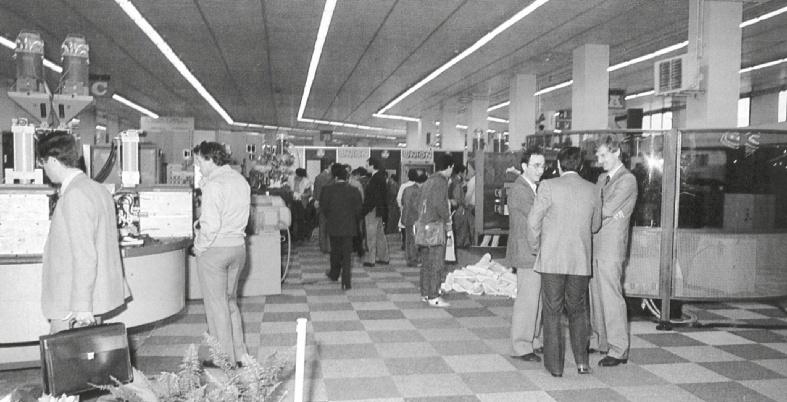
ARSTANNERY 57 FAIRS
SIMAC 1984
GLI ANNI DI BOLOGNA
Lo spostamento a Bologna avviene nel 1988 in concomitanza con Lineapelle, la manifestazione nata nel 1981 con l’assorbimento della fiera “Preselezione Italiana Moda”. A parte la parentesi di un “Simac itinerante” che nel 1991 si tiene all’interno della IMS di Pirmasens, la mostra rimarrà a Bologna fino al 2013, passando nel 2008 dallo storico appuntamento primaverile ad un’edizione autunnale.
L’UNIONE
CON TANNING TECH
Dal 2007 il Simac viene organizzato in concomitanza con il TANNING-TECH, la fiera che per una decade ha raggruppato a Bologna gli espositori delle tecnologie conciarie e degli ausiliari chimici per la concia. Originariamente
organizzata da CIMACO, il gruppo all’interno di ANIMA (“Associazione Nazionale delle Industrie Meccaniche e Affini”) che riuniva i costruttori italiani di macchine per l’industria conciaria, la manifestazione passa nel 1996 sotto l’organizzazione di SIMAC insieme alla confluenza di tutto il gruppo di aziende meccano-conciarie all’interno di Assomac.
IL RITORNO A MILANO
Il ritorno della manifestazione a Milano avviene nel 2015, presso il nuovo quartiere fieristico di Rho, dove verrà organizzata nel mese di febbraio. Contestualmente avviene il rebranding delle due fiere in SIMAC TANNING TECH
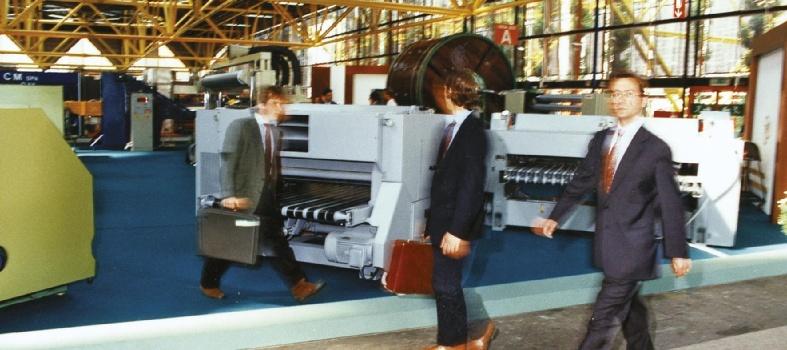

58 ARSTANNERY
FAIRS
SIMAC 1992 SIMAC 2002
- Saloni internazionali delle macchine e delle tecnologie per le industrie calzaturiera, pellettiera e conciaria. Nel periodo post pandemico si decide di spostare la manifestazione a settembre.
PRESENTE E FUTURO
L’appuntamento fieristico di SIMAC TANNING TECH, grazie alla sua vitalità e alla consolidata collaborazione con Agenzia ICE, ha beneficiato nel corso degli anni della presenza di numerosi buyers e visitatori da ogni angolo del mondo.Dal boom degli anni ‘60/70 e resistendo alle varie crisi industriali che si sono verificate nel tempo, SIMAC TANNING TECH si affermato come un appun-
tamento internazionale irrinunciabile, un punto di riferimento importante per tutta l’industria calzaturiera, pellettiera e della lavorazione delle pelli. Quest’anno, in occasione della 50ª edizione, la fiera si terrà a Rho Fiera Milano dal 17 al 19 settembre 2024 e sarà un’occasione unica per celebrare il passato e guardare al futuro di un settore in continua evoluzione.

ARSTANNERY 59 FAIRS
SIMAC 2023
‘ASSOMAC AROUND THE WORLD’: AN INTERNATIONAL PRESENCE TO PROMOTE ITALIAN TECHNOLOGIES
The Association of Italian Manufacturers of Footwear, Leather Goods and Tanning Machinery continues in 2024 with its programme of participation in international trade fairs, which will end next September with the special edition for the 50th anniversary of Simac Tanning Tech.
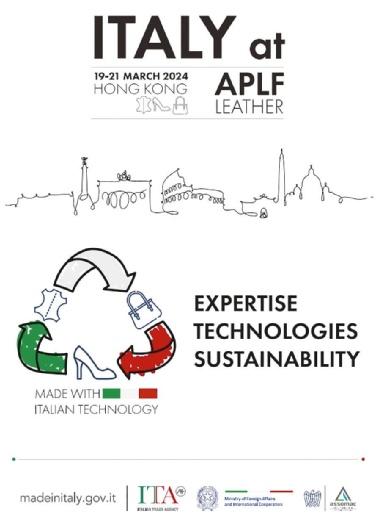
The ‘Assomac around the world’ programme continues in 2024, which brings the National Association of Italian Manufacturers of Footwear, Leather Goods and Tanning Machinery to be present at some of the most important international trade fairs starting in January and ending next September, with the special edition for the 50th anniversary of Simac Tanning Tech, which will be held from 17 to 19 at the Milan Rho Fiera.
This intense trade fair activity is part of Assomac’s internationalisation strategy, which aims to promote Italian
technologies worldwide and strengthen the competitiveness of its member companies. The aim of these international presences is to promote Italian technologies in the world and strengthen the competitiveness of member companies.
‘Participation in these trade fairs is an important opportunity for our companies to meet international buyers and present their innovative solutions,’ said Agostino Apolito, Director General of Assomac. ‘We are convinced that technology is a key factor for the competitiveness of our sector and we are committed to supporting our companies in their path of innovation.’
The programme started last January with participation with stands and collectives at the Pakistan Mega Leather Show in Lahore, Pakistan. Then it was the turn of Lineapelle New York, from 31 January to 1 February; India International Leather Fair, from 1 to 3 February in Chennai, India; Lineapelle Milano, from 20 to 22 February in Milan, Italy; APLF Leather, from 19 to 21 March in Hong Kong, China. In April (9 -10/04), ‘Assomac around the world’ made a stop in Florence with participation in EP- Summit, the second edition of the Pitti Immagine event dedicated to the relationship between fashion and the digital world, held at the Stazione Leopolda. This was followed by AYSAF, Turkey 2-5 May.
Upcoming events will see the Association present at Shoes and Leather Vietnam, from 10 to 12 July in Ho Chi Minh, Vietnam; All China Leather Exhibition in Shanghai, China, from 3 to 5 September . To conclude with the organisation of the special 50th edition of Simac Tanning Tech, from 17 to 19 September.
Assomac participates in these fairs with a series of initiatives, including: company stands, where member companies can present their technologies and innovative solutions; events and workshops, to promote research and technological development in the sector; and B2B meetings, to encourage the creation of business relations between Italian companies and international buyers. In particular, Assomac is dedicating a focus to virtual reality (VR) with the use of visors. For the first time, during the last Simac Tanning Tech, Assomac in collaboration with PIN (Polo Universitario Città di Prato), presented a production plant with machinery for tanning, leather goods and footwear, which could be visited virtually thanks to
60 ARSTANNERY NEWS
3D visors. Virtual reality provided an immersive learning experience, allowing users to explore, investigate and learn through a fist-person approach with a high degree of embodiement. This means that users were able to interact directly and voluntarily with the goods products and production technologies of the sector, enhancing their understanding of the operations involved in the production processes.
‘ASSOMAC
AROUND THE WORLD’: UNA PRESENZA INTERNAZIONALE
L’Associazione Costruttori Italiani Macchine per Calzature, Pelletteria e Conceria prosegue anche nel 2024 con il suo programma di partecipazione alle fiere internazionali che si concluderà il prossimo settembre con l’edizione speciale per i 50 anni di Simac Tanning Tech.
Anche nel 2024 prosegue il programma ‘Assomac around the world’, che porta l’Associazione Nazionale dei Costruttori Italiani di Macchine per Calzature, Pelletteria e Conceria ad essere presente ad alcune tra le maggiori fiere internazionali a partire dal mese di gennaio e fino al prossimo settembre, con l’edizione speciale per i 50 anni di Simac Tanning Tech, che si terrà dal 17 al 19 a Milano Rho Fiera. Questa intensa attività fieristica è parte della strategia di internazionalizzazione di Assomac, che mira a promuovere le tecnologie italiane nel mondo e a rafforzare la competitività delle imprese associate. L’obiettivo di queste presenze internazionali è promuovere le tecnologie italiane nel mondo e rafforzare la competitività delle imprese associate. “La partecipazione a queste fiere è un’occasione importante per le nostre imprese per incontrare i buyer internazionali e presentare le proprie soluzioni innovative”, ha dichiarato Agostino Apolito, Direttore Generale di Assomac. “Siamo convinti che la tecnologia sia un fattore chiave per la competitività del nostro settore e siamo impegnati a supportare le nostre imprese nel loro percorso di innovazione”. Il programma è partito lo scorso gennaio con la partecipazione con stand e collettive presso il Pakistan Mega Leather Show a Lahore, Pakistan. È stata poi la volta di Lineapelle New York, dal 31 gennaio al 1 febbraio; India International
Leather Fair, dal 1 al 3 febbraio a Chennai, India; Lineapelle Milano, dal 20 al 22 febbraio a Milano, Italia; APLF Leather, dal 19 al 21 marzo a Hong Kong, Cina. Ad aprile (9 -10/04), “Assomac around the world” ha fatto tappa a Firenze con la partecipazione a EP- Summit, la seconda edizione dell’appuntamento di Pitti Immagine dedicato ai rapporti tra moda e mondo digitale, che si è svolto alla Stazione Leopolda. In seguito AYSAF, Turchia 2-5 maggio. I prossimi appuntamenti vedranno l’Associazione presente a Shoes and Leather Vietnam, dal 10 al 12 luglio a Ho Chi Minh, Vietnam; All China Leather Exhibition a Shangai in Cina, dal 3 al 5 settembre. Per concludersi con l’organizzazione dell’edizione speciale del cinquantesimo di Simac Tanning Tech, dal 17 al 19 settembre. Assomac partecipa a queste fiere con una serie di iniziative, tra cui: stand aziendali, dove le imprese associate possono presentare le proprie tecnologie e soluzioni innovative; eventi e workshop, per promuovere la ricerca e lo sviluppo tecnologico nel settore e incontri B2B, per favorire la creazione di relazioni commerciali tra le aziende italiane e i buyer internazionali. In particolare, Assomac dedica un focus alla realtà virtuale (VR) con l’utilizzo dei visori. Per la prima volta, durante lo scorso Simac Tanning Tech, Assomac in collaborazione con PIN (Polo Universitario Città di Prato), ha presentato un plant produttivo con macchinari per conceria, pelletteria e calzature, visitabile virtualmente grazie a dei visori 3D. La realtà virtuale ha garantito un’esperienza di apprendimento immersiva, permettendo agli utenti di esplorare, investigare e apprendere tramite un approccio fist-person con un alto gradi di embodiement. Ciò significa che gli utenti hanno potuto interagire direttamente e in modo volontario con i prodotti merceologici e le tecnologie produttive del settore, migliorando la comprensione delle operazioni coinvolte nei processi produttivi.

ARSTANNERY 61 NEWS
PER PROMUOVERE LE TECNOLOGIE ITALIANE
THE ASSOMAC MERCEOLOGICAL PROJECT
From the first multilingual printed catalogues to the launch in the 1990s of the Assomac website with its Merchandise Directory, then combined with SIMAC TANNING TECH, up to the VR Technological Guide presented last September 2023, which combines immersive Virtual Reality and the simulated environment of a digital showroom
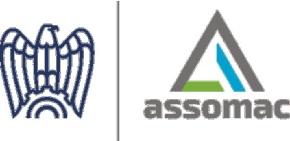
Assomac, founded in 1982, immediately began a study of the structure of the sector with a census of all the units, productive and otherwise, that make it up: equipment, machines and plants. The aims of this project are many. First of all, the desire to create an ‘Illustrative Volume’, destined to represent a real documented ‘Guide’ to the knowledge of the capacity and technological specialisations offered by the sector to the world production of leather products; secondly, the possibility of identifying the correct attribution of the sector’s production within the ISTAT customs items for export.
Thus Assomac’s first paper catalogues were born and soon the need was felt to translate this valuable information into the main European languages, and later into Russian and Chinese.
The 1990s saw the information technology revolution, the increasing use of personal computers, new forms of data storage and the first timid connections to the internet.
In 1997, Assomac’s product range was renewed and enriched with items relating to the mechano-concern sector. The need was felt to give further prominence to the Association’s image and to expand the activity associated with communication through the use of ‘innovative’ technologies. This resulted in the production of the product directory in 6 languages of all Assomac companies in the complete version and three directories dedicated to the footwear, leather goods and tannery machinery sectors respectively. At the same time, the same content was also produced on CD-Rom. This project also gave rise to Assomac’s first website, which hosted the ‘Merchandise Directory’ from its inception, where each company presented itself with all the relevant references and its own production, also with the inclusion of photographic material.
In 2013, Assomac’s new ‘Merchandise Catalogue’ project was presented, the one currently still in use in its structure.
The work carried out to date had catalogued all the types of machines present and produced more than 1,000 search entries. At the same time, there was also another sector product catalogue, the one relating to the SIMAC TANNING TECH trade fair, with a
different logical approach. With the redevelopment of the association’s merchandise directory, the ‘new’ classification also involves the trade fair catalogue, and is set up according to processing and process stages. Innovative and unique in the panorama of national and international association product catalogues was the decision to include ‘schematic examples’ of the machine headings as well as bibliographic descriptions that, translated into the languages of most significant interest, will facilitate the targeting of the main web search engines.
The ambitious project had among its objectives
- to be considered an international benchmark for the sector culture,
- identify technology by speaking the same language with the same codes,
- to help employees by means of visual diagrams and operating descriptions,
- create a digital sector directory with a maximum of 200/300 entries,
- use simple descriptive texts.
In 2022 Assomac started working on a new project: ‘Assomac VR Technological Guide’, which consists in the creation by PIN Polo Universitario di Prato of a VR environment simulating a digital showroom. The aim is to allow users to access a wide range of information on the products, technologies and production processes of Assomac’s three reference sectors.
A crucial part of the project was the re-presentation of the industry’s equipment and technologies through 3D modelling. three-dimensional models of the machinery were adapted for use in VR and integrated within the various high-detail virtual environments created and modelled specifically for the representation of the complexity of the different steps involved in the industry’s production processes.
Pin and Assomac aimed to offer a highly immersive experience, allowing users to explore, investigate and learn through a first-person approach with a significant degree of embodiment. This makes it possible to deeply engage users in the VR environment. One of the main goals is to ensure a high degree of immersiveness for users within the VR environment.
The VR Technological Guide was first presented in September 2023 at the Simac Tanning Tech and UITIC trade fair.
The combination of immersive Virtual Reality and the simulated environment of a digital showroom has proven at every opportunity to be a cutting-edge training tool that has revolutionised the way industry professionals gain knowledge and comprehension.
62 ARSTANNERY NEWS
IL PROGETTO MERCEOLOGICO ASSOMAC
Dai primi cataloghi cartacei multilingue al lancio
nei Novanta del sito web Assomac con relativo Repertorio Merceologico abbinato poi a SIMAC TANNING TECH, fino alla VR Technological Guide presentata lo scorso settembre 2023, che combina Realtà Virtuale immersiva e ambiente simulato di uno showroom digitale.
Assomac, fondata nel 1982, avvia fin da subito uno studio della struttura del settore con il censimento di tutte le unità, produttive e non, che lo compongono: attrezzature, macchine e impianti. Le finalità di questo progetto sono molteplici. Innanzitutto la volontà di realizzare un “Volume illustrativo”, destinato a rappresentare una vera e propria “Guida” documentata alla conoscenza della capacità e delle specializzazioni tecnologiche offerte dal settore alla produzione mondiale di prodotti in pelle; in secondo luogo, la possibilità di identificare la corretta attribuzione della produzione di settore nell’ambito delle voci doganali Istat per l’esportazione. Nascono così i primi cataloghi cartacei di Assomac e presto si sente la necessità di tradurre queste preziose informazioni nelle principali lingue europee, e successivamente anche in russo e cinese. Negli anni 90 si assiste alla rivoluzione informatica, l’utilizzo sempre più diffuso dei personal computer, di nuove forme di archiviazione di dati e le prime timide connessioni alla rete internet. Nel 1997 il merceologico Assomac si rinnova e si arricchisce delle voci relative al settore meccano-conciario. Si sente la necessità di dare ulteriore rilievo all’immagine dell’Associazione e di ampliare l’attività associata alla comunicazione attraverso l’uso di tecnologie “innovative”. Tutto ciò si è tradotto nella realizzazione del repertorio merceologico in 6 lingue di tutte le aziende Assomac nella versione completa e in tre repertori dedicati rispettivamente ai comparti macchine per calzature, per pelletteria e per conceria. Parallelamente si realizza lo stesso contenuto anche su Cd-Rom.
Da questo progetto prende forma anche il primo sito web Assomac che ha ospitato, fin dalla sua nascita, il “Repertorio Merceologico”, dove ogni azienda presentava se stessa con tutti i riferimenti relativi e la propria produzione, anche con inserimento di materiale fotografico.
Nel 2013 viene presentato il nuovo progetto del catalogo merceologico di Assomac, quello attualmente ancora in uso nella sua struttura.
Il lavoro svolto finora aveva catalogato tutte le tipologie di macchine presenti e prodotto oltre 1000 voci di ricerca. Parallelamente esisteva anche un altro repertorio merceologico di settore, quello relativo alla fiera SIMAC TANNING TECH, con una impostazione logica differente. Con la riqualificazione del merceologico associativo, la “nuova” classificazione coinvolge, invece, anche il catalogo fiera, ed è impostata secondo le fasi di lavorazione e processo. Innova-
tiva e unica nel panorama dei merceologici associativi nazionali e internazionali è stata la scelta di inserire delle “esemplificazioni schematiche” delle voci macchine, oltre a descrizioni bibliografiche che, tradotte nelle lingue di più significativo interesse, favoriranno il puntamento dei principali motori di ricerca su web.
L’ambizioso progetto aveva tra gli obiettivi:
· essere considerato punto di riferimento internazionale per la cultura di settore,
· identificare la tecnologia parlando la stessa lingua con gli stessi codici,
· aiutare gli addetti tramite schemi visivi e descrizioni di funzionamento,
· realizzare un repertorio digitale di settore con al massimo 200/300 voci,
· utilizzare semplici testi descrittivi.
Nel 2022 Assomac inizia a lavorare ad un nuovo progetto: “Assomac VR Technological Guide” che consiste nella creazione, da parte di PIN Polo Universitario di Prato, di un ambiente VR simulante uno showroom digitale. Lo scopo è quello di consentire agli utenti di accedere a una vasta gamma di informazioni relative ai prodotti merceologici, alle tecnologie e ai processi produttivi dei tre settori di riferimento di Assomac.
Una parte cruciale del progetto è stata la riproposizione delle apparecchiature e delle tecnologie del settore mediante modellazione 3D. i modelli tridimensionali dei macchinari sono stati adattati all’utilizzo in VR e integrati all’interno dei vari ambienti virtuali ad alto dettaglio creati e modellati appositamente per la rappresentazione della complessità delle diverse fasi coinvolte nei processi produttivi del settore.
Pin e Assomac hanno mirato ad offrire un’esperienza altamente immersiva, consentendo agli utenti di esplorare, investigare e apprendere attraverso un approccio first-person con un notevole grado di embodiement. Questo rende possibile un coinvolgimento profondo degli utenti in ambiente VR. Uno degli obiettivi principali è quello di garantire un alto grado di immersività per gli utenti all’interno dell’ambientazione VR.
La presentazione della VR Technological Guide è avvenuta la prima volta a settembre 2023 in occasione della Fiera Simac Tanning Tech e della manifestazione UITIC.
La combinazione di Realtà Virtuale immersiva e l’ambiente simulato di uno showroom digitale ha dimostrato ad ogni occasione di essere uno strumento di formazione d’avanguardia, che ha rivoluzionato il modo in cui gli operatori del settore acquisiscono conoscenze e comprensione.

ARSTANNERY 63 NEWS
IT-EX, THE
FIRST ASSOCIATION OF ITALIAN INTERNATIONAL TRADE FAIRS, IS BORN
Promoted by Fondazione Fiera Milano together with the main players in the sector, its main objectives are to support the internationalisation and development of the Italian trade fair system

Last February saw the signing of the memorandum of association that decreed the birth of IT-EX, the new association of Italian international trade fairs, which stands as an authoritative representative to support the interests and needs of the sector, promoting internationalisation.
IT-EX wants, in fact, to respond concretely to the international vocation of Italian industry with an industrial policy that favours exports and requires an equally international trade fair presence, which must develop along three lines: strategies to attract more and more exhibitors and visitors from abroad; direct organisation of Italian trade fairs abroad; offering, in terms of trade fair venues and services, high quality standards.
The new association is the result of the will of Fondazione Fiera Milano, a founding member, and of the constituent and constituent members - AIMPES Servizi S.r.l., A.N.C.I. Servizi S.r.l, ASSOMAC SERVIZI S.r.l., CEU - CENTRO ESPOSIZIONI UCIMU S.p.A., EICMA S.p.A., Federlegno Arredo Eventi S.p.A., Fiera Milano S.p.A., GE.FI S.p.A., IES S.r.l., Lineapelle S.r.l., Mifur S.r.l., Proposte Srl RX Italy S.r.l., S.I.TEX S.p.A. - to bring together and give voice to organisers and exhibition centres that are exclusively international, the Association will deal with industrial policy for the sector, giving a unified voice in relations with institutions and agencies that define the national strategy of export promotion and with the main European and world trade fair association organisations.
As of today, these entities attract 67% of exhibitors and 53% of visitors from abroad; figures that could reach much higher percentages with the involvement of the remaining Italian players at international level.
President Antonio Intiglietta: ‘The Association has set itself the goal, which can no longer be postponed, of making people understand how international trade fairs are a fundamental asset for companies and must assume a central role in defining a development strategy and industrial policy in a complex and changing global scenario’.
NASCE IT-EX, PRIMA ASSOCIAZIONE DELLE FIERE INTERNAZIONALI ITALIANE
Promossa da Fondazione Fiera Milano insieme ai principali attori del settore, ha come obiettivi principali il supporto all’internazionalizzazione e lo sviluppo del sistema fieristico italiano
È stato firmato nel febbraio scorso l’atto costitutivo che decreta la nascita di IT-EX, la nuova associazione delle fiere internazionali italiane, che si pone come rappresentante autorevole per supportare gli interessi e le esigenze del settore, favorendo l’internazionalizzazione. IT-EX vuole, infatti, rispondere concretamente alla vocazione internazionale dell’industria italiana con una politica industriale che favorisca l’export e che richiede una presenza fieristica altrettanto internazionale, che deve svilupparsi su tre direttrici: strategie per attrarre sempre più espositori e visitatori dall’estero; organizzazione diretta di fiere italiane all’estero; offerta, di quartieri fieristici e servizi, di standard qualitativi elevati. La nuova associazione nasce dalla volontà di Fondazione Fiera Milano, socio fondatore, e dei soci costituenti e costituendi – AIMPES Servizi S.r.l., A.N.C.I. Servizi S.r.l., ASSOMAC SERVIZI S.r.l, CEU - CENTRO ESPOSIZIONI UCIMU S.p.A., EICMA S.p.A., Federlegno Arredo Eventi S.p.A., Fiera Milano S.p.A., GE.FI S.p.A., IES S.r.l., Lineapelle S.r.l., Mifur S.r.l., Proposte Srl RX Italy S.r.l., S.I.TEX S.p.A. – per riunire e dare voce agli organizzatori e ai quartieri espositivi esclusivamente di livello internazionale, l’Associazione si
64 ARSTANNERY NEWS
occuperà della politica industriale per il settore, dando voce unitaria nei rapporti con istituzioni e agenzie che definiscono la strategia nazionale della promozione dell’export e con le principali organizzazioni associative fieristiche europee e mondiali. Ad oggi, tali soggetti attirano il 67% di espositori e il 53% visitatori dall’estero; dati che potrebbero raggiungere percentuali ben più alte con il coinvolgimento dei restanti player italiani di livello internazionale. Il Presidente Antonio Intiglietta: “L’Associazione si pone l’obiettivo, ormai non più rimandabile, di far comprendere quanto le fiere internazionali siano l’asset fondamentale per le imprese e deve assumere un ruolo centrale nella definizione di una strategia di sviluppo e di politica industriale in uno scenario mondiale complesso e mutevole”.


ARSTANNERY 65 NEWS
TODESCO, INNOVATION IS OUR NORTH STAR
CEO of the Veneto-based tannery machines company Paolo Todesco: "We aim to make processes more efficient and reduce plant maintenance"
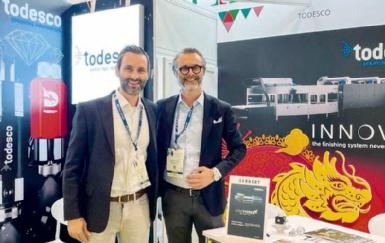
We take advantage of a quiet moment at APLF in Hong Kong to chat with Paolo Todesco, CEO of Todesco, an Italian manufacturer of technologically advanced machines for leather finishing.
First of all, what is your impression of the current fair?
"The first day was quite eventful, then the flow of visitors waned and it died down a bit. For that matter, we did not expect much different results. The international market is sluggish, and all the trade shows at this beginning of the year reflect this weak situation."
How important is the Chinese market for you?
"Despite the difficulties we are investing heavily by focusing on quality and technical service on the ground. Of course, it is not a bright market right now. We notice in general a very cautious approach with regard to investments, it tends to be conservative and postponing choices."
Beyond China, what is Todesco's strength in the market today?
"I think what rewards us is our 'zero compromise' philosophy in terms of quality and also the fact that we have chosen to focus on continuous technological innovation. We invest a lot in R&D and cultivate the ambition of being able to revolutionize the finishing industry step by step. After all, we certainly cannot play the price card: to work with the most important tanneries in the world we have to offer a certain added value, which as far as we are concerned means above all continuing to improve our technologies to be able to produce better and better while consuming fewer resources."
What do tanneries demand today?
"Tanneries face a very fluctuating demand, and it often happens that they have a need at the very times when they have work. Therefore everything has become a bit of an emergency. As a result you have to have a ready warehouse, non-stop on-site assistance, H24 service. It's not easy at all; we are saved by the fact that we produce robust machines, made well, which rarely fail and require little maintenance. Also because the finishing plants are then the ones that see the hides last, if they work badly you have to throw everything away after weeks of work. In addition, we always aim to work in partnership with the customer to make the process efficient by exploiting the full potential of the plants."
On a technological level, what improvements are you currently working on?
"Although we have already reached important peaks, we aim to further improve the efficiency of the process as a whole while also trying to simplify it. The overall goal is to advance in all areas': reducing processing times, eliminating downtime, saving chemical product and reducing emissions. All of this is also done through business intelligence tools: for example, we are working on a development to analyze productivity in real time, trying to resolve any snags that sometimes prevent us from achieving our planned goals. In addition, it is crucial that customers are able to use the machines to their full potential; this also implies a change of mentality in the tannery. In this regard, it is desirable that new figures enter the companies: technicians who can analyze data, production managers who can interpret the numbers that the machines offer in order to make a real leap in quality."
Last year at Tanning Tech you presented the Purple system for drying leathers at low temperatures using UV rays as catalysts. What was the feedback and what are you presenting this year in September?
"There is a lot of interest in the UV system because it cuts down on energy consumption and the leathers you get are very soft. Purple allows you to dry auto fixative on leathers at 30 degrees, with powers that used to have to be 150 Kw while now 30 Kw is enough. It is really a revolutionary process that is currently being tested. For the September fair, we aim to present an upgrade of our 'zero-maintenance' finishing lines by further increasing their efficiency."
How difficult is it to do research today?
"It is certainly an onerous endeavor: we spend about 60 to 70 thousand euros on patents a year and do not receive a single penny of public funds. It is not easy for companies of our size to con-
66 ARSTANNERY INTERVIEW
PAOLO TODESCO E NICOLA GARDIN ALLA APLF DI HONG KONG
PAOLO TODESCO AND NICOLA GARDIN AT APLF IN HONG KONG
tinue to invest by making ends meet even when the market does not shine. From this point of view, I think European funds for energy transition and emission reduction would be much more useful if they funded research by private companies that would certainly produce interesting results. History teaches us that the real green turnaround comes only when it pays to do it."
TODESCO, L’INNOVAZIONE È LA NOSTRA STELLA POLARE
Il CEO dell’azienda meccano-conciaria veneta
Paolo Todesco: “Puntiamo ad efficientare i processi e a ridurre la manutenzione degli impianti”
Approfittiamo di un momento di tranquillità della APLF di Hong Kong per scambiare quattro chiacchiere con Paolo Todesco, CEO di Todesco, azienda italiana produttrice di macchine tecnologicamente avanzate per la rifinizione della pelle.
Innanzitutto, quale impressione avete della fiera in corso?
“Il primo giorno è stato abbastanza movimentato, poi l’afflusso di visitatori è andato calando e si è un po’ spenta. Del resto, non ci aspettavamo risultati molto diversi. Il mercato internazionale è fiacco e tutte le manifestazioni fieristiche di questo inizio d’anno rispecchiano questa situazione di debolezza”.
Quanto conta per voi il mercato cinese?
“Nonostante le difficoltà stiamo investendo molto puntando sulla qualità e sul servizio tecnico in loco. Certo, non è un mercato brillante in questo momento. Notiamo in generale un approccio molto prudente relativamente agli investimenti, tende a essere conservativo e a posticipare le scelte”.
Al di là della Cina, qual è il punto di forza di Todesco oggi sul mercato?
“Credo che a premiarci sia la nostra filosofia ‘zero compromessi’ in termini di qualità e anche il fatto che abbiamo scelto di puntare sull’innovazione tecnologica continua. Investiamo moltissimo in R&S e coltiviamo l’ambizione di riuscire a rivoluzionare il comparto della rifinizione passo dopo passo. Del resto, non possiamo certo giocare la carta del prezzo: per lavorare con le concerie più importanti del mondo dobbiamo offrire un certo valore aggiunto che per quanto ci riguarda significa soprattutto continuare a migliorare le nostre tecnologie per riuscire a produrre sempre meglio consumando meno risorse”.
Cosa chiedono oggi le concerie?
“Le concerie fronteggiano una domanda molto altalenante e spesso capita che abbiano bisogno proprio nei momenti in cui hanno lavoro. Per questo è diventato un po’ tutto un’urgenza. Di conseguenza si deve avere un magazzino pronto, assistenza in loco no stop, servizio H24. Non è affatto facile, ci salva il fatto di produrre macchine robuste, fatte bene, che si guastano raramente e che richiedono poca manutenzione. Anche perché gli impianti di rifinizione sono
poi quelli che vedono le pelli per ultimo, se lavorano male devi buttare via tutto dopo settimane di lavoro. Inoltre, noi puntiamo sempre a lavorare in partnership con il cliente per efficientare il processo sfruttando tutte le potenzialità degli impianti”.
A livello tecnologico, su quali migliorie state lavorando al momento?
“Anche se abbiamo già raggiunto punte importanti, puntiamo a migliorare ulteriormente l’efficienza del processo nel suo insieme cercando anche di semplificarlo. L’obiettivo generale è quello di avanzare in tutti gli ambiti’: ridurre i tempi di lavorazione, eliminare i fermi macchina, risparmiare prodotto chimico e abbattere le emissioni. Il tutto anche attraverso strumenti di business intelligence: ad esempio stiamo lavorando ad uno sviluppo per analizzare la produttività in tempo reale, cercando di risolvere gli eventuali intoppi che talvolta impediscono di raggiungere gli obiettivi previsti. Inoltre, è fondamentale che i clienti riescano ad utilizzare le macchine sfruttando appieno le loro potenzialità; ciò implica anche un cambio di mentalità in conceria. A questo proposito è auspicabile che nelle aziende entrino nuove figure: tecnici in grado di analizzare i dati, direttori di produzione che sappiano interpretare i numeri che le macchine offrono per poter fare un vero salto di qualità”.
“The overall goal is to advance in all areas’: reducing processing times, eliminating downtime, saving chemical product and reducing emissions”.
L’anno scorso a Tanning Tech avete presentato il sistema Purple per l’asciugatura delle pelli a bassa temperatura utilizzando i raggi UV come catalizzatori. Quali sono stati i riscontri e cosa presenterete quest’anno a settembre?
“L’interesse verso il sistema a raggi UV è molto forte perché abbatte i consumi energetici e le pelli che si ottengono sono morbidissime: Purple permette di asciugare il fissativo auto sulle pelli a 30 gradi, con potenze che prima dovevano essere di 150 Kw mentre ora ne bastano 30 Kw. E’ davvero un processo rivoluzionario che attualmente è in fase di collaudo. Per la fiera di settembre, puntiamo a presentare un upgrade delle nostre linee di rifinizione ‘a zero manutenzione’ aumentandone ulteriormente l'efficienza”.
Quanto è difficile fare ricerca oggi?
“E’ certamente un impegno oneroso: noi spendiamo circa 60/70 mila euro di brevetti l'anno e non riceviamo un solo centesimo di fondi pubblici. Non è facile per aziende delle nostre dimensioni continuare a investire facendo quadrare i conti anche quando il mercato non brilla. Da questo punto di vista, credo che i fondi europei per la transizione energetica e l’abbattimento delle emissioni sarebbero molto più utili se finanziassero la ricerca delle aziende private che produrrebbe sicuramente risultati interessanti. La storia ci insegna che la vera svolta green si ottiene solo quando è conveniente farla”.
ARSTANNERY 67 INTERVIEW
NEW 3P MERGES ENTIRELY INTO ESCOMAR
An operation that reinforces the presence of the Veneto-based mechanical company, particularly in the tannery wet department

In spite of a difficult international context, at the beginning of the year Escomar Italia formalised the complete acquisition of New 3P srl of Arzignano in which it already held half of the shares. “Several years ago Escomar Italia had already taken over the share of 3P and renamed it New3P. Although the market situation today is dominated by uncertainty, for Escomar it was the time to complete the investment by acquiring the remaining 50 per cent,” as the company itself explained. Since last January, the administrative, technical and commercial staff of New 3P have been merged into Escomar Italia, which from now on will produce and market, in addition to its own machines, the ‘Pirana’ through-feed fleshing machine and the ‘Boy’ automatic toggler under the New 3P brand name. An investment that finds its rationale in the value of a historic brand in the tannery machines industry. Founded in 1963, 3P is world-famous for its production of through-feed fleshing machines (the first of its kind), together with hydraulic pumps for the disposal of fleshings and automatic toggling machines. With this operation, Escomar also strengthens its market presence particularly in the wet department of the tannery, as its speciality is presses for wet blue hides, which together with fleshing machines are precisely the first machines necessary for processing raw hides.
Always focused on the continuous improvement of its presses for drying wet-blue hides, in 2023 Escomar Italia introduced the electro-hydraulic ‘PCR-e8’ model to the market, which aroused great market interest. Compared to its predecessors, the new press has a higher drying force, which ensures high performance and guarantees significant production advantages with low energy consumption.
LA NEW 3P CONFLUISCE INTERAMENTE IN ESCOMAR
Un’operazione che rafforza la presenza dell’azienda meccanica veneta, in particolare per quanto riguarda il reparto bagnato delle concerie
A dispetto di un contesto internazionale difficile, all’inizio dell’anno Escomar Italia ha formalizzato l’acquisizione completa della New 3P srl di Arzignano di cui già deteneva metà delle quote societarie.
“Già diversi anni fa Escomar Italia aveva rilevato il 50% della 3P, rinominandola New3P. Malgrado la situazione del mercato oggi sia dominata dall’incertezza, per Escomar era arrivato il momento di completare l’investimento acquisendo il restante 50%” come spiegato dalla stessa azienda.
Dallo scorso gennaio il personale amministrativo, tecnico e commerciale della New 3P è quindi confluito in Escomar Italia che d’ora in avanti produrrà e commercializzerà, oltre alle proprie macchine, anche la scarnatrice in continuo “Pirana” ed il telaio automatico “Boy” a marchio New 3P. Un investimento che trova le sue ragioni nel valore di un marchio storico nel settore meccano-conciario. Fondata nel 1963, la 3P è famosa in tutto il mondo per la sua produzione di scarnatrici in continuo (la prima nel suo genere), insieme alle pompe per lo smaltimento del carniccio e ai telai automatici per inchiodare le pelli.
Con questa operazione, inoltre, Escomar rafforza la sua presenza di mercato in particolare nel reparto umido della conceria, dato che la sua specialità sono le presse per pelli wet blue che insieme alle scarnatrici sono appunto le prime macchine necessarie alla lavorazione della pelle grezza.
Da sempre attenta al miglioramento continuo delle sue presse per asciugare le pelli wet-blue, nel 2023 la Escomar Italia ha presentato sul mercato il modello elettroidraulico "PCR-e8” che ha suscitato un grande interesse di mercato. Rispetto alle versioni precedenti, la nuova pressa presenta infatti una forza di asciugatura superiore, che assicura prestazioni elevate garantendo notevoli vantaggi produttivi a fronte di un basso consumo energetico.
68 ARSTANNERY NEWS
MARIANO FERRARI, MARTINA DAL LAGO E NICOLA PIACENTINI DI ESCOMAR ITALIA
MARIANO FERRARI, MARTINA DAL LAGO AND NICOLA PIACENTINI OF ESCOMAR ITALIA

AS GREEN TECHNOLOGY, CUTTING-EDGE AND TAILOR-MADE SOLUTIONS
The Tuscan mechanical engineering company specialising in the design of leather handling, drying and conditioning systems is booming

Despite a difficult market context, this early 2024 sees the Tuscan company AS Green Technology working at full speed. Specialising in the production of a wide range of leather drying and conditioning systems, as well as overhead conveyors, automatic loaders and more, the company based in Montopoli in Val d'Arno (Pisa) is reaping the benefits of an activity that officially began only four years ago, but strengthened by experience that comes from much further afield. In August 2020, forced by events, the young entrepreneur Filippo Sani decided to set up a new company where he was able to transfer - and then increase - the know-how he had acquired by working for several years alongside his father, who had died prematurely, bringing with him a small group of highly experienced former colleagues who believed in him. In just a few years, this young entrepreneur has earned the trust of the customers through determination and foresight.
In just a few years, AS Green Technology has carved out an important share of the market. Can we make a small assessment?
"We are very satisfied with the road travelled so far. We have worked hard and today we can safely say that our customers include several prestigious tanneries working in both the fashion and automotive sectors. Italian and foreign companies that have evidently found in us a suitable technological partner. In addition, we also have customers from outside the industry with our automatic handling and transport lines".
What do customers appreciate most?
"The market seems to appreciate competence and flexibility, which in short means being able to listen to requests, analyse them and develop proposals in line with the tannery's needs. And then the quality of the technological offer, cutting-edge from all points of view and always tailor-made for the specific reality for which it is intended. We are like tailors: the level of customisation of the systems is our distinguishing feature. Another of our trump cards is the fact that we work in synergy with a number of specialised suppliers; we have built a network that allows us to make the production process more efficient by relying on other manufacturers for certain parts of the systems, thus saving time and costs".
How do your technologies differ?
"The adjective 'green' in our company name communicates a fundamental concept, namely that our plants are designed to work with environmentally friendly cycles by reducing energy consumption, processing times and emissions, while maintaining high quality levels. Our plants can be completely independent of any classical supply lines, such as steam, gas, hot water. Where possible, we use renewable electricity produced by photovoltaic plants and, thanks to conversion systems, we are able to guarantee process temperatures appropriate to the type of articulation”.
You were among the first to propose virtual reality. How is it going?
"It is a very popular tool. Virtual reality offers an extraordinary immersive experience, allowing you to experience the entire machining process in 360°. We use it both in the commercial phase, because it helps customers better understand the technologies, and for after-sales assistance where it has proved very useful, especially abroad, to help diagnose faults and malfunctions”.
What does 2024 look like?
"The tanning sector is suffering at the moment and so there is some uncertainty. As far as we are concerned, looking at the orders already in house, I tend to be confident that the company can match and even surpass the results of a very positive 2023".
Plans for the future?
"We are the leader of an important research project on the drying and conditioning of leather, which involves various players but of which it is still too early to give details. We will talk about this later”.
70 ARSTANNERY TECHNOLOGY
FILIPPO SANI
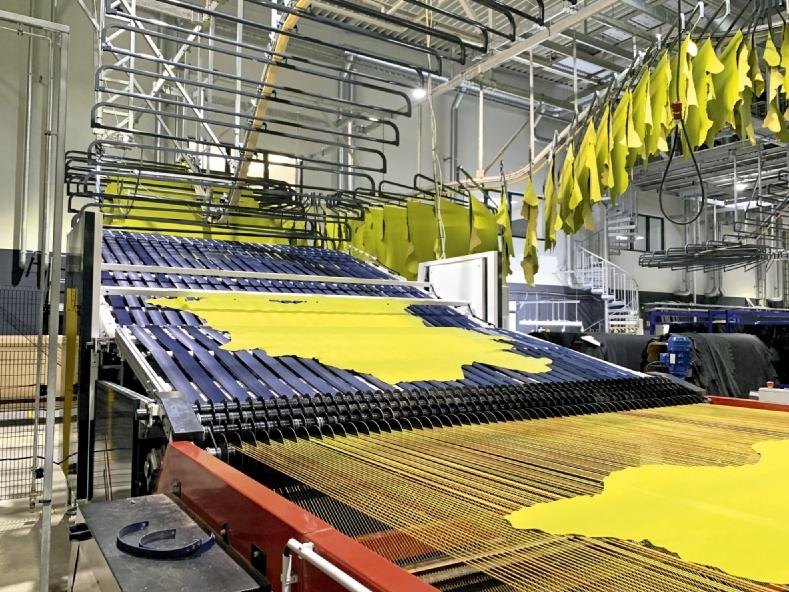
AS GREEN TECHNOLOGY, SOLUZIONI ALL’AVANGUARDIA E SU MISURA
In piena espansione l’azienda meccanica toscana specializzata nella progettazione di impianti di movimentazione, essiccazione e condizionamento dei pellami
A dispetto di un contesto di mercato difficile, questo inizio 2024 vede l’azienda toscana AS Green Technology lavorare a pieno ritmo. Specializzata nella produzione di un’ampia gamma di sistemi di essiccazione e condizionamento della pelle, nonché di trasportatori aerei, caricatori automatici e
altro, l’azienda di Montopoli in Val d’Arno (Pisa) raccoglie i frutti di un’attività iniziata ufficialmente soltanto quattro anni fa, ma forte di un’esperienza che viene da molto più lontano. Nell’agosto 2020, costretto dagli eventi, il giovane imprenditore Filippo Sani decide di creare una nuova società dove riesce a trasferire – e poi ad accrescere - il know how acquisito lavorando diversi anni a fianco del padre, prematuramente scomparso, portandosi dietro un piccolo gruppo di ex colleghi di grande esperienza che credono in lui. In pochi anni questo giovane imprenditore si è guadagnato la fiducia della clientela grazie a determinazione e lungimiranza.
In pochi anni AS Green Technology si è ritagliata una fetta di mercato importante. Possiamo fare un piccolo bilancio?
“Siamo molto soddisfatti della strada percorsa fin qui. Abbiamo lavorato duramente e oggi possiamo tranquillamente affermare che tra i nostri clienti figurano diverse concerie prestigiose che lavorano sia in ambito moda che nell’automo-
ARSTANNERY 71 TECHNOLOGY
CARICATORE PELLI HIDES LOADER
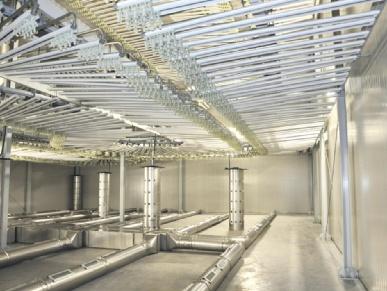
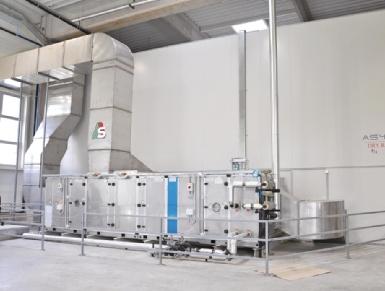
tive. Aziende italiane e straniere che hanno evidentemente trovato in noi un partner tecnologico adeguato. Inoltre, con le nostre linee di movimentazione e trasporto automatiche abbiamo anche dei clienti extra settore”.
Cosa apprezzano di più i clienti?
“Il mercato sembra apprezzare la competenza e la flessibilità, che in sintesi significa saper ascoltare le richieste, analizzarle e sviluppare proposte in linea con il fabbisogno della conceria. E poi la qualità dell’offerta tecnologica, all’avanguardia da tutti i punti di vista e sempre progettata su misura della specifica realtà cui è destinata. Siamo come dei sarti: il livello di customizzazione degli impianti è il nostro tratto distintivo. Un’altra nostra arma vincente è rappresentata dal fatto di lavorare in sinergia con alcuni fornitori specializzati, abbiamo costruito una rete che ci consente di efficientare il processo produttivo appoggiandoci ad altri produttori per alcune parti degli impianti, risparmiando così tempi e costi”.
In cosa si differenziano le vostre tecnologie?
“L’aggettivo ‘green’ della nostra ragione sociale comunica un concetto fondamentale, ovvero che i nostri impianti sono progettati per lavorare con cicli attenti all’ambiente riducendo i consumi energetici, i tempi di lavorazione e le emissioni, pur mantenendo elevati livelli di qualità. I nostri impianti possono essere completamente indipenden-
ti da qualsiasi linea di approvvigionamento classica, quale vapore, gas, acqua calda. Ove possibile, utilizziamo energia elettrica rinnovabile prodotta da impianti fotovoltaici e, grazie a sistemi di conversione, riusciamo a garantire temperature di processo adeguate al tipo di articolistica”.
Siete stati tra i primi a proporre la realtà virtuale. Come va?
“E’ uno strumento molto apprezzato. La realtà virtuale offre un’esperienza immersiva straordinaria, che consente di vivere a 360° l’intero processo di lavorazione. Noi la utilizziamo sia in fase commerciale, perché aiuta il cliente a capire meglio le tecnologie, che per l’assistenza post vendita dove si è rivelata utilissima, soprattutto all’estero, per aiutare a diagnosticare guasti e malfunzionamenti”.
Come si prospetta il 2024?
“Il settore conciario sta soffrendo in questo momento e quindi c’è un po’ di incertezza. Per quanto ci riguarda, guardando agli ordini già in casa, tendo ad essere fiducioso che l’azienda possa eguagliare e addirittura superare i risultati di un 2023 decisamente positivo”.
Progetti per il futuro?
“Siamo capofila di un importante progetto di ricerca sull’essiccazione e condizionamento del pellame che coinvolge diversi attori ma di cui è ancora presto fornire i dettagli. Ne parleremo più avanti”.
72 ARSTANNERY TECHNOLOGY
L’IMPIANTO DI ESSICCAZIONE AS 400
UN INTERNO DELLA CAMERA DI CONDIZIONAMENTO DEI PELLAMI
THE AS 400 DRYING PLANT
INTERIOR OF THE LEATHER CONDITIONING ROOM
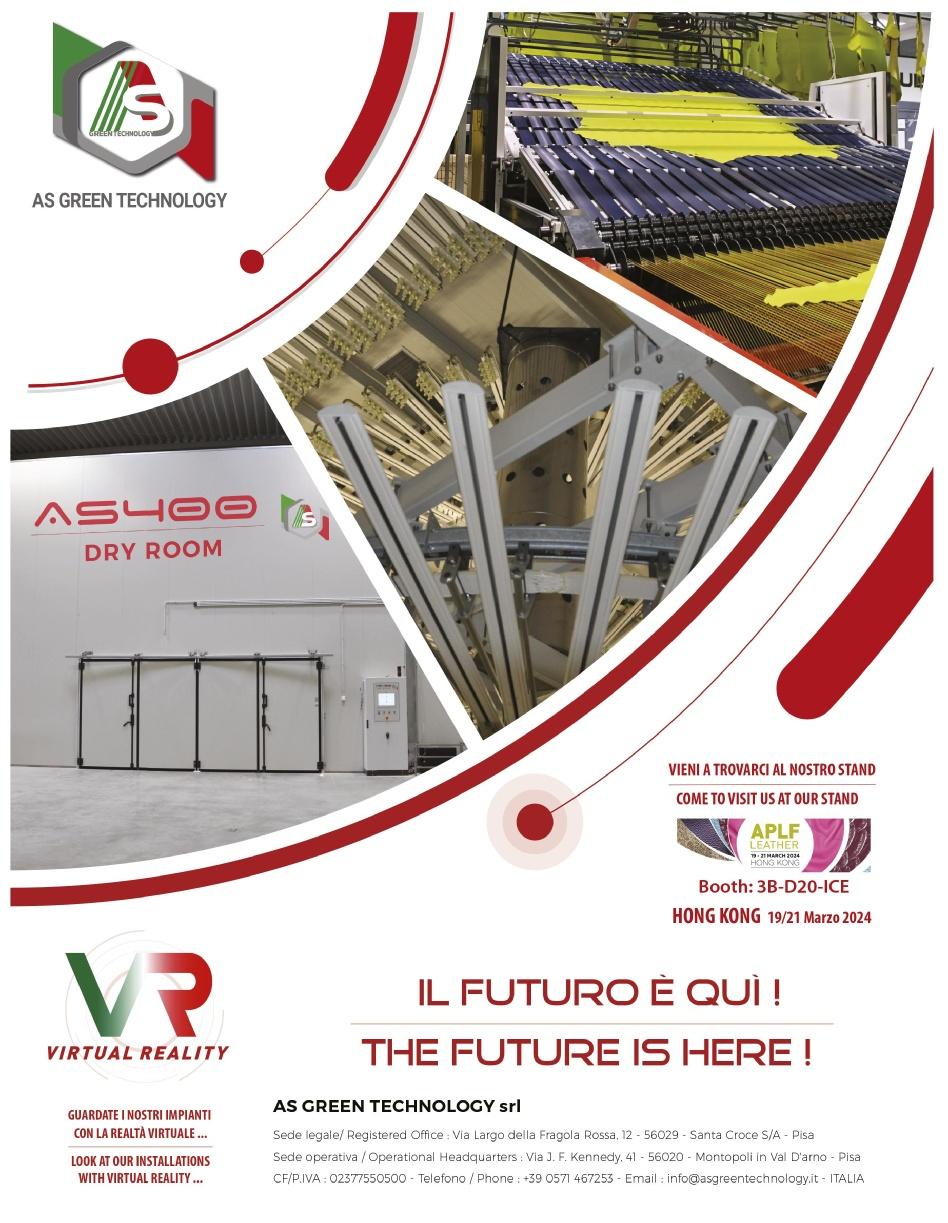
BELT FILTER, THE SELF-CLEANING BELT SCREEN
One of S.C. Costruzioni Meccaniche's bestsellers
Among the workhorses of S.C. Costruzioni Meccaniche is the Belt Filter, a self-cleaning belt screen for duct installation. The machine boasts a structure made entirely of AISI 304 steel, consisting of two sides and spacing columns. It is equipped with a continuous filtering belt, composed of special patented self-cleaning profile teeth made of wear and acid-resistant plastic material, assembled on AISI 304 stainless steel shafts with 100 mm or 225 mm pitch. The belt is laterally equipped with AISI 304 stainless steel sheets that intersect to form a continuous barrier against the lateral spillage of the screened material. At the base, a nylon bottom brush prevents the passage of solids through the rotating gap of the teeth. The belt is capable of separating suspended solids from the slurry and conveying them to the upper part of the machine where, thanks to the special conformation of the teeth, when the belt motion is reversed, self-cleaning takes place,
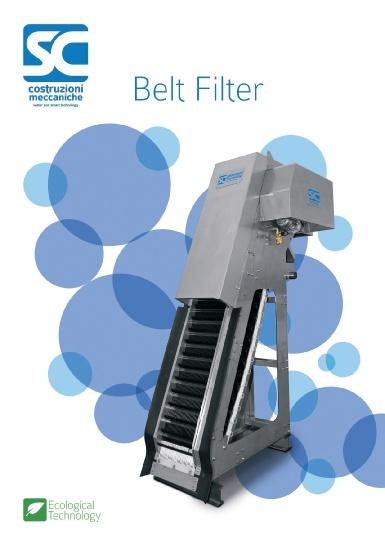
made more effective by the use of a counter-rotating brush at the discharge point. The solids, in this way, fall by gravity into the predetermined point.
The counter-rotating nylon brush is driven by a gearmotor dedicated to it and is mounted on an AISI 304 stainless steel shaft, supported by grease-lubricated supports and bearings. Belt Filter is also equipped with: belt drive shaft and chute to convey the screened material to the discharge point, drive gearmotor, AISI 304 stainless steel filtering belt washing piping, carter fixed with screws to the support structure and protection of all moving parts.
BELT FILTER, LA GRIGLIA AUTOPULENTE A NASTRO
Uno dei bestseller di S.C. Costruzioni Meccaniche
Tra i cavalli di battaglia di S.C. Costruzioni Meccaniche si distingue Belt Filter, griglia autopulente a nastro per installazione in canale. La macchina vanta una struttura completamente costruita in acciaio AISI 304, composta da due fiancate e da colonne distanziatrici. È dotata di nastro filtrante continuo, composto da denti di particolare profilo autopulente brevettato realizzati in materiale plastico resistente all'usura e agli acidi, assemblati su alberi in acciaio inox AISI 304 con passi di 100 mm oppure 225 mm. Il nastro è dotato lateralmente di lamine in acciaio inox AISI 304 che si intersecano in modo da formare una barriera continua contro la fuoriuscita laterale del materiale grigliato. Alla base, una spazzola di fondo in nylon evita il passaggio dei corpi solidi attraverso lo spazio di rotazione dei denti. Il nastro è in grado di separare, dal liquame, i solidi in sospensione e di convogliarli sulla parte superiore della macchina dove, grazie alla particolare conformazione dei denti, all'atto dell'inversione del moto del nastro, avviene l'autopulizia, resa più efficace dall'utilizzo di una spazzola controrotante nel punto di scarico. I solidi, in questo modo, cadono per gravità nel punto prestabilito. La spazzola controrotante in nylon è azionata da un motoriduttore ad essa dedicato ed è montata su albero in acciaio inox AISI 304, sostenuto da supporti e cuscinetti lubrificati a grasso. Belt Filter è inoltre provvista di: albero di trazione del nastro e scivolo per convogliare il materiale grigliato nel punto di scarico, motoriduttore di azionamento, tubazione di lavaggio del nastro filtrante in acciaio inox AISI 304, carter fissato con viti alla struttura di supporto e protezione di tutte le parti in movimento.

74 ARSTANNERY TECHNOLOGY


BERGI: INVESTING FOR A SUSTAINABLE FUTURE
The Veneto-based tannery machines company has expanded its Arzignano headquarters and reduced its environmental impact
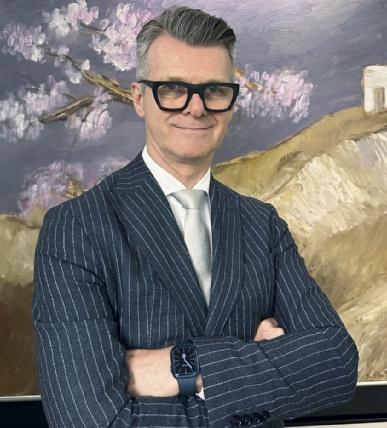
On the eve of its 60th anniversary, which it will celebrate in 2025, the Venetian mechano-tanning company Bergi SpA has made major investments that have expanded and renovated its Arzignano headquarters with a view to increasing sustainability. “We have recently completed the expansion of the Arzignano site to be able to work with greater comfort and safety in a wellequipped environment, but we have not limited ourselves to this”, reports CEO Mauro Bergozza. “In the Arzignano plant, in addi-
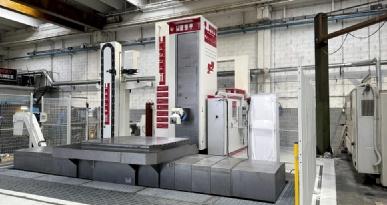
tion to the expansion, we have invested about 500 thousand euro to reduce our environmental impact. Work has been carried out on lighting, doors and windows, heating, and rainwater recovery”.
What solutions have you chosen to reduce energy consumption?
"We have replaced all gas boilers with heat pumps and two water collection tanks have been created, one to serve the fire-fighting system and the other for high-pressure washing of parts and machinery. We have just inaugurated a photovoltaic system that will meet about 90 per cent of our energy needs. In the Gambellara factory, we have eliminated the use of coal for the forge and carried out work to improve the efficiency of the electrical system by redesigning the fume extraction system. Lastly, we purchased a latest-generation machine tool to be even more autonomous in the production of our components. There have been many interventions in the last three years, but we are convinced that this is the only way to project the company into the future, reducing its environmental impact”.
What are the next targets?
"Soon we will also install a photovoltaic system at the Gambellara site and we aim to obtain ISO 14001 certification, which will help us manage the process of reducing emissions in the best possible way”.
BERGI:
INVESTIAMO PER UN FUTURO SOSTENIBILE
L’azienda meccano-conciaria veneta ha ampliato la sede di Arzignano e ridotto il proprio impatto ambientale
Alla vigilia del 60° anniversario, che celebrerà nel 2025, l’azienda meccano conciaria veneta Bergi ha realizzato importanti investimenti che hanno ampliato e rinnovato la sede di Arzignano in un’ottica di sempre maggiore sostenibilità. “Abbiamo recentemente completato l’ampliamento della sede di Arzignano per poter lavorare con maggior comodità e sicurezza in un ambiente ben attrezzato, ma non ci siamo limitati a questo –riferisce il CEO Mauro Bergozza -. Nello stabilimento di Arzignano, oltre all’ampliamento, abbiamo investito circa 500 mila euro per ridurre il nostro impatto ambientale. Gli interventi sono stati effettuati su: illuminazione, serramenti, riscaldamento, recupero dell’acqua piovana”.
76 ARSTANNERY TECHNOLOGY
MAURO BERGOZZA, CEO DI BERGI SPA
MAURO BERGOZZA, CEO OF BERGI SPA
Quali soluzioni avete scelto per diminuire i consumi energetici?
“Abbiamo sostituito tutte le caldaie a gas con delle pompe di calore e sono state create due vasche di raccolta dell’acqua, una a servizio dell’antincendio mentre l’altra per il lavaggio ad alta pressione di pezzi e macchinari. Abbiamo appena inaugurato un impianto fotovoltaico che soddisferà circa il 90% del nostro fabbisogno energetico. Nello stabilimento di Gambellara abbiamo eliminato l’utilizzo del carbone per la forgia ed effettuato interventi atti a efficientare l’impianto elettrico riprogettando anche l’impianto di aspirazione dei fumi. Da ultimo ab-
biamo acquistato una macchina utensile di ultimissima generazione per essere ancora più autonomi nella produzione dei nostri componenti. Gli interventi sono stati molti negli ultimi tre anni, ma siamo convinti che questa sia l’unica strada per proiettare l’azienda nel futuro, riducendone l’impatto ambientale”.
Quali i prossimi obiettivi?
“Presto installeremo un impianto fotovoltaico anche nella sede di Gambellara e puntiamo ad ottenere la certificazione ISO 14001, che ci aiuterà a gestire nel migliore dei modi il processo di riduzione delle emissioni”.
TANNERY MACHINES
Bergi specialises in the production of rotary presses for ironing and/or embossing, coating machines, buffing machines, dedusting machines and leather automation and handling systems.
Bergi è specializzata nella produzione di presse rotative per stirare e/o stampare, spalmatrici, smerigliatrici, depolveratrici e sistemi di automazione e movimentazione pelle.
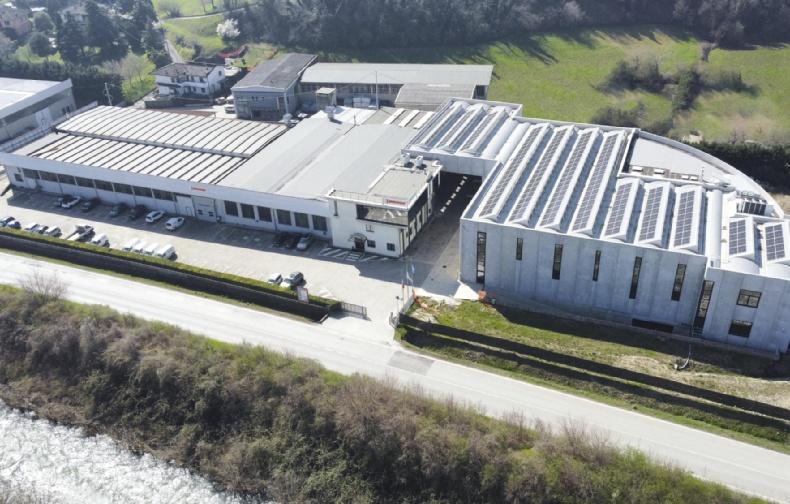
ARSTANNERY 77 TECHNOLOGY UNA VEDUTA AEREA DELLO STABILIMENTO DI ARZIGNANO AN AERIAL VIEW OF THE ARZIGNANO PLANT
GROUP ASSISTANCE IN ASIA? UNITY
IS STRENGTH
In Indonesia, Guido Frizzarin has set up 'AVB Consulting', which offers commercial and technical assistance to a group of Italian tannery machines companies
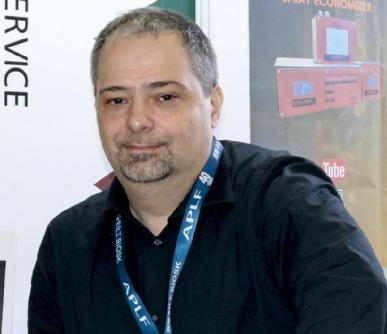
After working for 11 years at Elpa Service in Altavilla Vicentina, Guido Frizzarin moved to Indonesia in 2019 for personal reasons, continuing to do what he does best: sell tannery machinery and provide related technical assistance, operating from his new office located in Tangerang, in the province of Banten, about forty kilometres from Jakarta. At first he worked only for Elpa Service, then for other companies in the sector such as Baggio Tecnologie and Escomar, joined more recently by Tomboni Rotomec and Pajusco Tecnologie, all well-known Italian brands in the tanning industry. Today, Guido Frizzarin's AVB Consulting represents an outpost of Italian mechano tanning technology from which these companies derive very profitable results: "In a short time Elpa has doubled its Asian turnover," reports Frizzarin. "I am not a representative paid on commission," Frizzarin points out, "my role is that of Area Manager for this group of Italian companies interested in strengthening their presence in the Asian markets. Having also a good mechanical background, I can also follow the customers at a technical level, both for the installation of new plants and their maintenance over time. From Indonesia I move easily to India, Vietnam, Thailand, Korea and even Japan”.
Isn't there a competition problem between the companies you follow? "We have created a real working group that has its own dynamics and balance, for example to bring in new companies you need the consent of all the others. But it is always beneficial in the long run, because interesting commercial and technical synergies are created to the benefit of all, since we are already inside the main Asian tanneries,” Frizzarin concludes.
ASSISTENZA DI GRUPPO IN ASIA? L’UNIONE FA LA FORZA
In Indonesia Guido Frizzarin ha creato la ‘AVB Consulting’ che offre assistenza commerciale e tecnica ad un gruppo di aziende meccano-conciarie italiane
Dopo aver lavorato per 11 anni presso la Elpa Service di Altavilla Vicentina, nel 2019 Guido Frizzarin si trasferisce per motivi personali in Indonesia continuando a fare quello che sa fare meglio: vendere macchine per conceria e fornire la relativa assistenza tecnica, operando dal suo nuovo ufficio situato a Tangerang, nella provincia di Banten, a circa quaranta chilometri da Giacarta. Dapprima lavora solo per Elpa Service, poi per altre aziende del settore come Baggio Tecnologie ed Escomar, cui si sono aggiunte più di recente Tomboni Rotomec e Pajusco Tecnologie, tutti marchi italiani ben conosciuti nel settore conciario.
La ‘AVB Consulting’ di Guido Frizzarin oggi rappresenta un avamposto della tecnologia meccano conciaria italiana da cui queste aziende traggono risultati molto vantaggiosi: “In poco tempo Elpa ha raddoppiato il suo fatturato asiatico” riferisce Frizzarin. “Non sono un rappresentante pagato a provvigioni – tiene a precisare – il mio ruolo è quello di Area Manager per questo gruppo di aziende italiane interessate a rafforzare la propria presenza nei mercati asiatici. Avendo anche una buona preparazione meccanica, riesco a seguire i clienti anche a livello tecnico, sia per l’installazione degli impianti nuovi che per la loro manutenzione nel tempo. Dall’Indonesia mi sposto con facilità in India, Vietnam, Thailandia, Corea e anche Giappone”. Non c‘è un problema di concorrenza fra le aziende che segue? “Abbiamo creato un vero e proprio gruppo di lavoro che ha le sue dinamiche e i suoi equilibri, ad esempio per far entrare nuove aziende occorre il consenso di tutte le altre. Ma la cosa a lungo termine è sempre vantaggiosa, perché si creano interessanti sinergie commerciali e tecniche a vantaggio di tutti, dato che siamo già dentro le principali concerie asiatiche” conclude Frizzarin.
78 ARSTANNERY NEWS
GUIDO FRIZZARIN ALLA APLF DI HONG KONG
GUIDO FRIZZARIN AT APLF IN HONG KONG
LEATHER NATURALLY FOCUSES ON LCA STUDY
Last year's activity Report and new goals presented
The 2023 Report of Leather Naturally, the non-profit association whose mission is to promote sustainable leather among consumers and fashion designers, was recently presented. In the detailed document, all income and expenditure items are listed along with the list of activities carried out during the year. Among the most important, certainly the Life Cycle Assessment (LCA), the study that identifies and evaluates the potential environmental impacts of a product throughout its life cycle. This work will be completed this year and will then be submitted to Worldly (formerly the Higg index) in order to provide the market with scientific data on the material's characteristics and thus constitute a new sustainability benchmark for leather. In 2023, LN recorded a total turnover of $193,729, entirely made up of membership fees from the 137 members, with expenses totalling $263,648 and a total net result of $68,616. Unfortunately, there was also a decline in membership from 172 to 166 in 2023, with 120 paying members out of the total.
The budget for 2024 projects revenue of $218,166, which will be used to pursue the objectives: maintain website content, including fact sheets; collaborate on COP29, World Leather Day and other initiatives; support in-person events and webinars; and provide educational materials, including V2 of the Modern Leather Making Guide.
LEATHER NATURALLY PUNTA SULLA LCA
Presentato il Report delle attività dello scorso anno e i nuovi obiettivi per il 2024
Recentemente è stato presentato il Report 2023 di Leather Naturally, l’associazione no-profit che si è data come mission la promozione della pelle sostenibile presso i consumatori e i creatori di moda. Nel dettagliato documento sono riportate tutte le entrate e le voci di spesa con l’elenco delle attività realizzate nel corso dell’anno. Tra le più importanti, sicuramente la Valutazione del ciclo di vita (LCA) della pelle, lo studio che identifica e valuta i potenziali impatti ambientali di un prodotto durante l’intero ciclo di vita. Un lavoro che verrà completato quest’anno e che verrà poi sottoposto a Worldly (ex indice Higg) in modo da fornire al mercato dati scientifici sulle caratteristiche del materiale e costituire così un nuovo benchmark di sostenibilità della pelle.
Nel 2023, LN ha registrato un fatturato complessivo di 193.729 dollari, interamente costituito dalle quote associative dei 137 membri, con spese per un totale di 263.648 dollari e un risultato netto totale di 68.616 dollari. Purtroppo si è registrato anche un calo dei soci che sono passati da 172 a 166 nel 2023, con 120 soci paganti sul totale.
Il bilancio per il 2024 prevede entrate per 218.166 dollari che verranno utilizzate per perseguire gli obiettivi: sviluppare il sito web, comprese le schede informative; collaborare alla COP29, alla Giornata mondiale della pelle e ad altre iniziative; organizzare eventi e webinar; fornire materiali didattici, tra cui la V2 della Modern Leather Making Guide.
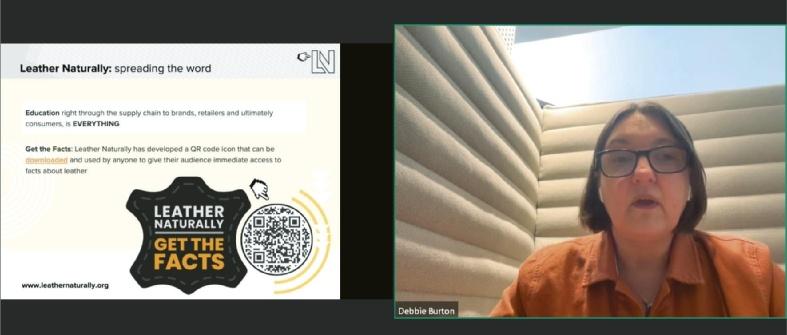
ARSTANNERY 79 NEWS LA PRESIDENTE DI LEATHER NATURALLY DEBBIE BURTON DURANTE IL WEBINAR DI PRESENTAZIONE DEL REPORT LEATHER NATURALLY CHAIR DEBBIE BURTON DURING THE WEBINAR PRESENTING THE REPORT
PLASMA NANOTECHNOLOGY, A VIABLE OPTION FOR LEATHER FINISHING
A workshop organised by SSIP presented the final results of the 'Leather Jet' project
As part of the Italian Leather Research Institute (SSIP) 2024 Training and Scientific Dissemination Programme, the workshop 'Plasma nanotechnologies for leather finishing. Final results of the Leather Jet project'.
The workshop dealt with the problems and solutions available to date regarding the use of these new technologies in the tanning sector.
Sponsored by the Veneto Leather District, as promised, the workshop presented the experiences gained by the researchers within the 'Leather Jet' project co-financed by the Veneto Region under the POC - Complementary Operational Programme to the POR FESR 2014-2020.
"A project that," explained Marco Nogarole, SSIP technology transfer manager, "aimed to develop eco-friendly technologies and methodologies for the production of artefacts with innovative technical, functional and aesthetic characteristics in the tanning, footwear and upholstery sector”.
“This technology makes it possible to carry out an environmentally friendly treatment as, by using only air or at most inert gases, it does not produce harmful waste substances”.
This was developed by SSIP researchers together with Conceria Leonica, Conceria Corradi, Design & Development of the SportSystem district of Asolo, and with the external collaboration of a number of research centres - in the persons of Dr. Vanni Antoni of CNR-ICMATE in Padua, Dr. Paolo Scopece of Nadir Srl in Mestre (VE), and Dr. Illya Kulyk, who presented their research during the workshop.
“A common solution to the objectives pursued,” explained Nogarole, “is provided by a type of treatment that, although not yet widespread on a large scale, especially in Italy, is gradually gaining ground; this alternative is given by the use of plasma, and in particular, wanting to focus on the industrial field, cold plasma at atmospheric pressure. First and foremost, this technology makes it possible to carry out
an environmentally friendly treatment as, by using only air or at most inert gases, it does not produce harmful waste substances”.
Interest in the use of plasma is also reinforced by the fact that it is a relatively inexpensive method since, for an objectively high initial investment, it does not entail any additional costs beyond the cost of the electricity needed to trigger the plasma itself.
The researchers reported on the issues addressed, which focused in particular on the water repellency of leather, increasing the colour fastness to perspiration and wet rubbing of hides, a crucial requirement especially for products destined for the footwear sector, increasing the adhesion of the coating or finishing film on leather crusts, and finally the bonding of the upper with the sole to replace or reduce conventional hazardous or mechanically disadvantageous chemical preparations.
NANOTECNOLOGIE AL PLASMA, UN’OPZIONE VALIDA PER LA NOBILITAZIONE
DEL CUOIO
Un workshop organizzato da SSIP ha presentato i risultati conclusivi del progetto “Leather Jet”
Nell’ambito del Programma di Formazione e Divulgazione Scientifica 2024 della Stazione Sperimentale, lo scorso 17 aprile ad Arzignano si è svolto il workshop “Nanotecnologie al plasma per la nobilitazione del cuoio. Risultati conclusivi del progetto Leather Jet”.
Il workshop ha trattato le problematiche e le soluzioni ad oggi disponibili relativamente all’utilizzo di queste nuove tecnologie nel settore conciario, in particolare per la rifinizione delle pelli.
Patrocinato dal Distretto Veneto della Pelle, come promesso il workshop ha presentato le esperienze maturate dai ricercatori nell’ambito del progetto “Leather Jet” co-finanziato dalla Regione Veneto a valere del POC – Programma Operativo Complementare al POR FESR 2014-2020.
80 ARSTANNERY RESEARCH
“Un progetto che – ha spiegato Marco Nogarole, responsabile trasferimento tecnologico SSIP- si proponeva di sviluppare tecnologie e metodologie eco-compatibili per la produzione di manufatti con caratteristiche tecniche, funzionali ed estetiche innovative nel settore conciario, calzaturiero e dell’arredo”. Lo hanno sviluppato i ricercatori SSIP insieme a Conceria Leonica, Conceria Corradi, Design & Development del distretto dello SportSystem di Asolo e con la collaborazione esterna di alcuni centri di ricerca - nelle persone del dr. Vanni Antoni di CNR-ICMATE di Padova, dr. Paolo Scopece di Nadir Srl di Mestre (VE) e il dr. Illya Kulyk che hanno presentato le loro ricerche durante il workshop.
“Una soluzione comune agli obiettivi perseguiti – ha spiegato Nogarole - viene fornita da un tipo di trattamento che, seppur non ancora diffuso su larga scala soprattutto in Italia, sta prendendo via via sempre più piede; quest’al-
“Questa tecnologia consente innanzitutto di poter svolgere un trattamento eco compatibile in quanto, sfruttando esclusivamente l’aria o al più gas inerti, non produce sostanze di scarto nocive”.
ternativa è data dall’uso del plasma e in particolare, volendo focalizzarsi sull’ambito industriale, il plasma freddo a pressione atmosferica. Questa tecnologia consente innanzitutto di poter svolgere un trattamento eco compatibile in quanto, sfruttando esclusivamente l’aria o al più gas inerti, non produce sostanze di scarto nocive”.
L’interesse per l’utilizzo del plasma è rafforzato anche dal fatto che si tratta di una metodica relativamente economica poiché, a fronte di un investimento iniziale oggettivamente elevato, non comporta costi aggiuntivi oltre al costo dell’energia elettrica necessaria ad innescare lo stesso plasma.
I ricercatori hanno riferito delle problematiche affrontate che vertevano in particolare sulla idrorepellenza del cuoio, l’aumento della solidità del colore alla traspirazione e
allo strofinio ad umido di pellami, requisito determinante soprattutto per i prodotti destinati al settore calzaturiero, l’aumento della adesione del coating o film di rifinizione sui crust in pelle ed infine l’incollaggio della tomaia con la suola a sostituzione o riduzione delle convenzionali preparazioni chimiche pericolose o meccaniche svantaggiose.



ARSTANNERY 81 RESEARCH NELLE IMMAGINI ALCUNI SPUNTI SCIENTIFICI DELLA RICERCA ESTRATTI DALLE RELAZIONI DEL WORKSHOP IN THE PICTURES SOME SCIENTIFIC INSIGHTS FROM THE RESEARCH EXTRACTED FROM THE WORKSHOP PRESENTATIONS
APLF: SUCCESSFUL RETURN TO HONG KONG
The leather fair confirms that it is an essential platform, but suffers from the weakness of the international market and the difficult geopolitical context
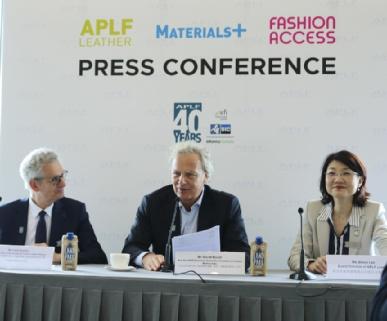
A long-awaited fair that did not disappoint expectations of most, but reflected an international leather market that is clearly suffering also due to a geopolitical context marked by total uncertainty. This, in short, is the balance of the 40th edition of APLF that returned to Hong Kong after an absence of five years, from 19 to 21 March.
A good fair, in spite of everything. Official attendance figures indicate 12,000 visitors from 73 countries and regions. China and India the most represented countries, followed by Italy, Japan, Korea, Taiwan, Thailand, Turkey, the USA and Vietnam. The best day was undoubtedly the first when crowds of visitors waiting to enter the pavilions made the organisers and exhibitors breathe a sigh of relief, because in fact no one knew for sure how the first time in Hong Kong would go after the pandemic, which effectively isolated China for four long years.
In spite of the difficult context, APLF, on the other hand, proved to still work, managing to attract the world's major players in the leather area. As always, however, fairs mirror the market and even the Hong Kong marketplace today has to reckon with a world market in great difficulty due to the weakness of demand, particularly as regards footwear and leather goods, with the brands slowing down production due to unsold stocks. Speaking of China, with its declining exports and a domestic market that is still not meeting expectations, the best prospects to date concern furniture
outlets and above all the automotive sector (Chinese car production in 2023 is expected to reach 30 million vehicles, of which 9.7 million will be hybrid or electric).
The return of APLF to Hong Kong saw the participation of 740 exhibitors, of which almost 500 in the two halls dedicated to the Leather section, for the first time moved to the 3rd level of the Convention Center while the Fashion Access (finished product) and Materials+ sections dropped to the 1st. Although slightly reduced in numbers, the presence of no less than 18 national collectives remains significant, which together make APLF a truly great global platform for the world of leather. Once again, the Italian presence was noteworthy thanks to the large groupings of tanners (UNIC) and tannery mechanics and tanning chemists (ASSOMAC) as well as numerous individual exhibitors for a total of 121 companies.
Italian tanners are more than satisfied. “Frankly, the fair exceeded expectations,” commented Fabrizio Nuti, President of UNIC-Concerie Italiane, who led a collective of 40 companies at APLF. “We saw a good number of visitors, a renewed interest in Italian leathers, and so we return home with a little more confidence with regard to business prospects in the coming months. As a matter of fact, the Asian market seems to be brighter than the European one at the moment, and for the medium-high end product, the Italian tanneries still have something to say”.
In the same vein was the comment of Marco Frediani, president of the Italian tanning chemists’ Association (UNPAC). “The leather market is shrinking worldwide, but perhaps here it is slightly better than elsewhere; I do not agree with those who say that the Chinese market is finished. Once again, we realised that there is still a strong demand for our chemicals and related technical assistance to be able to produce a certain type of article. Unfortunately, the issue of price often remains a big obstacle”. Among Italian tannery machine manufacturers, the opinions we have gathered are often divergent. There are those who have done well and those who have been disappointed, but in general everyone has appreciated the return to Hong Kong of a trade fair that, between ups and downs, allows one to come into contact with operators from all over South East Asia and to follow the evolution of the Chinese market which, despite the structural changes underway, remains fundamental for our sector.
As always, the Hong Kong fair hosted a series of noteworthy seminars and side events, including a presentation of
82 ARSTANNERY FAIRS
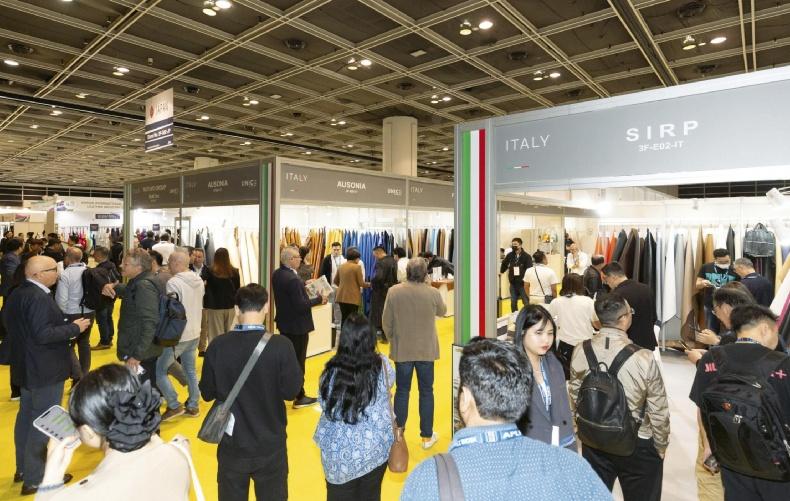
the latest Leather Naturally campaign, the third Global Footwear Executive Summit and the Design-A-Bag-Competition awards ceremony whose winner will be able to attend a design course at the Arsutoria School in Milan. The next edition of APLF is scheduled from 12 to 14 March 2025.
APLF: UN SUCCESSO IL RITORNO A HONG KONG
La fiera della pelle conferma di essere una piattaforma imprescindibile, ma sconta la debolezza del mercato internazionale e il difficile contesto geopolitico
Una fiera molto attesa, che non ha deluso le aspettative dei più, ma che ha rispecchiato un mercato internazionale della pelle in evidente stato di sofferenza anche a causa di un contesto geopolitico improntato alla totale instabilità. Questo, in sintesi, il bilancio della 40.a edizione di APLF tornata a Hong Kong dopo un’assenza di cinque anni, dal 19 al 21 marzo scorsi. Dicevamo una
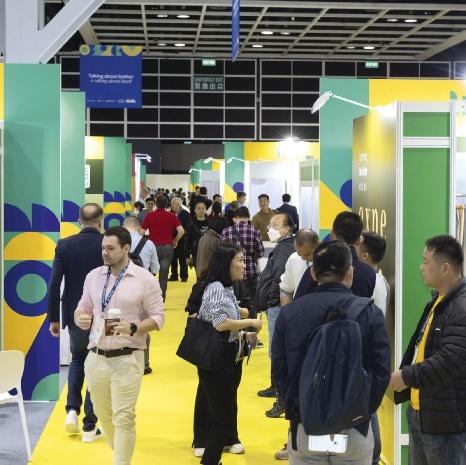
ARSTANNERY 83 FAIRS
UNO SCORCIO DELLA COLLETTIVA DELLE CONCERIE ITALIANE
A VIEW OF THE ITALIAN TANNERIES’ COLLECTIVE
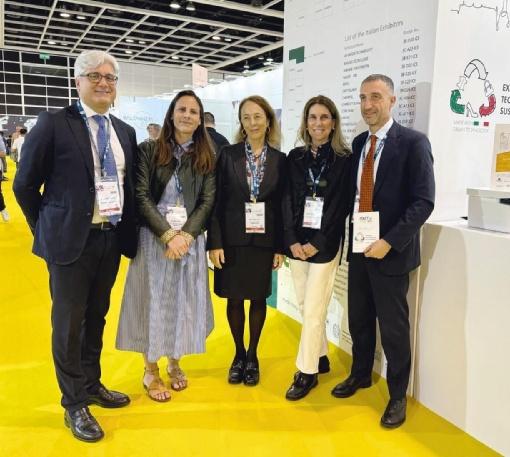
The ASSOMAC collective to the test of the market
As many as 39 Italian companies of tannery machinery and chemical products were present in the collective exhibition organised by ITA Agency with the associative support of ASSOMAC. “A significant participation that represented an important opportunity for our companies to consolidate their presence on the Asian market and intercept new business opportunities,” commented the Director of ASSOMAC, Agostino Apolito, flanked by President Maria Vittoria Brustia, who visited the Italian collective in Hong Kong.
Undoubtedly a positive experience, that of tannery mechanics, which it is hoped will contribute to reversing the course of Italian exports in the sector, which in 2023 showed extremely worrying data: -46.7% to China, -25.9% to Vietnam, and -29% to Asia in general. “These are figures that are obviously affected by the fact that China was completely closed until March 2023,” comments Apolito. “Since then, our companies have restarted relations with their customers, trying to adapt to the transformations that the market has undergone in the meantime. What is the main challenge? “We have to succeed in reconfirming the fact that Italian machines are superior to the competition and that to make quality leather you cannot do without Italian-made technology”.
La collettiva ASSOMAC alla prova del mercato
Ben 39 le aziende italiane di macchine per conceria e prodotti chimici presenti nella collettiva organizzata da ICE-Agenzia con il supporto associativo di ASSOMAC. “Una partecipazione significativa che ha rappresentato un’importante opportunità per le nostre aziende di consolidare la propria presenza sul mercato asiatico ed intercettare nuove opportunità di business”, commenta il Direttore di ASSOMAC, Agostino Apolito, affiancato dalla presidente Maria Vittoria Brustia che ha visitato la collettiva italiana a Hong Kong. Indubbiamente un’esperienza positiva, quella dei meccanici per conceria, che si spera possa contribuire ad invertire la rotta delle esportazioni italiane del comparto che nel 2023 hanno evidenziato dati estremamente preoccupanti: - 46,7% verso la Cina, -25,9% verso il Vietnam e -29% verso l’Asia in generale. “Questi sono dati che ovviamente risentono del fatto che fino a marzo 2023 la Cina è stata completamente chiusa – commenta Apolito -. Da allora le nostre aziende hanno riavviato le relazioni con i loro clienti cercando di adattarsi alle trasformazioni che ha subito il mercato nel frattempo”. Qual è la sfida principale? “Bisogna riuscire a riconfermare il fatto che le macchine italiane sono superiori rispetto alla concorrenza e che per fare una pelle di qualità non si può prescindere dalla tecnologia made in Italy”.
buona fiera, malgrado tutto. I dati di affluenza ufficiali indicano 12mila visitatori da 73 Paesi e regioni. Cina e India i paesi più rappresentati, seguiti da Italia, Giappone, Corea, Taiwan, Thailandia, Turchia, Usa e Vietnam. Il giorno migliore è stato senz’altro il primo quando folle di visitatori in attesa di entrare nei padiglioni hanno fatto tirare un sospiro di sollievo ad organizzatori ed espositori, perché di fatto nessuno sapeva con certezza come sarebbe andata la prima volta a Hong Kong dopo la pandemia, che di fatto ha isolato la Cina per quattro lunghi anni. Nonostante il difficile contesto, APLF ha invece dimostrato di funzionare ancora, riuscendo ad attirare i maggiori players mondiali dell’area pelle. Come sempre, però, le fiere sono specchio del mercato e anche la piazza di Hong Kong oggi deve fare i conti con un mercato mondiale in grande difficoltà a causa della debolezza della domanda, in particolare per quanto riguarda calzature e pelletteria, con le firme che hanno rallentato le produzioni a causa degli stock di invenduto. Focalizzando lo sguardo sulla Cina, con le sue esportazioni in calo ed un mercato domestico che ancora non soddisfa le attese, le prospettive migliori ad oggi riguardano gli sbocchi arredamento e soprattutto il settore automotive (la produzione di auto cinesi nel 2023 ha riguardato ben 30 milioni di veicoli di cui 9,7 milioni ibridi o elettrici).
Il ritorno di APLF ad Hong Kong ha visto la partecipazione di 740 espositori, di cui quasi 500 nei due padiglioni dedicati alla sezione Leather, per la prima volta spostata al 3° livello del Convention Center mentre le sezioni Fashion Access (prodotto finito) e Materials+ sono scese al 1° livello. Sia pure leggermente ridotta nei numeri, resta significativa la presenza di ben 18 collettive nazionali che insieme fanno della APLF una vera, grande piattaforma globale del mondo della pelle. Anche questa volta la presenza italiana è stata degna di nota grazie alle nutrite collettive dei conciatori (UNIC) e dei meccanici per conceria e chimici conciari (AS-
84 ARSTANNERY FAIRS
IL DIRETTORE DI ASSOMAC, AGOSTINO APOLITO, CON LA DELEGAZIONE DI ICE AGENZIA E LA PRESIDENTE MARIA VITTORIA BRUSTIA
ASSOMAC DIRECTOR AGOSTINO APOLITO WITH THE ITA AGENCY DELEGATION AND PRESIDENT MARIA VITTORIA BRUSTIA
SOMAC) oltre a numerosi espositori individuali per un totale di 121 aziende.
Più che soddisfatti i conciatori italiani. “Francamente la fiera ha superato le aspettative – commenta a caldo Fabrizio Nuti, presidente di UNIC-Concerie Italiane che ad APLF guidava una collettiva di 40 aziende -. Abbiamo visto un buon numero di visitatori ed un rinnovato interesse verso le pelli italiane; torniamo a casa con un po’ più di fiducia rispetto alle prospettive di lavoro dei prossimi mesi. Di fatto il mercato asiatico, in questo momento, sembra più brillante di quello europeo e per il prodotto di fascia medio-alta le concerie italiane hanno ancora qualcosa da dire”.
Dello stesso tenore il commento di Marco Frediani, presidente dei chimici conciari italiani (UNPAC). “Il mercato della pelle è in contrazione in tutto il mondo, ma forse qui è leggermente meglio che altrove; non sono d’accordo con chi dice che il mercato cinese sia finito. Anche in questa occasione abbiamo realizzato che esiste ancora una forte richiesta dei nostri prodotti chimici e della relativa assistenza tecnica per riuscire a produrre un certo tipo di articolo. Purtroppo, il tema del prezzo resta spesso un grande ostacolo”.
Tra i produttori di macchine italiani le opinioni che abbiamo raccolto sono spesso divergenti. C’è chi ha lavorato bene e chi è rimasto deluso, ma in generale tutti hanno apprezzato il ritorno a Hong Kong di una fiera che, tra alti e bassi, permette di entrare in contatto con operatori da tutto il sud est asiatico e di seguire l’evoluzione del mercato cinese che, nonostante i cambiamenti strutturali in atto, resta fondamentale per il nostro settore.
La fiera di Hong Kong ha come sempre ospitato una serie di seminari ed eventi collaterali degni di nota, tra cui una presentazione delle ultime novità di Leather Naturally, il terzo Global Footwear Executive Summit e la cerimonia di premiazione del Design-A-Bag-Competition il cui vincitore potrà frequentare un corso di design presso l’Arsutoria School di Milano.
La prossima edizione di APLF è fissata dal 12 al 14 marzo 2025.
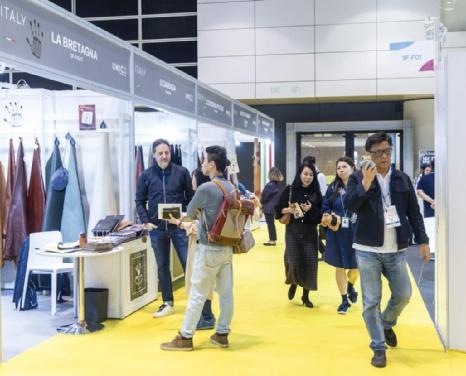
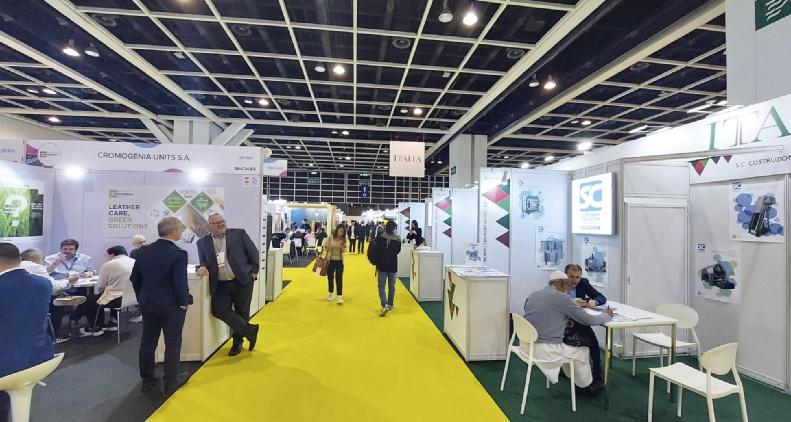
ARSTANNERY 85 FAIRS
DI
PER CONCERIA AN AISLE OF THE ITALIAN TANNERY MACHINERY MANUFACTURERS’ COLLECTIVE
UN CORRIDOIO DELLA COLLETTIVA ITALIANA DEI COSTRUTTORI
MACCHINE
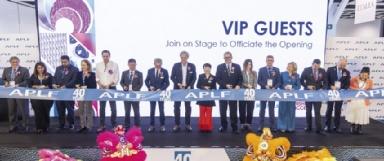
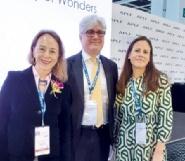
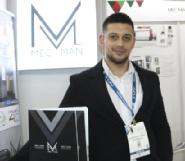
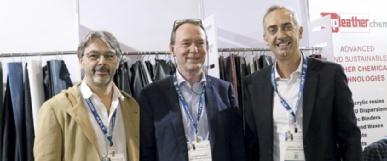

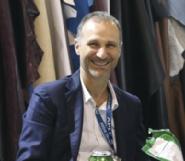
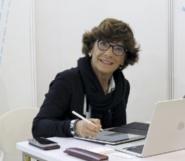

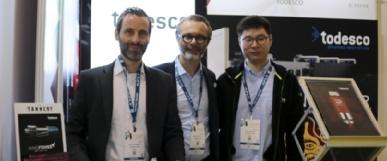
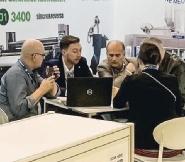
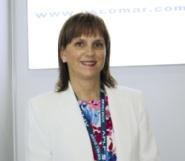
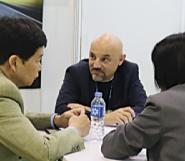

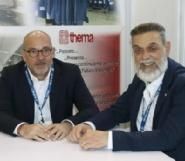


 DANIELE BONFITTO, MARTIN LOBERT, MARCELLO DE LUCA - ICAP LEATHER CHEM
ALESSANDRO BIANCO - MEC MAN
AGOSTINO APOLITO - ASSOMAC CHIARA TROISI, PAOLA BELLUSCI - ITA AGENZIA
GABRIELLA BOCCA - LAMEBO
LORENZO SIMONI, RICCARDO FABIANI - BARNINI
MATTEO CABRINI, MARCO FOGLI - THEMA SYSTEM
DAVIDE PIRONI SPRAYCOLOR,PAOLO MATELLI - ALPE
LUCA BAUCE - BAUCE
DIEGO CISCO - GSC GROUP
MAURIZIO MOLON, ALBERTO CALIARO - GER ELETTRONICA
OPENING CEREMONY
LUIGI JULIANI - REPICO
MAURO PELLIZZARI - GEMATA
PAOLO TODESCO, NICOLA GARDIN, ZHOU JIANZHE - TODESCO
STEFANO CARLOTTO - CARTIGLIANO
ROBERTO CALATTINI - SC COSTRUZIONI MECCANICHE
DANIELE BONFITTO, MARTIN LOBERT, MARCELLO DE LUCA - ICAP LEATHER CHEM
ALESSANDRO BIANCO - MEC MAN
AGOSTINO APOLITO - ASSOMAC CHIARA TROISI, PAOLA BELLUSCI - ITA AGENZIA
GABRIELLA BOCCA - LAMEBO
LORENZO SIMONI, RICCARDO FABIANI - BARNINI
MATTEO CABRINI, MARCO FOGLI - THEMA SYSTEM
DAVIDE PIRONI SPRAYCOLOR,PAOLO MATELLI - ALPE
LUCA BAUCE - BAUCE
DIEGO CISCO - GSC GROUP
MAURIZIO MOLON, ALBERTO CALIARO - GER ELETTRONICA
OPENING CEREMONY
LUIGI JULIANI - REPICO
MAURO PELLIZZARI - GEMATA
PAOLO TODESCO, NICOLA GARDIN, ZHOU JIANZHE - TODESCO
STEFANO CARLOTTO - CARTIGLIANO
ROBERTO CALATTINI - SC COSTRUZIONI MECCANICHE
86
FAIRS
MARTINA DAL LAGO - ESCOMAR
ARSTANNERY
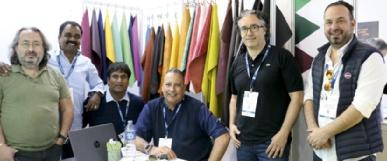
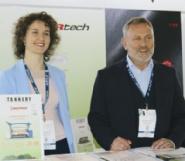
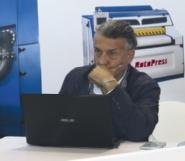


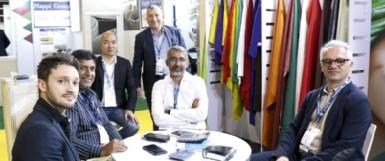
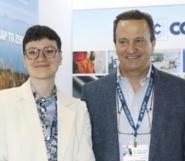


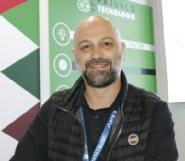


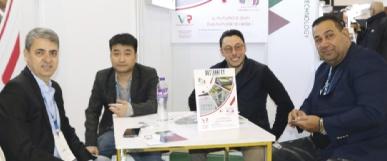
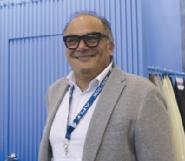

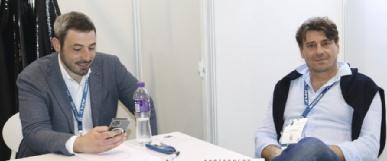 DORIANO PAGLIA - SERAFINI BERGI
GIULIO GALIOTTO - ERRETRE
MARCO FREDIANI - KLF TECNOKIMICA
NICOLA OCELLO - WEGA
NICOLÒ PIAMPIANI, LUCA MARTINI - CHIMICA ITALIANA
CLAUDIO ROSATI - LMF BIOKIMICA
ANDREA FASTELLI - TECNOCHIMICA
GIUSEPPE PERETTI, GIANPIETRO PORTINARI - REVOMEC
MARIOLINA CAIMI - CAIMI
FILIPPO SANI - AS GREEN TECHNOLOGY
FRANCESCO TURINI - GOZZINI DAVIDE PIRONI - SPRAYCOLOR
MONICA BRAGGION, FABIO BRAGGION - CORICHEM
GUIDO FRIZZARIN - ELPA
OLIMPIO STORTI - PAJUSCO TECNOLOGIE
ANDREA MEUCCI, ALESSIO MAFFEI - DERMACOLOR
DORIANO PAGLIA - SERAFINI BERGI
GIULIO GALIOTTO - ERRETRE
MARCO FREDIANI - KLF TECNOKIMICA
NICOLA OCELLO - WEGA
NICOLÒ PIAMPIANI, LUCA MARTINI - CHIMICA ITALIANA
CLAUDIO ROSATI - LMF BIOKIMICA
ANDREA FASTELLI - TECNOCHIMICA
GIUSEPPE PERETTI, GIANPIETRO PORTINARI - REVOMEC
MARIOLINA CAIMI - CAIMI
FILIPPO SANI - AS GREEN TECHNOLOGY
FRANCESCO TURINI - GOZZINI DAVIDE PIRONI - SPRAYCOLOR
MONICA BRAGGION, FABIO BRAGGION - CORICHEM
GUIDO FRIZZARIN - ELPA
OLIMPIO STORTI - PAJUSCO TECNOLOGIE
ANDREA MEUCCI, ALESSIO MAFFEI - DERMACOLOR
ARSTANNERY 87 FAIRS
LORENO FRESCHI - BARNINI MOSTARDINI
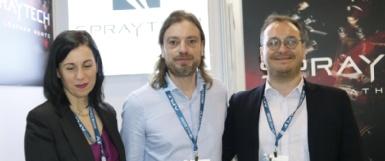
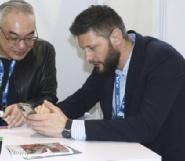

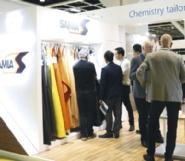

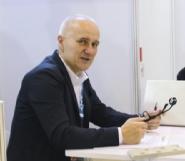

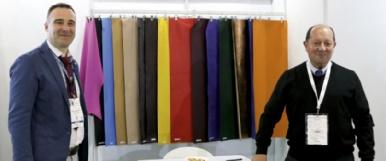
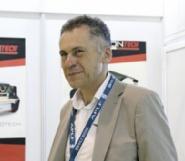



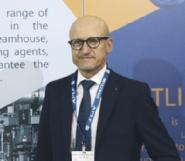
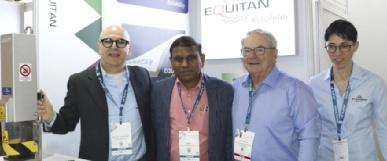
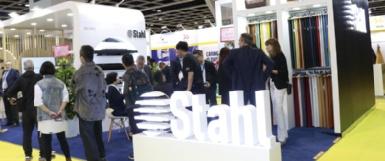
STAHL
WILLIAM PELLICCIARI - RIZZI NAPPI GROUP
SAMIA
MARCO BERNARDINI, MASSIMO LOVATO - CHEMIPAL
MILENA LORA, STEFANO MASTROTTO, CRISTIANO DELLA VALLE - SPRAYTECH
MASSIMO VALENTE - ROTACOAT
ALBERTO BAGGIO - BAGGIO TECNOLOGIE
ANTONELLO MARCHINO - EVOLUTION TECH
ANTONIO ANTONIAZZI - EQUITAN
FELTRE
GIOVANNI LONGO - PROKIMICAL INTERNATIONAL GIOVANNI ROSSI - ITALPROGETTI
GIAN MARIO CAZZOLA - C.G.R.D.
DIEGO GABRIELLI - CM TANNERY MACHINES
88 ARSTANNERY FAIRS
ANTONIO MONTECALVO - ALANCHIM
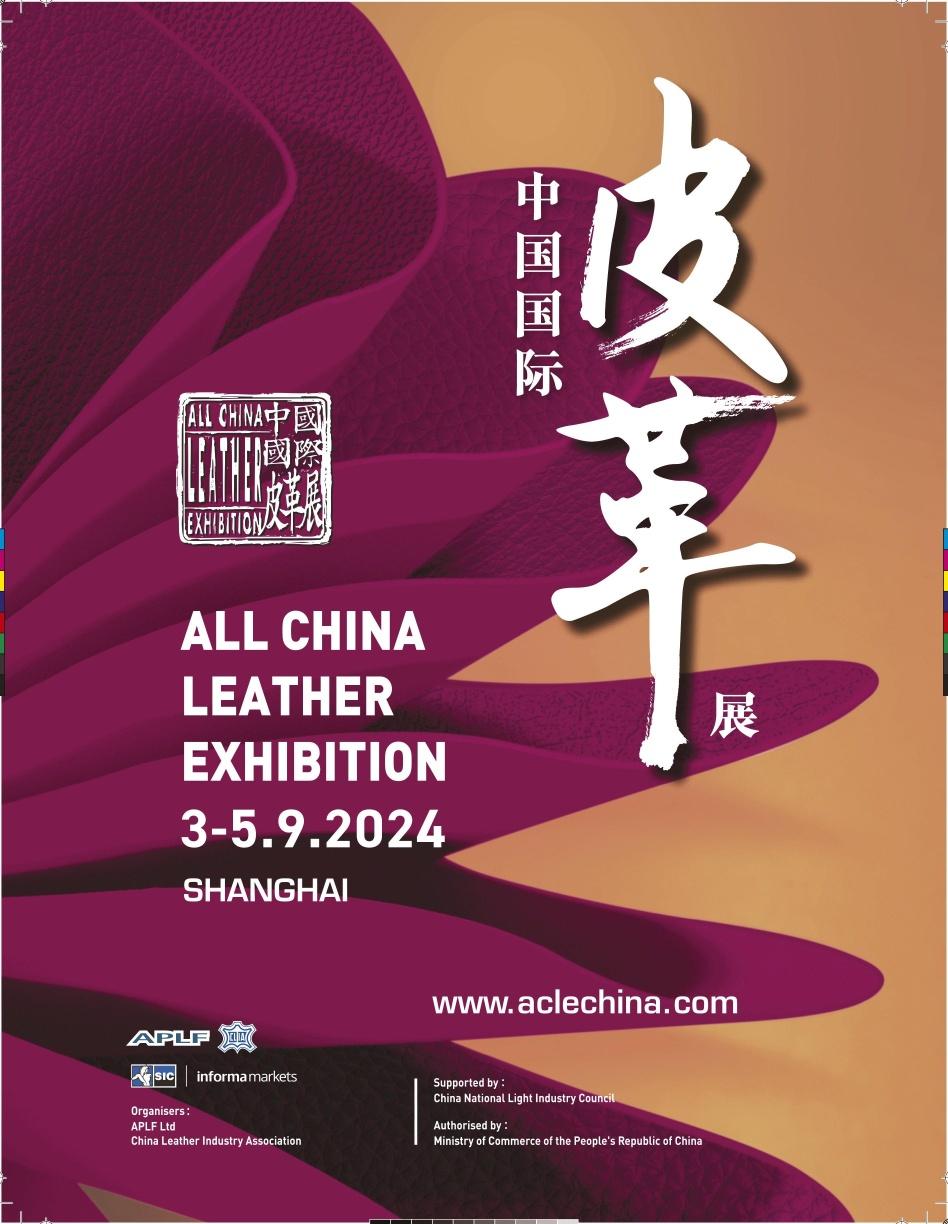
CHINA SLOWS DOWN BUT REMAINS INDISPENSABLE
The 2023 figures show declines in Chinese leather and footwear production and exports but the numbers remain huge, especially in the automotive sector. The appointment is now set at the ACLE in Shanghai from 3 to 5 September
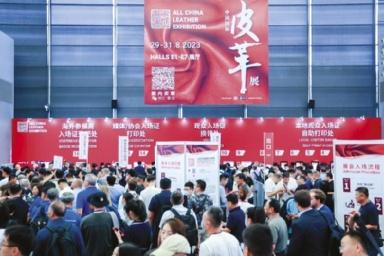
What is the state of health of the Chinese leather industry? Figures provided by China Leather Industry Association (CLIA) Vice-President Chen Zhanguang at the latest APLF in Hong Kong help to get an idea of the situation of what, in spite of a general slowdown affecting both leather and footwear production and exports, remains the world's leading leather producing country by volume, as well as the leading outlet market for US raw hides.
According to data provided by CLIA, in 2023, revenues of the Chinese leather sector as a whole decreased by 5.4% year-on-year, with exports worth USD 97 billion (-7.6%) and imports worth USD 17.7 billion (+2.6%).
The Chinese tanning industry recorded a 6.9% drop in overall turnover, while the production of finished leather decreased by 6.8%. Imports of raw hides increased in volume by 16.8% (to USD 1.41 million tonnes) but decreased in value by 1.2% (to USD 1.33 billion). Imports of finished leather fell to USD 690 million (-14.8% in volume and -23.4% in value).
Revenues from the footwear sector also declined by -6% year-on-year. Last year, Chinese footwear exports amounted to 8.9 billion pairs (-2.5%) for a value of USD 49.34 billion (-12.6%). The decline is more pronounced when looking at exports of leather shoes alone: 580 million pairs (-18.3% in volume and -21.6% in value).
In contrast, footwear imports increased slightly: 190 million pairs (+0.9%) for USD 6 billion (+1.9%).
The leather goods/luggage industry showed an increase in turnover of 0.5%. Exports of Chinese bags and luggage amounted to USD 35.7 billion (+3.9%), while imports rose to USD 6 billion (+9.8%).
The leather garment segment confirmed a weak situation. In 2023, revenues decreased in value by 13.7 % and exports by 6.5 % to USD 160 million, while imports of leather goods amounted to USD 120 million, an increase of 9.9 %. In 2023, vehicle sales grew in China by 11.7% to 30.13 million units of which 32% were new energy vehicles (NEVs).
This was a number never seen before, and according to the China Passenger Car Association (CPAC), unit sales are forecasted to grow by 2%-3% in 2024.
The automotive and upholstery sectors are key drivers of leather demand in China and with GDP for 2024 forecasted to grow by 5.2%, backed up by positive Purchasing managers activity and solid consumer confidence.
ACLE Shanghai 2024
In order to get a first-hand experience of the Chinese reality, CLIA invites operators to attend the next edition of the All China Leather Exhibition (ACLE) scheduled in Shanghai from 3 to 5 September 2024, recalling the good performance of the 2023 edition that recorded a boom in visitors exceeding the most optimistic expectations: about 28,300 operators, 20% more than the previous edition in 2019. ACLE 2024 will take place on an area of 92,000 square metres (69,000 of which will be occupied by Chinese exhibitors) spread over 8 pavilions in the SNIEC (E1 – E7 and W1). Raw and finished leathers will be on show together with the latest technologies for the production of leather, footwear and synthetic materials. As far as foreign participation is concerned, a strong presence of manufacturers of chemical auxiliaries for leather and tannery ma-

90 ARSTANNERY NEWS
chinery is expected, as is the tradition for this fair. This year will be no exception, as the following international suppliers have already confirmed their participation: TFL, Zschimmer & Schwarz, Smit and Zoon, ALPA, Stahl, Fenice, GSC Group, Cromogenia, Lintec, Sichuan TingJiang, Sichuan Decision, Buckman and Seaton. Among the national pavilions already confirmed are Australia, Brazil, France, Italy, Pakistan, Spain, Thailand, Taiwan and the USA.
LA CINA RALLENTA
MA RESTA IMPRESCINDIBILE
I dati 2023 evidenziano cali nella produzione e nell’esportazione di pelle e calzature cinesi ma i numeri restano enormi soprattutto nel settore automotive. L’appuntamento è ora fissato alla ACLE di Shanghai dal 3 al 5 settembre
Qual è lo stato di salute dell’industria della pelle cinese? I dati forniti dal vicepresidente della China Leather Industry Association (CLIA) Chen Zhanguang in occasione dell’ultima edizione di APLF ad Hong Kong aiutano a farsi un’idea della situazione di quello che, a dispetto di un generale rallentamento che riguarda sia la produzione che le esportazioni di pelli e calzature, resta il primo Paese produttore di pelle del mondo in volume, nonché il primo mercato di sbocco delle pelli grezze statunitensi.
Secondo i dati forniti da CLIA, nel 2023 i ricavi del settore pelle cinese nel suo insieme sono diminuiti del 5,4% rispetto all’anno precedente con esportazioni per un valore complessivo di USD 97 miliardi (-7,6%) ed importazioni per USD 17,7 miliardi (+2,6%).
L’industria conciaria cinese ha registrato un calo del fatturato globale del 6,9% mentre la produzione di pelli finite è diminuita del 6,8%. Le importazioni di pelli grezze sono aumentate in volume del 16,8% (per un totale di 1,41 milioni di tonnellate) ma diminuite in valore dell’1,2% (per USD 1,33 miliardi).
L’import di pelli finite è sceso a USD 690 milioni (-14,8% in volume e -23,4% in valore).
In calo anche i ricavi del settore calzaturiero che registra un -6% rispetto al 2022. Lo scorso anno le esportazioni di calzature cinesi sono ammontate a 8,9 miliardi di paia (-2,5%) per un valore di USD 49,34 miliardi (-12,6%). Più marcata la flessione se si guarda all’export delle sole calzature in pelle: 580 milioni di paia (-18,3% in volume e -21,6% in valore).
Le importazioni di calzature sono risultate invece in leggero aumento: 190 milioni di paia (+0,9%) per 6 miliardi di USD (+1,9%). L’industria della pelletteria/valigeria evidenzia un aumento del fatturato dello 0,5%. L’export di borse e valigie cinesi è
ammontato a USD 35,7 miliardi (+3,9%) mentre l’import è salito a USD 6 miliardi (+9,8%).
Il comparto abbigliamento in pelle conferma una situazione di debolezza. Nel 2023 i ricavi sono diminuiti in valore del 13,7% e le esportazioni del 6,5% per un totale di USD 160 milioni, mentre le importazioni di capi in pelle sono ammontate a USD 120 milioni segnando un +9,9%.
Lo scorso anno le vendite di veicoli sono cresciute in Cina dell'11,7%, raggiungendo 30,13 milioni di unità, di cui il 32% costituito da veicoli a nuova energia (NEV).
Si tratta di un numero mai visto prima e, secondo la China Passenger Car Association (CPAC), si prevede che le vendite di unità cresceranno del 2%- 3% nel 2024.
Il settore automobilistico e quello dell’arredo imbottito sono considerati i principali motori della domanda di pelle in Cina, con un PIL previsto in crescita del 5,2% per il 2024.
ACLE Shanghai 2024
Per toccare con mano la realtà cinese la CLIA invita gli operatori a partecipare alla prossima edizione della prossima edizione della All China Leather Exhibition (ACLE) in programma a Shanghai dal 3 al 5 settembre 2024, ricordando il buon andamento dell’edizione 2023 che registrò un boom di visitatori superando le più rosee aspettative: circa 28.300 operatori, il 20% in più rispetto all’edizione precedente del 2019.
ACLE 2024 si svolgerà su una superficie di 92mila mq (di cui 69mila occupati da espositori cinesi) articolati fra 8 padiglioni del centro espositivo SNIEC (E1 – E7 and W1). In mostra pelli grezze e finite insieme alle ultime tecnologie per la produzione di pelli, calzature e materiali sintetici. Per quanto riguarda la partecipazione straniera, si prevede, come da tradizione per questa fiera, una forte presenza dei produttori di ausiliari chimici per la pelle e di macchine per conceria. Quest'anno non farà eccezione, visto che i seguenti fornitori internazionali hanno già confermato la loro partecipazione: TFL, Zschimmer & Schwarz, Smit e Zoon, ALPA, TFL, Zschimmer & Schwarz, Smit and Zoon, ALPA, Stahl, Fenice, GSC Group, Cromogenia, Lintec, Sichuan TingJiang, Sichuan Decision, Buckman e Seaton. Tra i padiglioni nazionali già confermati spiccano quelli di Australia, Brasile, Francia, Italia, Pakistan, Spagna, Thailandia, Taiwan e USA.

ARSTANNERY 91 NEWS
FURNITURE COMES TO TERMS WITH WEAK DEMAND
The latest living trends were presented at Design Week in Milan. In the foreground soft, rounded lines for cosy seating that favours the use of leather
Important volumes, soft and curved lines, cosy seating. The sofas in the new collections proposed by the major furniture brands during Milan Design Week often choose leather to enhance the new stylistic choices. Nubuck leather stands out above all, mainly in ice colour, but also lots of nappa, greased leather, vegetable-tanned cowhide and dollar-grain leather in earthy shades with green imposing itself as the new colour of the season. Leather is the protagonist everywhere in lounge seating, bed headboards, but also as wall coverings, chests of drawers, coffee tables. As for new uses, the emerging trend is waterproof leather for outdoor furniture, a sector that is obviously a niche but is experiencing a moment of great attention from the market.
The Salone was full of visitors
Once again this year, the Salone del Mobile confirmed itself as the international reference point for a key sector for the economy, an essential showcase for the future of living. Ingredients of success: 1,950 exhibitors from 35 countries, including the best brands of made in Italy presenting the latest products designed by the most prestigious international designers. The Show remains the most important business moment in the sector and the opportunity for the entire wood-furnishing supply chain to showcase the quality of its production, in concert with all the events and presentations of the Fuorisalone that invade Milan for an entire week.
The results lived up to expectations. With +17.1% compared to 2023, the Salone del Mobile 2024 recorded a record attendance: 361,417 in total (+100,000 compared to 2022). Data that confirm, once again, the key role of the event and the catalysing force of an event that has gone beyond the perimeter of the trade fair dimension. In the top 15 market geographies there is the great return of China, followed by Germany, Spain, Brazil, France, the United States, Poland, Russia, Switzerland, Turkey, India, the United Kingdom, South Korea, Japan and Austria. An atlas that opened up new business opportunities thanks also to the numerous delegations from the United States, India, the United Arab Emirates, the United Kingdom, France and Saudi Arabia.
A 'physiological' drop in the market
After two years of exceptional growth, the Italian market is experiencing a negative but physiological trend, as Claudio Feltrin, president of Federlegno Arredo, states. "We represent a sector with a turnover of €52.7 billion in 2023, with
an overall drop of 7.8% on 2022," explains Claudio Feltrin, illustrating the 2023 figures for the sector processed by the FederlegnoArredo Study Centre. A drop that mainly concerns the domestic market, which has fallen to 32.8 billion euro (-9.6%), but which also affects exports (-4.6%) with a turnover of almost 20 billion euro (38% of the total). "It is worth pointing out that one of the factors that caused the downturn in the sector as a whole is the physiological drop in domestic demand, after two years of exceptional growth, mainly due to the loss of the boost that the various building bonuses gave to the sector.
More than 66 thousand companies make up the Italian wood-furniture sector and employ almost 300 thousand people in total. The sector accounts for 4.2% of the Italian manufacturing turnover, 14.8% of the companies and 8% of the employees.
In a supply chain as particularly export-oriented as that of wood-furniture, the ongoing wars and the recent Suez Canal crisis have a profound effect on several fronts. From the tripled cost of containers, which is passed on downstream in the cost of finished products, to energy, which rose again in early '24. It should also be emphasised that, in the face of a general chiaroscuro trend, some Italian wood-furnishing companies have achieved consolidation and growth performances, thanks to foreign sales, aggregations and flexibility.
"For 2024, the good news is certainly the slowdown in inflation, which is boosting consumer confidence. If, as many analysts predict, interest rates fall in May-June, the second half of 2024 could bring a reversal of the current industrial trend, with even some signs of positivity” Feltrin concludes.
Export: Germany, USA and China down
The Study Centre points out that for exports, France is still in the lead (EUR 2.7 billion) at +0.6%, followed by Germany, (EUR 1.8 billion) grappling with a heavy internal crisis, at -6.4%. The United States (EUR 1.7 billion) dropped to third place after two years of above-average growth in which it had overtaken Germany, at a heavy -13.2%. China still firmly in seventh place (458 million) recorded -19.1%, the worst performance among the top 10 destinations. To find a positive sign after the top ten we have to go down to the 12th position of the United Arab Emirates (307 million) at +3.3%; followed by Russia (246 million) at -7.4% and Canada, 15th (221 million) at -14.5%, while Saudi Arabia (185 million) is at -1.9%.
92 ARSTANNERY FOCUS ON UPHOLSTERY
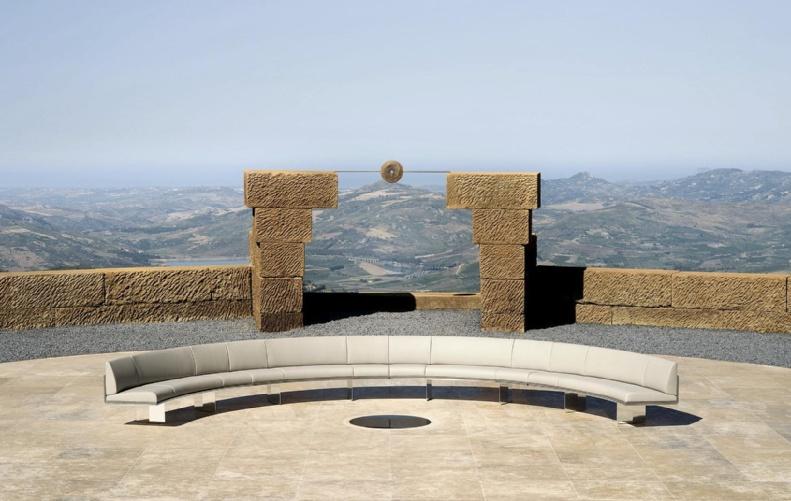
L’ARREDO FA I CONTI CON LA DEBOLEZZA DELLA DOMANDA
Alla Design Week di Milano sono state presentate le ultime tendenze dell’abitare. In primo piano linee morbide e arrotondate per sedute accoglienti che prediligono l’utilizzo della pelle
Volumi importanti, linee morbide e curve, sedute avvolgenti. I divani delle nuove collezioni proposte dai principali brand di arredamento durante la Design Week di Milano scelgono spesso la pelle per valorizzare le nuove scelte stilistiche. Spicca su tutto il nabuk, in prevalenza color ghiaccio, ma anche tanta nappa, cuoio ingrassato, vacchetta al vegetale e pelle grana dollaro nelle sfumature della terra con il verde che si impone come il colore novità della stagione. Pelle protagonista ovunque nelle sedute dei salotti, nelle testiere dei letti, ma anche come rivestimento di pareti, cassettiere, tavolini. Quanto ai nuovi utilizzi, il trend emergente è la pelle impermeabile per l’arredo da esterno, un comparto ovviamente di nicchia ma che sta vivendo un momento di grande attenzione da parte del mercato.

FOCUS ON UPHOLSTERY
LIVING WITH MOROSO
DIESEL
UNIFOR – ANDROMEDA COLLECTION
Il Salone fa il pieno di visitatori
Anche quest’anno il Salone del Mobile si è confermato punto di riferimento internazionale di un settore chiave per l’economia, vetrina imprescindibile del futuro dell’abitare. Ingredienti del successo: 1.950 espositori da 35 Paesi, tra cui i migliori brand del made in Italy che presentano le novità progettate dai più prestigiosi designer internazionali. Il Salone resta il più importante momento di business del settore e l’occasione per tutta la filiera del legno-arredo di mostrare la qualità della sua produzione, di concerto con tutti gli eventi e le presentazioni del Fuorisalone che invadono Milano per un’intera settimana. I risultati sono stati all’altezza delle aspettative. Con un +17,1% rispetto al 2023, il Salone del Mobile 2024 ha registrato un’affluenza record: 361.417 presenze complessive (+100.000 rispetto al 2022). Dati che confermano, ancora una volta, il ruolo chiave della manifestazione e la forza catalizzatrice di un evento che ha superato il perimetro della dimensione fieristica. Nella top 15 delle geografie di mercato si registra il grande ritorno della Cina, seguita da Germania, Spagna, Brasile, Francia, Stati Uniti, Polonia, Russia, Svizzera, Turchia, India, Regno Unito, Corea del Sud, Giappone, Austria. Un atlante che ha aperto nuove

opportunità di business grazie anche alle numerose delegazioni provenienti da Stati Uniti, India, Emirati Arabi Uniti, Regno Unito, Francia e Arabia Saudita.
Un calo “fisiologico” del mercato Dopo due anni di crescita eccezionale, il mercato italiano registra un andamento negativo, ma fisiologico, come dichiara Claudio Feltrin, presidente di Federlegno Arredo. “Rappresentiamo un comparto che nel 2023 ha fatturato 52,7 miliardi di euro con un calo complessivo del 7,8% sul 2022”, spiega Claudio Feltrin, illustrando i dati 2023 del comparto elaborati dal Centro Studi FederlegnoArredo. Una flessione che riguarda principalmente il mercato
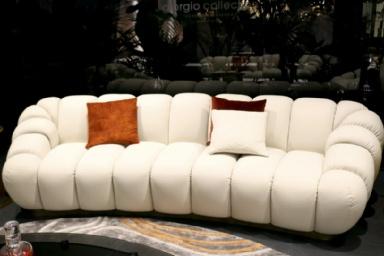
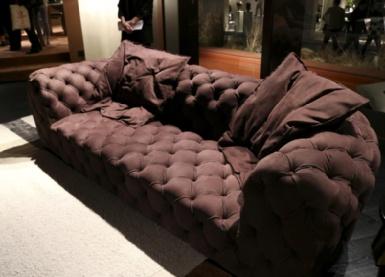
94 ARSTANNERY
FOCUS ON UPHOLSTERY
BAXTER – CHESTER MOON SOFA
GIORGIO COLLECTION
MOLTENI – LUCIO ARMACHAIR
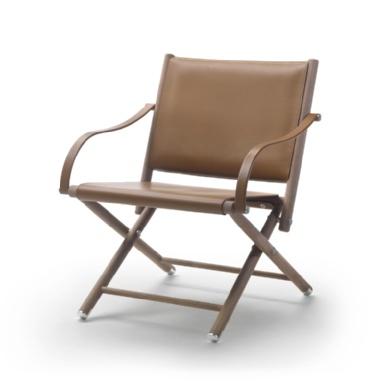
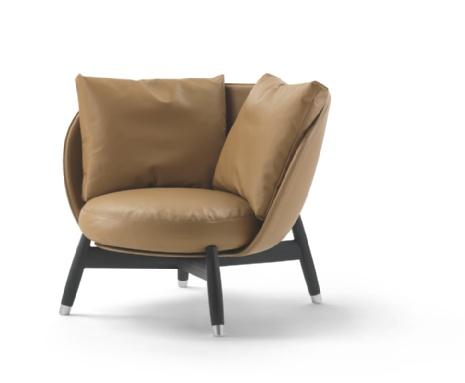

ARSTANNERY 95 FOCUS ON UPHOLSTERY
ROBERTO CAVALLI
FLEXFORM – LAUREN FOLDING CHAIR, DESIGN ANTONIO CITTERIO
FLEXFORM – ERI ARMCHAIR, DESIGN FUMIE SHIBATA
interno, sceso a 32,8 miliardi di euro (-9,6%), ma che tocca anche l’export (-4,6%) con un fatturato che sfiora i 20 miliardi di euro (38% del totale). “È bene evidenziare che uno dei fattori che ha causato la flessione della filiera nel suo complesso è il calo fisiologico della domanda interna, dopo due anni di crescita eccezionale, dovuto soprattutto al venir meno della spinta che i vari bonus edilizi hanno dato al settore”.
Sono circa oltre 66mila le imprese che compongono la filiera italiana del legno-arredo e occupano quasi 300mila addetti totali. Il settore rappresenta il 4,2% del fatturato manifatturiero italiano, il 14,8% delle imprese e l’8% degli addetti. In una filiera particolarmente votata all’export come quella del legno-arredo, le guerre in corso e la recente crisi del canale di Suez incidono profondamente su più fronti. Dai costi triplicati dei container, che ricadono a valle sul costo dei prodotti finiti, all’energia che nei primi mesi del ’24 è tornata ad aumentare. Va anche sottolineato il fatto che, a fronte di un andamento generale in chiaroscuro, alcune aziende italiane del legno-arredo hanno realizzato performance di consolidamento e crescita, grazie a vendite all’estero, aggregazioni e flessibilità.
“Per il 2024 la buona notizia è sicuramente il rallentamento dell’inflazione che fa prendere fiducia ai consumatori. Se, come molti analisti prevedono, a maggio-giugno caleranno i tassi di interesse, il secondo semestre del 2024 potrebbe portare ad un’inversione di marcia del trend industriale attuale, con anche qualche segno di positività” conclude Feltrin.
Export: in calo Germania, USA e Cina Il Centro studi evidenzia che per l’export la Francia risulta ancora in testa (2,7 miliardi) a +0,6%, seguita dalla Germania, (1,8 miliardi) alle prese con una pesante crisi interna, a -6,4%. Gli Stati Uniti (1,7 miliardi di euro) scendono al terzo posto dopo due anni di crescita sopra la media nei quali aveva superato la Germania, con un pesante -13,2%. La Cina ancora salda al settimo posto (458 milioni) registra un -19,1%, la peggiore performance tra le prime 10 destinazioni della filiera. Per trovare un segno positivo dopo la top ten si deve scendere alla 12esima posizione degli Emirati Arabi Uniti (307 milioni di euro) a +3,3%; segue la Russia (246 milioni) a -7,4% e il Canada, 15esimo (221 milioni) a -14,5%, mentre l’Arabia Saudita (185 milioni) è a -1,9%.

96 ARSTANNERY
FOCUS ON UPHOLSTERY
MOLINARI DESIGN


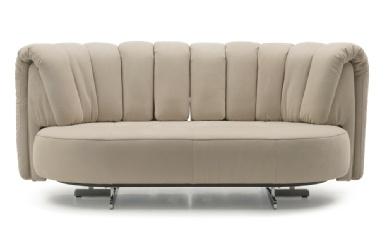
ARSTANNERY 97 FOCUS ON UPHOLSTERY
CIERRE 1972 – CHAPEAU SOFA, DESIGN STEFANO CONFICCONI
DE SEDE – 888 KASCHMIR
FLOU – FIOCCO SOFA
LINEAPELLE PUSHES INTERIOR DESIGN
The Leather Duets exhibition presented the result of interesting collaborations between tanneries and furniture companies
Lineapelle Interiors is the new project dedicated to interior design that saw the light at the last edition of the Milan fair last February. A very interesting initiative that aims to promote and enhance Italian leather in the interior design sector through styling and product development actions, activating collaborative connections with the world of Italian and international design and architecture. The first of these actions was the Leather Duets exhibition, a series of installations (in Hall 24) resulting from an exclusive leather design project shared between a made-in-Italy leather manufacturer and an interior design company. A path linked by a thematic thread that leads the semi-finished product to international excellence, passing through its transformation into a high-end finished product. “With this new project dedicated to interior design” explained Fulvia Bacchi, CEO of the event, “Lineapelle aims to explore the value of Italian leather and hide in areas other than those more closely related to fashion, for which, however, they are confirmed in their role as reference materials. Lineapelle Interiors is an opportunity to open up new creative and market horizons”.
LINEAPELLE SPINGE
L’INTERIOR DESIGN
La mostra Leather Duets ha presentato il risultato di interessanti collaborazioni tra concerie e aziende di arredamento
Lineapelle Interiors è il nuovo progetto dedicato all’arredo che ha visto la luce all’ultima edizione della fiera milanese lo scorso febbraio. Un’iniziativa molto interessante che punta a promuovere e valorizzare la pelle italiana nel settore dell’interior design attraverso azioni di styling e di sviluppo prodotto, attivando connessioni collaborative con il mondo della progettualità e dell’architettura italiana e internazionale. La prima di queste azioni è stata la mostra Leather Duets, una serie di installazioni (presso il pad. 24) frutto di un progetto esclusivo di leather design condiviso tra un’azienda produttrice di pelle made in Italy e un’azienda di arredamento. Un percorso legato da un fil rouge tematico che porta il semilavorato a diventare eccellenza internazionale, passando attraverso la sua trasformazione in prodotto finito di alta gamma.
“Con questo nuovo progetto dedicato all’interior design – ha spiegato Fulvia Bacchi, CEO della manifestazione - Lineapelle mira a esplorare il valore della pelle e del cuoio italiani in ambiti diversi da quelli più strettamente legati alla moda, per la quale, comunque, si confermano nel ruolo di materiali di riferimento. Lineapelle Interiors è un’occasione per aprire nuovi orizzonti creativi e di mercato”.

98 ARSTANNERY FOCUS ON UPHOLSTERY
E
DI
A TUTTOTONDO
CONCERIA MONTEBELLO / STUDIOART - PAVIMENTO, PARETI CONTINUE
TAPPETI CIRCOLARI, UN’INSTALLAZIONE
DESIGN
IN PELLE
CONCERIA MONTEBELLO / STUDIOART - FLOOR, CURTAIN WALLS AND CIRCULAR CARPETS, AN ALL-ROUND DESIGN INSTALLATION IN LEATHER



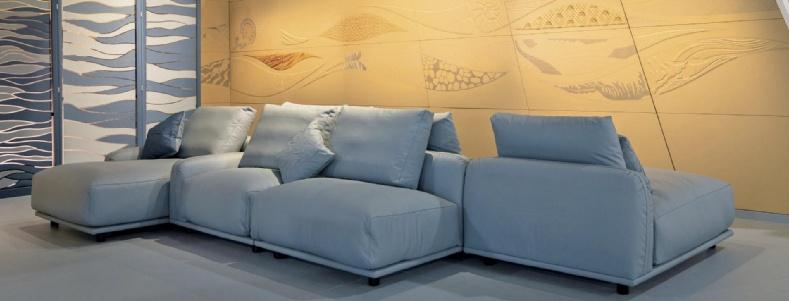
ARSTANNERY 99 FOCUS ON UPHOLSTERY ACCOPPIATURE MISTRAL / MANTELLASSI 1926 - PARETI RIVESTITE A BOISERIE IN PELLE DECORATA CON PATTERN DIFFERENTI OSPITANO UN PARAVENTO ORNAMENTALE DI FORTE IMPATTO SCENICO E UN DIVANO CENTRALE SU DISEGNO ACCOPPIATURE MISTRAL / MANTELLASSI 1926 - WALLS COVERED WITH LEATHER BOISERIE DECORATED WITH DIFFERENT PATTERNS HOST AN ORNAMENTAL SCREEN WITH A STRONG SCENIC IMPACT AND A CENTRAL SOFA BASED ON A DESIGN CONCERIA
GAIERA GIOVANNI / CIERREESSE - INSTALLATE A SIMULARE UNO SPAZIO MUSEALE UNA SERIE DI OPERE TRA ARTE E DESIGN VENGONO PLASMATE DALL’ARTISTA/DESIGNER IN FORME E ACCOSTAMENTI INASPETTATI
DI DOMODOSSOLA
NALESSO
UN SISTEMA CONTINUO DI SEDUTE DIVENTA OCCASIONE PER METTERE IN LUCE LA BELLEZZA DEGLI INTRECCI IN CUOIO GRUPPO MASTROTTO / KREOO - L’ANTITESI NATURALE TRA PELLE E MARMO GIOCATA IN UN CONFRONTO SENZA COMPROMESSI CONCERIA
MANIFATTURA
/
-
GAIERA GIOVANNI / CIERREESSE - INSTALLED TO SIMULATE A MUSEUM SPACE, A SERIES OF WORKS BETWEEN ART AND DESIGN ARE MOULDED BY THE ARTIST/DESIGNER INTO UNEXPECTED SHAPES AND COMBINATIONS
DI DOMODOSSOLA
- A CONTINUOUS SEATING SYSTEM BECOMES AN OPPORTUNITY TO HIGHLIGHT THE BEAUTY OF LEATHER WEAVINGS GRUPPO MASTROTTO
THE NATURAL
LEATHER
MARBLE PLAYED OUT IN AN UNCOMPROMISING CONFRONTATION
MANIFATTURA
/ NALESSO
/ KREOO -
ANTITHESIS OF
AND
GRUPPO MASTROTTO TALKS ABOUT LEATHER SUSTAINABILITY
AT DESIGN WEEK
Chiara Mastrotto participated in an interesting talk at the ‘Giardino delle Idee’ in Milan

On the occasion of Milan Design Week, Gruppo Mastrotto took part in the ‘Giardino delle Idee’ organised by Vanity Fair to bring its experience in the world of leather, talking about the company's sustainability journey and how innovation can pave the way towards a future in which fashion, design and environmental responsibility merge harmoniously. The event, organised from 16 to 21 April in the evocative setting of the Museo Diocesano in Milan, was dedicated to responsible creativity in the world of fashion and design. In this context, Chiara Mastrotto, president and CEO of Gruppo Mastrotto, spoke at a talk entitled “Circularity and Innovation: Sustainable Leather” together with Silvia Stella Osella, a designer and consultant working with international brands. In her talk, the leather entrepreneur explored the importance of innovation and efficiency in production processes to overcome the challenges of integrating luxury, elegance and sustainability. Mastrotto reported on the Group's approach to sustainability and the responsible production practices of the Italian tanneries, shining the spotlight on the crucial role of leather as a circular and timeless material offering endless creative possibilities for the worlds of fashion and design.
COLLEZIONI TUSCANIA
Gruppo Mastrotto has expanded the colours of its renowned Tuscania collection, a waxed leather with a decidedly vintage look, carefully renewed to meet the needs of the most demanding designers. Nine new colours have been added to the eleven already present, ranging from shades of khaki and bot-
GRUPPO MASTROTTO PARLA
DI SOSTENIBILITÀ DELLA PELLE
ALLA DESIGN WEEK
Chiara Mastrotto ha partecipato ad un interessante talk sulla pelle al Giardino delle Idee di Milano
In occasione della Design Week di Milano, il Gruppo Mastrotto ha partecipato al ‘Giardino delle idee’ organizzato da Vanity Fair per portare la sua esperienza nel mondo della pelle e raccontare il percorso di sostenibilità dell’azienda “sottolineando come l’innovazione possa tracciare la strada verso un futuro in cui moda, design e responsabilità ambientale si fondono con armonia”.
L’evento, organizzato dal 16 al 21 aprile presso il suggestivo contesto del Museo Diocesano di Milano, è stato un appuntamento dedicato alla creatività responsabile nel mondo della moda e del design. In questo contesto, Chiara Mastrotto, presidente e AD del Gruppo Mastrotto, è intervenuta ad un talk dal titolo “Circolarità e Innovazione: La Pelle Sostenibile” insieme a Silvia Stella Osella, designer e consulente che collabora con brand internazionali. Nel suo intervento, l’imprenditrice conciaria ha esplorato l’importanza dell’innovazione e dell’efficienza nei processi produttivi per superare le sfide legate all’integrazione tra lusso, eleganza e sostenibilità. Chiara Mastrotto ha riferito dell’approccio alla sostenibilità del Gruppo e delle pratiche produttive responsabili delle concerie italiane, puntando i riflettori sul ruolo cruciale della pelle come materiale circolare e senza tempo in grado di offrire infinite possibilità creative per i mondi della moda e del design.
COLLEZIONI TUSCANIA
Gruppo Mastrotto ha ampliato le colorazioni della rinomata collezione Tuscania, una pelle cerata dal look decisamente vintage, attentamente rinnovata per rispondere alle necessità dei designer più esigenti. Nove sono le nuove colorazioni che si aggiungono alle undici già presenti, e che spaziano dalle sfumatu-
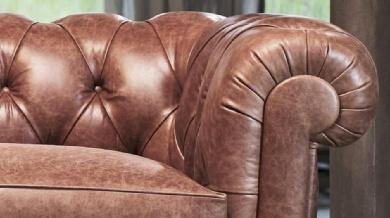
100 ARSTANNERY FOCUS ON UPHOLSTERY
CHIARA MASTROTTO STARS IN LEATHER SUSTAINABILITY TALK CHIARA MASTROTTO PROTAGONISTA DEL TALK SULLA SOSTENIBILITÀ DELLA PELLE
DETTAGLIO DELL’INCONFONDIBILE DIVANO CHESTERFIELD INGLESE IN UNA NUOVA NUANCE DELL’ARTICOLO TUSCANIA DI GRUPPO MASTROTTO
DETAIL OF THE UNMISTAKABLE ENGLISH CHESTERFIELD SOFA IN A NEW TUSCANIA LEATHER SHADE
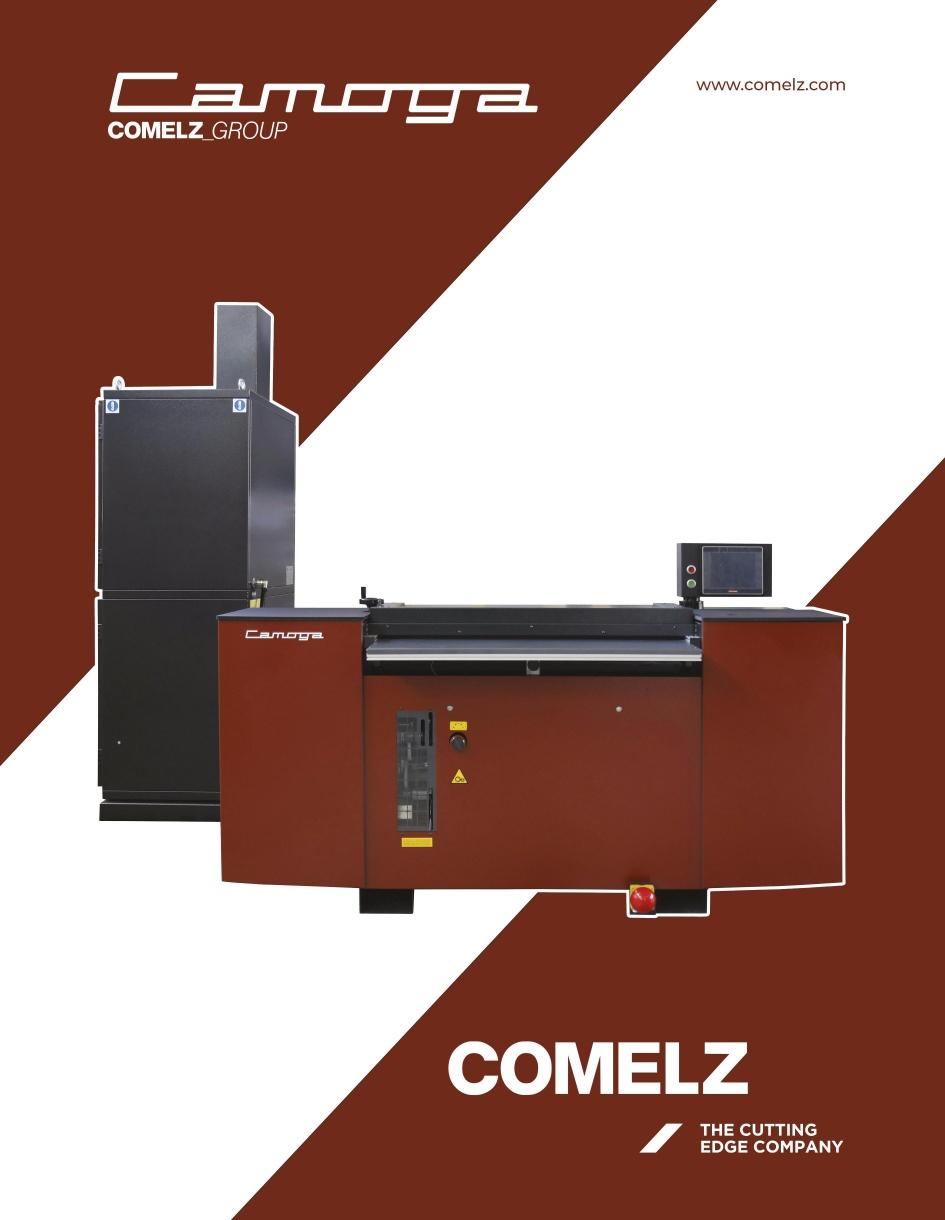
THE ZEOLOGY LEATHER EXHIBITION AT FUORISALONE
Animal Leather: Trash or Treasure? An initiative by Nera Tanning to raise consumer awareness
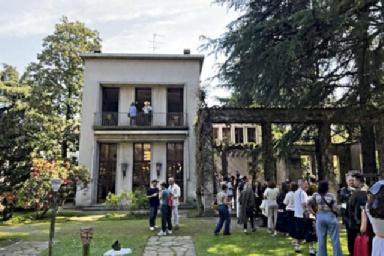
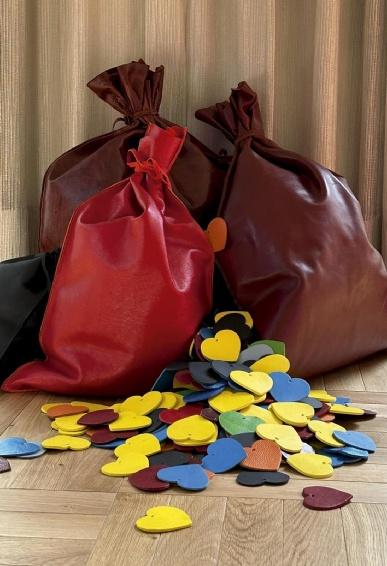
Among the spaces dedicated to leather seen during Design Week, the 'Zeology Leather' exhibition organised at Alcova Milano, a must-see destination at Fuorisalone, stood out. “We were not there to present a product, but to tell the story of our sustainable tanning process and to create a dialogue about leather,” they comment from Nera Tanning, a brand of Royal Smit & Zoon, a Dutch leather chemicals company that developed the innovative Zeology tanning technology.
‘”Animal Hide: Trash or Treasure?” is the title of the exhibition set up to highlight the importance of using and valorising a waste product from the food industry that would otherwise end up in landfills. ”What do we do with it? – the visitor was asked - Throw it away as trash or turn it into a beautiful, and when using Zeology, also a compostable material, namely leather”?
“More than a thousand consumers, brands, designers and journalists visited our exhibition and all of them - vegans and non-vegans - agreed that, out of respect for the animal, we should use everything animal,” comment from the company.
“We noticed that many people do not know how leather is produced. Also, there are still people who believe that the animal is killed for the hide and are not aware of the damage to the environment when the hide has to be burnt or buried in a landfill. In this sense, the exhibition has helped to bring more clarity to visitors”.

102 ARSTANNERY FOCUS ON UPHOLSTERY
Three main topics were brought to the attention of the visitors:
The use of the by-product of the food industry, the animal hide, and turn it into a beautiful versatile leather item. We are saving a hide from going to waste.
How to take responsibility for a cleaner tanning process by using Zeology. Zeology is mineral-based and free of hazardous chemicals, no chrome, heavy metals or aldehyde.
A hide tanned with Zeology is compostable and can be returned to nature. It serves as a fertilizer, giving 20% more plant growth than industrial fertilizer. (Test results by Anya Hindmarch)
LA MOSTRA ZEOLOGY LEATHER AL FUORISALONE
Pelle animale: spazzatura o tesoro? Un’iniziativa di Nera Tanning per sensibilizzare i consumatori
Tra gli spazi dedicati alla pelle visti in occasione della Design Week spicca la mostra “Zeology Leather” organizzata all'Alcova Milano, meta imperdibile del Fuorisalone. “Non eravamo lì per presentare un prodotto, ma per raccontare la storia del nostro processo di concia sostenibile e per creare un dialogo sulla pelle” spiegano da Nera Tanning, brand di Royal Smit & Zoon, azienda chimico conciaria olandese che ha sviluppato l’innovativa tecnologia conciaria Zeology.
“Pelle animale: spazzatura o tesoro?” il titolo della mostra allestita per evidenziare l’importanza di utilizzare e valorizzare uno scarto dell'industria alimentare che altrimenti finirebbe in discarica. “Cosa ne facciamo delle pelli grezze – si chiedeva al visitatore - le gettiamo via come spazzatura o le trasformiamo in un materiale bellissimo come la pelle che, utilizzando Zeology, diventa anche compostabile?”.
“Più di mille consumatori, marchi, designer e giornalisti hanno visitato la nostra mostra e tutti - vegani e nonhanno concordato sul fatto che, per rispetto dell'animale, dovremmo usare tutto ciò che proviene dall’animale” commentano da Royal Smit & Zoon. “Abbiamo notato che molta gente non sa come viene prodotta la pelle. Ci sono ancora persone che credono che l'animale venga ucciso per la pelle e non sono consapevoli dei danni arrecati all'ambiente quando la pelle viene bruciata o sepolta in
una discarica. In questo senso, la mostra ha contribuito a fare maggiore chiarezza tra i visitatori”.
Tre gli argomenti principali sottoposti all’attenzione dei visitatori:
- L'utilizzo di un sottoprodotto dell'industria alimentare, la pelle, e la sua trasformazione in un bellissimo e versatile articolo in pelle. Stiamo salvando una pelle dal rischio di essere sprecata.
- Come assumersi la responsabilità di un processo di concia più pulito utilizzando Zeology. Zeology è a base minerale e privo di sostanze chimiche pericolose, senza cromo, metalli pesanti o aldeide.
- Una pelle conciata con Zeology è compostabile e può essere restituita alla natura. Serve come fertilizzante, dando il 20% in più di crescita alle piante rispetto ai fertilizzanti industriali. (Risultati del test di Anya Hindmarch)

ARSTANNERY 103 FOCUS ON UPHOLSTERY
PELLE FRAU® COVERS THE FIAT 500 COLLECTION 1957
Precious interiors for the limited edition series celebrating an Italian
car icon
1957 saw the birth of the Fiat 500, the vehicle that would become an icon of Italian mobility and freedom of movement. To celebrate the car that today is the European leader in the citycar segment, FIAT is launching a new special limited edition series, Collezione 1957.
Comprising 1957 units, this edition is distinguished by its characteristic 'dolce vita' design and exclusive features. These include charming ivory upholstered interior seats with Pelle Frau® leather inserts and the characteristic embossed 'ONE OF 1957' logo, a wooden dashboard and a dedicated numbered plaque on the centre tunnel. The exterior is completed by a two-tone white-green body and beige soft top, the new Silver Beauty Line and 16’ Bianco Diamante alloy wheels.
‘We are proud to give a touch of design to this emblematic car that has become over the years an icon of fashion and style and an ambassador of Made in Italy in the world, and in recent years a revolutionary of urban mobility in the sign of sustainability and electrification,” comment from Poltrona Frau, the Italian brand that most identifies itself with leather upholstery.
THE PELLE FRAU® CATALOGUE
The Pelle Frau® catalogue consists of 10 different collections developed by the Research and Development Centre team in collaboration with the best Italian tanneries. Each collection has its own specific tanning process, which defines its technical and sensory characteristics. Only leathers that can guarantee characteristics of impermeability, breathability, and resistance to rubbing and stains are defined as Pelle Frau®. Today, they are also ‘impact less’, with a reduced impact on the environment, because they are tanned without chrome and with a limited use of chemical substances and water, reducing the total CO2 emissions during the tanning process by 10%.
PELLE FRAU® RIVESTE
LA FIAT 500 COLLEZIONE 1957
Interni preziosi per la serie a tiratura limitata che celebra un’icona dell’auto italiana
Nel 1957 nasceva Fiat 500, il veicolo che sarebbe diventato icona della mobilità e della libertà di movimento italiana. Per celebrare l'auto che oggi è leader europeo nel segmento delle city-car, FIAT lancia una nuova serie speciale a tiratura limitata, la Collezione 1957.
Composta da 1957 unità, questa edizione si distingue per il suo caratteristico design "dolce vita" e per le sue caratteristiche esclusive. Tra queste spiccano gli affascinanti sedili interni rivestiti in avorio con inserti in Pelle Frau® e il caratteristico logo "ONE OF 1957" in rilievo, una plancia in legno e una targhetta numerata dedicata sul tunnel centrale. Gli esterni completano l'effetto con una carrozzeria bicolore bianco-verde e capote beige, la nuova Beauty Line Argento e dai cerchi in lega da 16" Bianco Diamante. “Siamo orgogliosi di dare un tocco di design a questa emblematica vettura divenuta nel corso degli anni un'icona di moda e di stile e ambasciatrice del Made in Italy nel mondo, e negli ultimi anni rivoluzionaria della mobilità urbana nel segno della sostenibilità e dell'elettrificazione” commentano da Poltrona Frau, il brand italiano di arredamento che più di tutti si identifica per l’utiizzo della pelle.
IL CATALOGO PELLE FRAU
Il catalogo Pelle Frau® si compone di 10 diverse collezioni sviluppate dal team del Centro Ricerca e Sviluppo in collaborazione con le migliori concerie Italiane. Ogni collezione ha il suo processo di concia specifico, che ne definisce le caratteristiche tecniche e sensoriali. Solo pelli in grado di garantire caratteristiche di impermeabilità, traspirazione, resistenza allo sfregamento e alle macchie, vengono definite Pelle Frau®. Oggi anche “impact less”, con un ridotto impatto sull'ambiente, perché conciate senza cromo e con un limitato impiego di sostanze chimiche e di acqua, abbattendo del 10% l'emissione totale di Co2 durante il processo di concia che, infine, viene compensata.
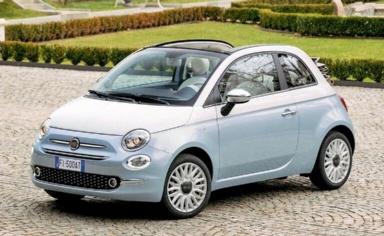

104 ARSTANNERY FOCUS ON UPHOLSTERY
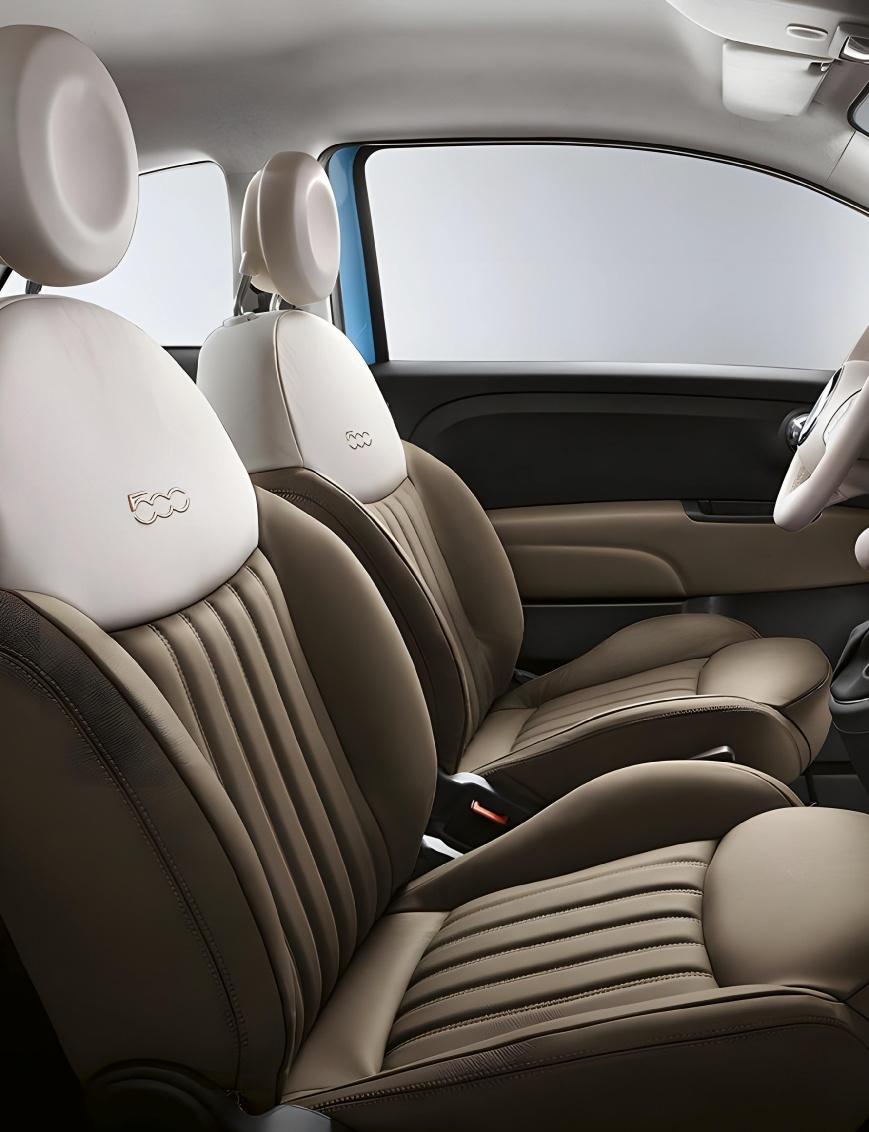
ARSTANNERY 105
SUSTAINABLE CONSTRUCTION MATERIALS
FOR LOW-COST HOUSING: THERMAL INSULATION POTENTIAL OF EXPANDED SBR COMPOSITES WITH LEATHER WASTE
Source: Journal of Materials Research and Technology
Gabriel Deltrejo Ribeiro a, Carlos Toshiyuki Hiranobe a, Samara da Silva Araújo a, Matheus da Silva Filgueira a , José Afonso Rocha a, Jefferson Shiguemi Mukuno a, Leandra Oliveira Salmazo b, Andressa Silva Gomes c ,
Gabrieli Roefero Tolosa c,Elmer Mateus Gennaro d, Aldo Eloizo Job c, Miguel Angel Rodríguez Pérez b , Renivaldo José dos Santos a
a Sao Paulo State University (UNESP), Faculty of Engineering and Sciences, Engineering Department, Avenida dos Barrageiros, 19274-000, Rosana, SP, Brazil
b Cellular Materials Laboratory (CellMat), Condensed Matter Physics Department, University of Valladolid, Paseo de Belén 7, 47011, Valladolid, Spain
c Sao Paulo State University (UNESP), Faculty of Science and Technology, Department of Physics, Rua Roberto Simonsen, 19060-900, Presidente Prudente, SP, Brazil
d Sao Paulo State University (UNESP), Engineering School, Department of Aeronautical Engineering, Avenida Profa Isette Corrêa Fontão, 13876-750, São João da Boa Vista, SP, Brazil
1. INTRODUCTION
In recent decades, there has been a growing concern regarding energy efficiency and thermal comfort in low-income housing, particularly in regions where extreme climatic conditions can significantly impact inhabitants’ quality of life [1]. Conventional materials commonly used in civil construction, such as bricks and concrete, generally exhibit low energy efficiency [2]. This leads to an increase in temperatures within dwellings, particularly in areas with hot climates. This condition not only compromises the thermal comfort of residents but also can cause health issues and result in higher energy consumption due to the use of air conditioning systems [3]. In certain regions and periods, the electricity consumption dedicated to residential cooling competes with industrial sector demand. Such a scenario can strain the existing electrical infrastructure, leading to failures and interruptions in power grids. To prevent more extensive collapses, electric utility companies may implement measures such as load reduction or deliberate shutdowns of specific areas of the grid. Restoring
power supply can take from a few hours to several days, resulting in damages, losses, and discomfort for the population, businesses, hospitals, and industries [4].
With the aim of mitigating climatic effects and contributing to the reduction in electricity consumption, research has emerged in modeling and simulations, as well as in the manufacturing of composite materials that function as thermal insulators. Sheng et al. [5], evaluated the thermal resilience of an assisted living facility during heatwaves and cold spells, along with power outages. Through comprehensive modeling and analyses, the impacts of 13 energy efficiency measures on thermal resilience and backup energy capacity of the facility were assessed. The study concluded that natural ventilation is effective in mitigating internal overheating during summer, while building thermal insulation measures may have conflicting performance between heat and cold events.
Another study on computational simulation was conducted by Anter et al. [6],
106 ARSTANNERY RESEARCH
who integrated phase change materials (PCMs) into building walls to enhance thermal performance and save energy. The study investigated the long-term thermal behavior of a building wall containing different types and thicknesses of PCM during the hot summer in Aswan, Egypt. Using computational simulations, the study assessed the impact of PCM types, thicknesses, and locations on the internal wall temperature. The results indicated that the use of PCM reduces internal heat flow and maintains the temperature of internal walls closer to desired levels, with RT35HC PCM demonstrating the best thermal performance.
In the realm of modern composite materials manufacturing, Kocyigit et al. [7], ddressed the development of an innovative cellular concrete incorporating a phase change material composed of saturated caprylic acid in residual basalt powder. This material, designed for thermal energy storage in buildings, demonstrated solar thermoregulation properties, maintaining a more stable and comfortable internal temperature. The results indicate that although the addition of the phase change material caused a slight reduction in the mechanical strength of the concrete, it exhibited high performance in terms of melting and solidification capacity after multiple cycles. These findings suggest that the developed cellular concrete can be considered a sustainable option for construction, contributing to energy conservation and efficient thermoregulation in buildings.
A study conducted by Kumar et al. [8], provides a comparative analysis of the properties and performance of insulation materials for construction. The importance of insulation in energy efficiency and internal comfort is emphasized, particularly considering that the building’s thermal insulation accounts for a significant portion of heat gain/ loss. The study proposes an optimization scheme, considering thermal, hygroscopic, acoustic, fire reaction, environmental properties, and insulation material costs, with an emphasis on
different climatic zones. Additionally, it suggests that sustainable insulation materials can help minimize the risk of overheating in summer, highlighting the importance of considering multiple criteria in choosing suitable insulation.
Given this, there is a growing demand for eco-efficient composite materials aimed at reducing energy consumption and environmental sustainability. In this regard, the development of thermally efficient, low-density, and affordable coating materials has become a priority in research and innovation [9]. Among the various available options, there is the possibility of developing expanded polymeric composites using bovine leather waste. Bovine leather waste, such as trimmings and shavings, besides generating a large volume of discarded material in the environment, contains chromium III sulfate used in leather tanning, which provides desirable characteristics to the final material. When applied to leather during the tanning process, chromium sulfate forms chemical bonds with collagen fibers, making them more stable and resistant to decomposition caused by bacteria. Additionally, chromium imparts properties to leather such as moisture resistance, durability, and a wide range of colors after dyeing [10]. These characteristics make chromium sulfate a popular choice in the leather tanning industry. However, it is important to note that improper handling or disposal of chromium waste can have negative environmental impacts. Prolonged exposure to sunlight can oxidize trivalent chromium sulfate (Cr3+), which is the most stable form, into hexavalent chromium sulfate (Cr6+), which is carcinogenic and can contaminate soil and water [11].
Polymeric matrices stand out as the ideal base for incorporating leather waste. Their ability to encapsulate the filler prevents the oxidation of Cr3+ into Cr6+, preventing the formation of carcinogenic compounds and ensuring the environmental safety of the material, while also acting as a reinforcing filler in the mechanical properties of
ARSTANNERY 107 RESEARCH
the composites [12]. The introduction of an expanding agent into the polymeric matrix creates air cells, making the composite porous. This porosity reduces the thermal conductivity of the material, making it suitable for applications such as thermal insulation [13]. The composite’s porosity also contributes to sound absorption, opening possibilities for its application as an acoustic insulator. This property can be especially useful in environments that require noise control, such as residential and industrial buildings.
Following a similar approach, studies such as that of Ulfat et al. [14], reused residues from the leather tanning industry, known as polishing dust, to manufacture a polystyrene thermal insulation composite. The research aimed to mitigate air pollution caused by these residues by developing a composite material that combines polishing dust with polystyrene and an expanding agent. The results showed that the obtained composite had satisfactory physicochemical properties, such as reduced thermal conductivity, good compression resistance, and adequate thermal stability. The analysis suggests that these composite panels can be used as thermal insulation in construction, representing a sustainable solution to the problem of air pollution and promoting circular economy principles.
Garcia et al. [15], developed a new method for recycling leather waste by using it as a filler in natural rubber foams. Different amounts of leather waste were added to the foams and subjected to morphological and mechanical analyses. Increasing the amount of leather waste resulted in foams with smaller and more uniform cells. Additionally, it was observed that the stiffness of the foams increased with the concentration of leather waste. This study demonstrates a promising approach for recycling leather waste and producing new eco-friendly materials.
In this context, expanded styrene-butadiene rubber (SBR) composites have been developed as a promising alter-
native due to their thermal properties, reduced cost compared to synthetic rubbers, and the potential for incorporating industrial waste such as leather residue, contributing to environmental sustainability. Furthermore, it is relevant to emphasize that these expanded composites also have the potential to serve as acoustic materials. The sound absorption capacity of materials is essential for improving acoustic comfort in residential environments, especially in urban areas where external noise can be a constant concern. Therefore, the use of these expanded composites will not only provide thermal insulation but also contribute to reducing unwanted noise, creating more comfortable and peaceful environments for inhabitants of low-income housing. This combination of benefits makes SBR expanded composites with industrial leather waste a multifunctional and sustainable solution to the challenges faced in the construction of affordable housing.
Thus, a combination of experimental methods was employed to investigate the morphological, thermal, and acoustic properties of expanded SBR rubber composites with leather residues. Initially, Scanning Electron Microscopy (SEM) coupled with Energy Dispersive X-ray Spectroscopy (EDX) was used to characterize the morphology and dispersion of the residues in the polymeric matrix. Rheological parameters were obtained through rheometric tests. The crosslinking density of the materials was determined by the swelling method in organic solvent, using the Flory-Rehner Equation. Additionally, thermal analyses such as Thermogravimetric Analysis (TGA) and Differential Scanning Calorimetry (DSC) were performed, elucidating the stability and thermal transitions of the composites. Thermal conductivity was measured using the hot and cold plate method, while acoustic properties were investigated through sound absorption tests in an impedance tube. These meticulously selected methods allowed for a detailed evaluation of the potentials of the composites as thermal and acoustic insulators, highlighting their applicability in low-income housing.
108 ARSTANNERY RESEARCH
2. EXPERIMENTAL
2.1. Materials
The company DLP Indústria e Comércio de Borrachas e Artefatos Ltda-ME, based in Poloni, São Paulo, Brazil, provided the styrene-butadiene rubber (SBR) 1502 synthetic rubber with a Mooney viscosity above 49.0 (measured at 100 °C) and a styrene content of 23.5%. The leather waste, in the form of “shavings”, originated from the uniformization of the leather sheet and was donated by the company Curtume Touro LTDA, located in Presidente Prudente, São Paulo, Brazil. Subsequently, the leather waste was micronized until reaching a particle size of 50 mesh. The ultrafine calcium carbonate, previously treated with 2% volume coupling agent Chartwell C-515.71HR®, was provided by the company Aodran do Brasil Comércio de Produtos Químicos Ltda to neu-
tralize the acidity of the leather waste. All other items were commercially acquired, with a high degree of purity. Zinc oxide was supplied by the company Labsynth Products for Laboratories. Stearic acid and sulfur were donated by the company Jand Chemical Industry and Trade in Chemical Products Ltd. The accelerators benzothiazole disulfide (MBTS) and tetramethylthiuram monosulfide (TMTM) were provided by the company Shandong Shanxian Chemical Co. Ltd. The expanding agents, azodicarbonamide and sodium carbonate, the plasticizing oil (Prolite M), and the antioxidant (Protetox NS) were donated by the chemical industry PROQUITEC – Indústria de Produtos Químicos e Representação Comercial S.A., located in Brazil.
2.2. Preparation of composites
Table 1 presents the formulation and components of the composites.
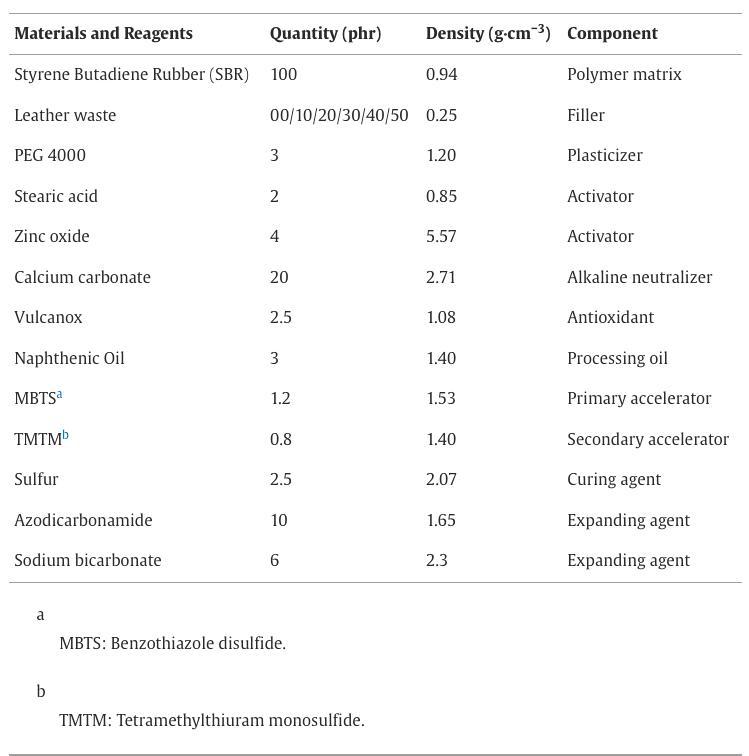
ARSTANNERY 109 RESEARCH
TABLE 1 FORMULATION OF EXPANDED SBR RUBBER COMPOSITES WITH LEATHER WASTE.
In formulating the composites, previous analyses on the incorporation of organic and inorganic fillers in rubber composites were considered, as well as the rubber’s ability to form foams [[16], [17], [18], [19], [20], [21], [22], [23], [24], [25]]. The composites were developed using leather residues in increments of 0, 10, 20, 30, 40, and 50 phr (per hundred rubber), with the composite containing 0 phr designated as pure gum or reference composite. The preparation of the composites took place in an open two-roll mill mixer of the brand Makintec – model 379 M, with a friction ratio of 1:1.25, following ASTM D3182-15 standard procedures. [26].
Initially, the SBR rubber was plasticized in an open roll mill at a temperature of approximately 65 °C for 5 min. After the rubber was plasticized, the filler was added for homogenization in the mixture. Then, PEG 4000 (polyethylene glycol), stearic acid, and zinc oxide were added to promote activation in the rubber. Subsequently, calcium carbonate was incorporated to assist in pH control, along with the addition of antioxidant and processing oil. After complete homogenization, the sample was allowed to rest for 24 h. Following the activation period in the rubber, the composites were reintroduced into the open mill for the addition of accelerators, sulfur, and blowing agents. Then, with the homogenized sample, rheometric tests were conducted to determine the rheological parameters and the production of test specimens in the hot press.
2.3. Rheological analysis and degree of dispersion of the filler in the polymeric matrix
The rheometric parameters were obtained using the TEAM brand rheometer (1300 W) with a disk oscillation of 1° and isotherms at 160 °C, as specified in ASTM D2084-19 [27].
Subsequently, after determining the rheometric parameters, the material was subjected to the hot press process at 160 °C, using the Mastermac Press-Model Vulcan 400/20-1, with a maximum pressure of 210 kgf·cm−2. The cure rate index (CRI) is another rheometric parameter that can be analyzed. The CRI was calculated according to Equation (1): (1)


It is also possible to calculate the degree of dispersion of leather waste in SBR compounds quantitatively, using Equation (2) [28]: (2)
where:
L = represents the degree of dispersion of the filler in the polymeric matrix;
ηr = ratio [M Lf /M Lg ];
mr = ratio [M Hf/M Hg];
ML = minimum torque;
MH = maximum torque;
f e g represents the filler and the pure gum, respectively.
2.4. Determination of cross-link density by swelling in organic solvent (Flory-Rehner)
The cross-link density of the composites was evaluated using the swelling technique in organic solvent. Initially, the samples were weighed with an approximate mass of 0.25 ± 0.05 g and immersed in toluene for a period of 5 days. After this interval, the samples were removed, dried to remove excess
110 ARSTANNERY RESEARCH
solvent, and then weighed again. Subsequently, the samples were subjected to an oven at 60 °C for 24 h and weighed once more. All obtained values were recorded and used, together with measurements of the mass of the dry sample, the mass of the sample after swelling, and the mass of the solvent retained in the sample, to calculate the value of the volume fraction of rubber in the swollen form (VB). The cross-link density was then determined using Equation (3) proposed by Flory-Rehner [29,30]:

where:
χ = polymer-solvent interaction parameter;
ρB = rubber density;
V0 = molar volume of the solvent;
VB - volume fraction of swollen rubber.
ρL = density of ethanol at the analysis temperature (g·cm−3);
mA = mass of the sample in air (g);
mB = mass of the sample in the liquid (g).
2.5. Determination of relative density

Additionally, the method outlined in ASTM D297 [31] was employed to determine the density of the composites. This method involves measuring the mass of the sample both in air and in a liquid of known density, with ethyl alcohol (ρL = 0,79 g cm−3) being the liquid utilized. The measured mass values were inputted into Equation (4): (4) where:
Ρ = sample density (g·cm−3);

The relative density (ρr) of the foam was determined in accordance with ASTM D1622 [32], using Equation (5). This equation describes the relationship between the density of the rubber before vulcanization and expansion (ρs), known as the raw density, and the density of the foam (ρf) obtained after the forming process: (5)
2.6. Scanning electron microscopy (SEM) with Energy Dispersive X-ray spectroscopy (EDX)
The equipment used for SEM was the Hitachi SU3800 scanning electron microscope, utilizing a high vacuum and constant temperature secondary electron detector with an applied voltage of 20 kV, allowing for magnifications of 1000 and 10,000 times. The samples were metallized with a thin layer of gold using the Quorum Q150TE Sputtering system. They were affixed to a sample holder (stub) with double-sided carbon-conductive tape. Chemical elements present at specific points on the material were identified using energy-dispersive X-ray spectroscopy (EDX) with the Bruker XFlash Detector 630 M. The pore sizes and areas were analyzed by generating histograms from the data sets of three SEM images for each composite.
2.7. Analysis of pore anisotropy Anisotropy refers to the property of
ARSTANNERY 111 RESEARCH
(3)
a material to exhibit different physical or mechanical characteristics in different directions. When applied to pores in expanded composites, pore anisotropy indicates that they have different sizes, shapes, or distributions in different directions within the material. This variation can significantly affect the properties of the composite, such as its thermal conductivity, sound absorption capacity, mechanical resistance, among others. Pore anisotropy was determined using the Image J software obtained from Scanning Electron Microscopy (SEM) images of each composite. This software calculates various geometric metrics, including different pore sizes. Analyzing three SEM images per composite allows for a comprehensive and representative evaluation, effectively reducing sampling biases and capturing the inherent variability among pores, relating to how pores expand and orient themselves under various processing conditions.

tion via Equation (7). It calculates the number of cells per unit volume based on the area of the solid sample. (7)
where Nu is the number of cells per cubic centimeter of the foamed material, and Vf is the volumetric fraction of voids, referred to as porosity. These parameters are calculated through Equations (8), (9), respectively.


where:
n = number of cells;

Anisotropy is the ratio between the largest and smallest linear dimension of the pore, aiding in the understanding of pore growth in SBR foams and how it varies in different directions or axes. This measure ranges from around 1 for isotropic foams to 10 or more for anisotropic ones [ [33]], estimated through Equation (6): (6)
where:
R = degree of anisotropy; L = major pore dimension; L = minor pore dimension.
2.8. Cell density determination and pore size distribution
The cell density (N0) was determined using Kumar’s theoretical approxima-
M = magnification factor of the SEM image area;
A = analyzed area of the sample;
ρr = relative density of the foam.
The analysis of pore size distribution aimed to identify the variation in cell size according to the solid precursor used. This distribution is expressed as the number of cells. The analysis was conducted through images obtained by scanning electron microscopy (SEM).
2.9. Dynamic mechanical analysis (DMA)
A Netzsch equipment, model DMTA 242C, was used, operating in the three-point bending mode, with the force applied perpendicular to the sample. Test conditions were set with a frequency of 2.0 Hz, a heating rate
112 ARSTANNERY RESEARCH
(8) (9)
of 5 °C per minute, temperature range from −100 °C to 100 °C, a proportionality factor of 1.1, amplitude of 1.20 μm, and a maximum dynamic force of 5.0 N.
2.10. Thermogravimetric Analysis (TGA)
Thermogravimetric Analysis (TGA) tests were conducted using a Netzsch equipment, model 209. The temperature range employed was from 100 °C to 550 °C, using an alumina (Al2O3) sample holder, in an inert N2 atmosphere with a flow rate of 15 ml min−1. The heating rate was set at 10 °C per minute, and the sample masses were approximately 10 mg, as stipulated in ASTM D6370 standard [34].
2.11. Differential Scanning Calorimetry analysis (DSC)
The equipment used was from the brand Netzsch, model DSC 204 –Phoenix. For the measurements, an aluminum (Al) crucible was used, with an inert Nitrogen (N2) atmosphere at a flow rate of 15 ml min−1, within a temperature range of −100 °C to 500 °C and a heating rate of 10 °C.min−1. The sample masses were approximately 10 mg.
2.12. Thermal conductivity analysis
The procedure for determining thermal conductivity is conducted through the heat flux propagating through the sample, as described in ASTM C518 [[35], [36], [37], [38], [39]]. Additionally, the hot/cold plate heat flux analysis is calibrated following ASTM C1363 [[40], [41], [42]]. The tested composite has dimensions of 190 × 190 mm in length and width, with a thickness of 15.5 ± 0.5 mm, acting as a barrier between two chambers. One chamber contains the heat source, while in both chambers, the temperature is monitored by thermocouples—one located between the heat
source and the composite, and the other equidistant from the composite in the other chamber. The composite is equipped with 4 thermocouples on each side, positioned at the centroids of the four quadrants.
To establish the heat losses of the equipment, a sample with a known thermal conductivity was used [34]. Thus, the energy efficiency (αef) was calculated at 10.98% relative to the energy emitted by the source, with the remaining being dissipated. By applying Equation (10), it was possible to determine the thermal conductivity of the composites.

where:
Q = heat flux in the measured area (W);
Qg = generated heat flux (W);
α = energy efficiency (%);
λ = thermal conductivity of the material (Wm 1K−1);
A = measurement area (m2);
ΔT = temperature difference between the faces of the sample (°C);
e = thickness of the specimena (m).
2.13.
Analysis of acoustic absorp-
tion
The acoustic absorption coefficient was investigated using an impedance tube Model UA-1630, manufactured by Bruel and Kjaer. The test was conducted following the standard procedure detailed in ASTM E105010 [43]. The sound absorption coefficient was calculated in the frequency
ARSTANNERY 113 RESEARCH
(10)
range of 500–6400 Hz, at a temperature of 20 °C. The analysis was performed on samples with a diameter of 30 mm and a thickness of 10 mm.
pattern to that of the maximum torque is noted, reaching a peak value after 30 phr and showing a tendency to stabilize beyond this point.
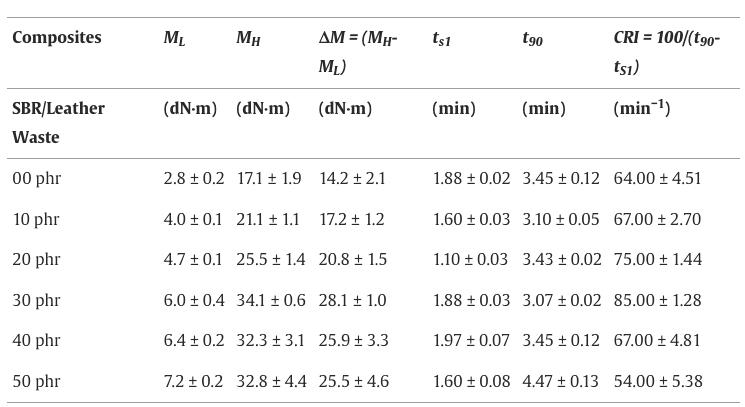
During sample preparation, the skin layer was removed, and the analysis was conducted on the foam surface perpendicular to it.
3. RESULTS AND DISCUSSION
3.1. Rheological analysis and degree of dispersion of the filler in the polymeric matrix
The results of the rheometry tests for the composites are presented in Table 2. A progressive increase in the minimum torque values (ML) is observed with the addition of leather waste, a phenomenon associated with increased viscosity due to the presence of the filler. The maximum torque values (MH) also increased progressively until reaching an equilibrium plateau for values above 30 phr of leather waste added to the composites. It is likely that foam formation during the crosslinking process stabilizes the maximum torque, even with the addition of more fillers. The torque variation (ΔM) is related to crosslink formation and the presence of fillers. A similar
The pre-vulcanization time (ts1), also known as scorch time, is the period required for an elastomeric composition to reach a specific temperature before the formation of the first cross-links during the vulcanization process. On the other hand, the optimal curing time (t90) represents the time required for the formation of 90% of the cross-links.
In both cases, in the respective vulcanization processes of the composites, similar values are commonly found. It is likely that calcium carbonate is neutralizing the acidity of the leather residue, resulting in a similar curing time for all composites. The cure rate index (CRI) is a measure that indicates how quickly the rubber cross-linking process occurs during vulcanization. A growing vulcanization rate is observed for composites up to 30 phr. However, after this value, the increase in filler tends to result in greater resistance in the rubber, which reduces the cure rate.
114 ARSTANNERY RESEARCH
2 RHEOMETRIC PARAMETERS OF SBR/LEATHER WASTE COMPOSITES.
TABLE

Fig. 1 depicts the plot of the degree of dispersion of leather residue in the SBR rubber matrix. A substantial reduction in the L value at a specific filler, compared to the composite devoid of filler, indicates a notable improvement in the dispersion of leather residue. It was observed that the degree of dispersion of the fillers remained adequate up to the addi-
tion of 30 phr of residue. However, from 40 phr onwards, a tendency towards inter-agglomeration between the fillers emerged, resulting in a decrease in the mechanical properties of the composites. It is noticeable that lower viscosity tends to reduce the minimum torque required and, consequently, facilitates filler dispersion, in addition to reinforcing the
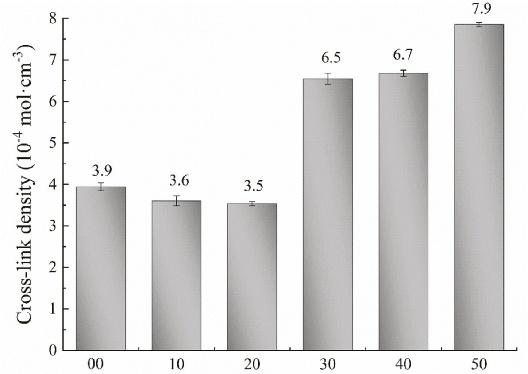
ARSTANNERY 115 RESEARCH
FIG. 1.DEGREE OF DISPERSION OF LEATHER WASTE IN THE SBR RUBBER MATRIX.
FIG. 2. CROSS-LINK DENSITY PER SWELLING IN ORGANIC SOLVENT (FLORY-REHNER).

interaction between styrene-butadiene (SBR) and leather waste. The interaction between the filler and the matrix can be interpreted as the formation of additional physical crosslinks, which contribute to the total crosslink density in the system [44].
3.2. Analysis of cross-link density by swelling in organic solvent (Flory-Rehner)
Fig. 2 presents the values of crosslink density for the expanded composites. Porosity plays a crucial role, as the higher it is, the more access the sol-
vent will have to the internal regions of the material, leading to an increase in rubber sample swelling. This phenomenon suggests that the number of cross-links is reduced compared to a less porous material. In the graph of Fig. 2, it can be observed that the composites ranging from 0 to 20 phr exhibit the lowest values, which are close to each other when considering the statistical error. However, starting from 30 phr of leather waste, a significant increase in cross-link density is observed. This phenomenon is related to the interfacial interaction between

116 ARSTANNERY RESEARCH
TABLE 3 MORPHOLOGICAL PROPERTIES OF THE PORES OF SBR/LEATHER WASTE FOAMS.
MAGNIFICATIONAND
OF THE SBR/LEATHER
COMPOSITE AT 50 PHR - 5000 TIMES MAGNIFICATIONHIGHLIGHTING THE FIBROUSCHARACTERISTIC
FIG. 3. SCANNING ELECTRON MICROSCOPY (SEM) (A) OF MICRONIZED LEATHER FIBERSAT 50 TIMES
(B)
WASTE
OF LEATHER IN THE POLYMER MATRIX.

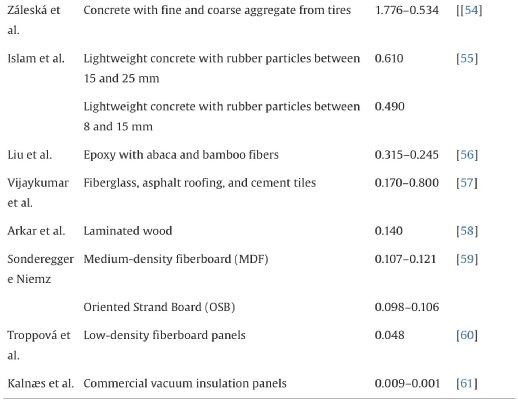
ARSTANNERY 117 RESEARCH
TABLE 4 THERMAL CONDUCTIVITY FOR DIFFERENT POLYMERIC MATRICES AND DIFFERENT FILLERS.
the filler and the polymeric matrix. Santos et al. [45] found that leather residue promotes strong adhesion with the rubber chains. This interaction is of a physical nature but acts as pseudo-crosslinking, hindering solvent penetration. Thus, according to the Flory-Rehner methodology, this interaction is computed as a crosslink.
3.3. Analysis of cellular morphology
During the foam formation process, the pressure of the released gas acts as the driving force for cellular growth. In this context, nucleation represents the initial stage of expansion, where pore formation occurs at high temperatures through the decomposition of the blowing agent molecules. Once the energy barrier is surpassed and the critical radius is achieved, growth occurs spontaneously. However, when the cell fails to reach this minimum threshold, it disintegrates, and the gas is dispersed back into the matrix. In this scenario, leather fibers play a role as an external agent, exerting a restraining force on expansion. This increases the minimum energy required for nucleation and growth [16,46]. This fibrous characteristic of leather can be observed in Fig. 3,
where the fibers have a maximum length of 1.4 mm and diameters less than 0.297 mm.
The influence of leather results in the reduction of porosity and an increase in the relative density of the foams, as presented in Table 3. Another crucial parameter in this table is the number of cells per unit volume, referred to as cellular density (N0). The smallest ratio between the foam density (ρf) and the density of the raw mass (ρs) results in a higher relative density (ρr), indicating greater porosity. This, in turn, is related to the quantity of cells, determining the cellular density (N0). Thus, higher porosity would imply higher cellular density (N0). However, this is not the case for the SBR/Leather 20 phr foams, as their cellular density depends on the number of cells formed, and this composite showed the lowest quantity of cells compared to the others (see Table 4).
The pores mostly manifest in two distinct forms: open cells, which interconnect throughout the material and communicate with the external environment; and closed cells, where gas is dispersed as separate and individual
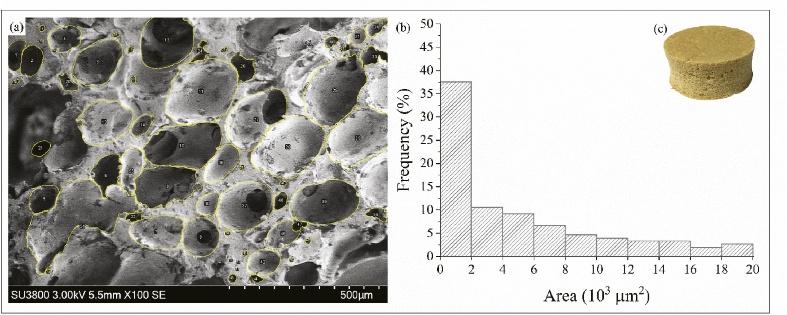
118 ARSTANNERY RESEARCH
COMPOSITE (00 PHR): (A) SEM IMAGE AT 100×MAGNIFICATION.(B) ANALYSIS OF THE DISTRIBUTION OF 152 PORES. (C) PHOTOGRAPHIC RECORD IMAGE OF THE FOAM.
FIG. 4. GUM
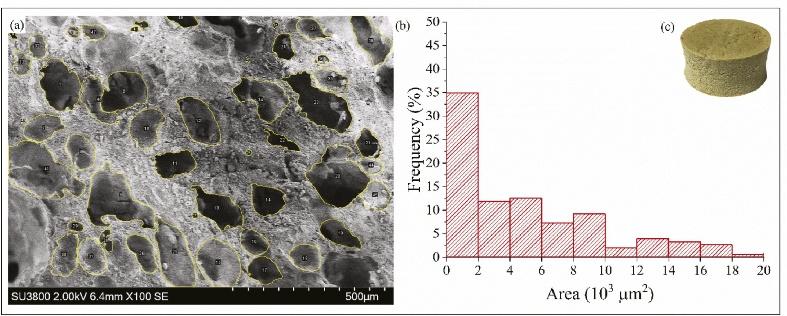
bubbles throughout the matrix, with no contact with the external medium. The density of the uncured mass before vulcanization increases with the inclusion of leather, while its porosity decreases. This suggests a system more resistant to matrix expansion, resulting in pores with closed cells. Such a result is advantageous, as closed-cell foams are denser, exhibiting higher mechanical strength and lower moisture absorption. These characteristics are desirable for applications such as thermal or electrical insulation, as mentioned earlier [62].
According to Rostami-Tapeh-Esmaeil et al. [47], it is common to find a higher prevalence of open-cell foams in materials with low viscosity, while closed-cell structures are more common in high-viscosity polymers. Viscosity can be evaluated through rheometric tests, as indicated by the minimum torque in Table 2. An increase in this torque was observed with the addition of leather in the composites, resulting in the formation of pores with closed cells. This finding is reinforced by the analysis of Fig. 4, Fig. 5, Fig. 6, Fig. 7, Fig. 8, Fig.
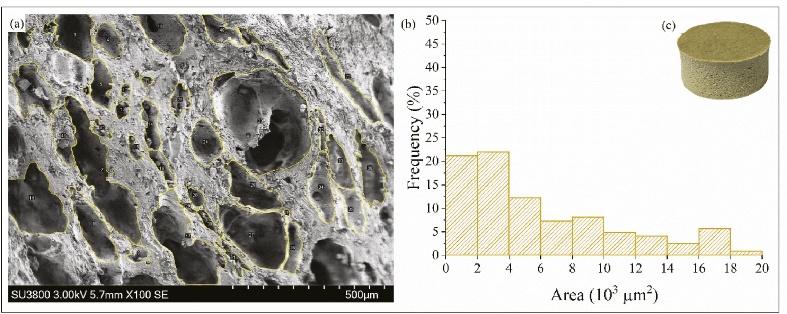
ARSTANNERY 119 RESEARCH
IMAGE AT 100×MAGNIFICATION.(B) ANALYSIS OF THE DISTRIBUTION OF 152 PORES. (C) PHOTOGRAPHIC RECORD IMAGE OF THE FOAM.
FIG. 5. SBR/LEATHER WASTE COMPOSITE 10 PHR: (A) SEM
SEM IMAGE AT 100×MAGNIFICATION.(B) ANALYSIS OF THE DISTRIBUTION OF 123 PORES. (C) PHOTOGRAPHIC
IMAGE OF THE FOAM.
FIG. 6. SBR/LEATHER WASTE COMPOSITE
20 PHR: (A)
RECORD
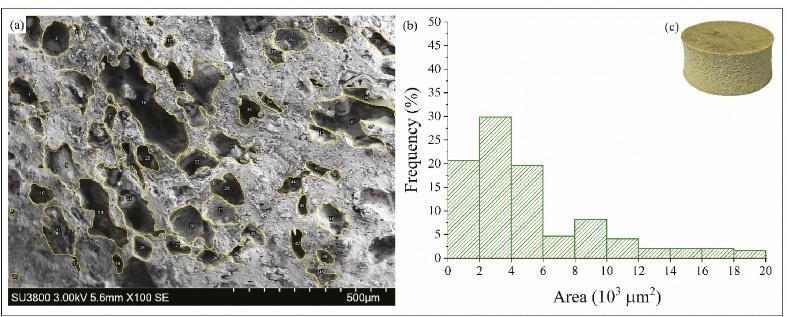
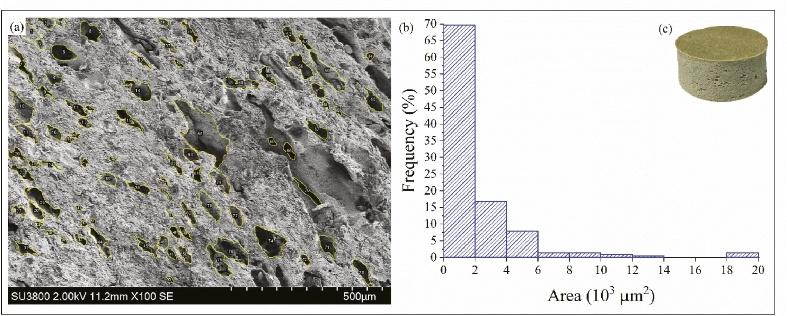
9, which provide a visual representation of each composite based on three scanning electron microscopy (SEM) images, along with the distribution of pores. As the amount of leather fibers increased, a reduction in pore areas was observed, but an increase in their occurrence. This suggests that there was no interference in the nucleation that initiated the expansion, but the available energy was not sufficient for further expansion due to the counteracting tension exerted by the leather. Regarding the pore size distribution,
the SBR/Leather waste foam with 20 phr stood out for its heterogeneity, evidenced by the significant variation in area distribution, with similar percentages for equal area intervals. On the other hand, the SBR/Leather waste foam with 40 phr revealed the highest proportion of pores with dimensions below 20.103 μm2, representing approximately 70% of the total.
Variation in pore distribution within the polymeric matrix of the foam plays a fundamental role in improving the
120 ARSTANNERY RESEARCH
AT 100×MAGNIFICATION.(B) ANALYSIS OF THE DISTRIBUTION
FIG. 8.SBR/LEATHER WASTE COMPOSITE 40 PHR: (A) SEM IMAGE
OF 214 PORES. (C) PHOTOGRAPHIC RECORD IMAGE OF THE FOAM.
FIG. 7.SBR/LEATHER WASTE COMPOSITE 30 PHR: (A) SEM IMAGE AT 100×MAGNIFICATION.(B) ANALYSIS OF THE DISTRIBUTION OF 194 PORES. (C) PHOTOGRAPHIC RECORD IMAGE OF THE FOAM.

material’s thermal conductivity. The diversity of pore sizes and densities has a direct impact on the material’s ability to conduct heat, store thermal energy, and resist heat flow [63]. The heterogeneous distribution of pores creates nonlinear and more tortuous paths for heat propagation, resulting in increased thermal resistance of the material. Consequently, the material’s thermal insulation capacity is enhanced. This influence is especially relevant for the material’s thermal properties, affecting its effectiveness as a thermal insulator and its ability to maintain thermal stability under different environmental conditions [64].
Another measure analyzed was anisotropy, which represents the ratio
between the major and minor linear dimensions of the pore, as illustrated in Fig. 10. The pore expands in the direction of lower local tension, influenced by the release of gases from the blowing agent during cell formation, as well as the mold configuration and cell wall structure. The resistance of leather fibers to internal tensile stresses, combined with the increased density of the raw masses before vulcanization, resulted in increased anisotropy of the composites as leather was incorporated. This led to greater elongation of the pores formed throughout the process.
Fig. 11 displays the area of analysis of the energy-dispersive X-ray spectro-
ARSTANNERY 121 RESEARCH
AT 100×MAGNIFICATION.(B) ANALYSIS OF THE DISTRIBUTION OF 231 PORES. (C) PHOTOGRAPHIC RECORD IMAGE OF THE FOAM. (D) SEM IMAGE AT 1,000×MAGNIFICATIONHIGHLIGHTING THE LEATHER FIBERSAND THE DEMARCATED AREA THAT WAS ENLARGED. (E) SEM IMAGE AT 5,000×MAGNIFICATIONHIGHLIGHTING THE FIBROUSCHARACTERISTIC OF THE LEATHER.
FIG. 9.SBR/LEATHER WASTE COMPOSITE 50 PHR: (A)
SEM IMAGE
scopy (EDX) spectrum of the chemical elements found in the SBR/Leather waste composites with 50 phr. The analysis revealed that the examined area is composed of 57.99% carbon and 22.32% oxygen, which are components of the polymeric matrix. Additionally, 6.48% calcium (from calcium carbonate) and 8.67% zinc (related to the zinc oxide activation agent) were identified, along with 2.71% sodium (associated with the bicarbonate expansion agent or leather processing), and finally, 1.77% chromium (present in leather waste, originating from its tanning treatment).
3.4. Dynamic mechanical analysis (DMA)
The values of the storage moduli (E’) are illustrated in Fig. 12, reflecting two main influences: i) the increased stiffness of the composites due to the vulcanization process, and ii) the presence of fillers. At low temperatures (−100 °C), it was observed that the SBR/Leather waste 50 phr composite exhibited the highest storage modulus value. This
is attributed to the increased addition of leather, which reduces the mobility of the polymeric chains, resulting in greater material stiffness. On the other hand, the other composites-maintained values close to 9000 MPa, and the decrease in storage modulus values is directly related to the decrease in the amount of leather present. As expected, the pure rubber displayed the lowest storage modulus value, reflecting its greater flexibility compared to the composites containing leather.
With the increase in temperature and the supply of heat, there is an increase in the degree of freedom related to the mobility of the material molecules, transitioning from the glassy state to the “rubbery” state, where elastomeric properties are observed again. In this condition, greater deformations occur in the matrix, as evidenced by the abrupt reduction in storage modulus values. At room temperature (25 °C), the composites maintained their response order.
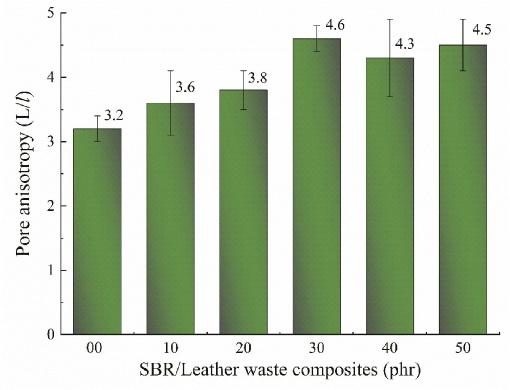
122 ARSTANNERY RESEARCH
FIG. 10.ANISOTROPY OF SBR/LEATHER WASTE COMPOSITES.

The tan δ curves are depicted in Fig. 13 and highlight the relaxation of chains and the maximum energy dissipation of the system. For all compounds, this event occurs more intensely around the temperature of −23 °C, as evidenced by the peaks of the tan δ curves. In this temperature range, rotational and translational movements of the polymeric chains
occur. Composites with higher and more extended half-height tan δ peaks indicate that the material exhibits a more elastic behavior and tends to dissipate more thermal energy during deformation [65,66]. This was the case with pure rubber (00 phr) and the SBR/Leather waste 10 phr composite. The reduction in the peak was proportional to the increase in the
ARSTANNERY 123 RESEARCH
DISPERSION OF IDENTIFIEDCHEMICAL ELEMENTS, (C) TABLE PROVIDED WITH THE IDENTIFIEDELEMENTS, (D) IDENTIFICATIONOF CHROMIUM IN THE LEATHER FIBERSPRESENT IN THE SBR/LEATHER 50 PHR COMPOSITE, AND (E) EDS
FIG. 11. DISPERSIVE ENERGY SPECTROSCOPY - EDX OF SBR/LEATHER COMPOSITE 50 PHR (A) IMAGE OF THE ANALYZED AREA, (B)
SPECTRUM.
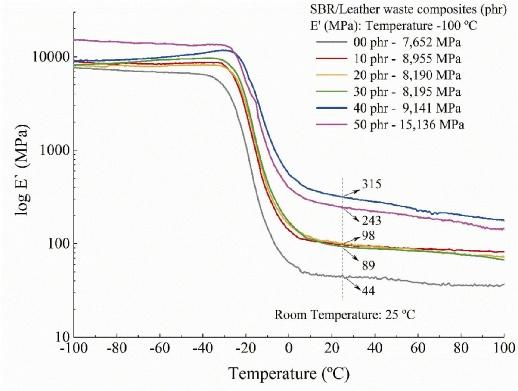
addition of leather fibers, resulting in decreased elasticity and flexibility of the polymer matrix and pores, which caused greater heat dissipation.
3.5. Thermogravimetric Analysis (TGA)
The degradation of the composites is evidenced in Fig. 14, where two mass loss events are observed. The first occurs at 245 °C, corresponding to 5% of
the total mass, attributed to the volatilization of processing oil or other low boiling point vulcanization additives. This loss can also be associated with the decomposition of urea, a byproduct of azodicarbonamide, resulting in cyanuric acid. [67].
The second mass loss event consists of two overlapping peaks, indicated by the DTG peak around 380 °C and
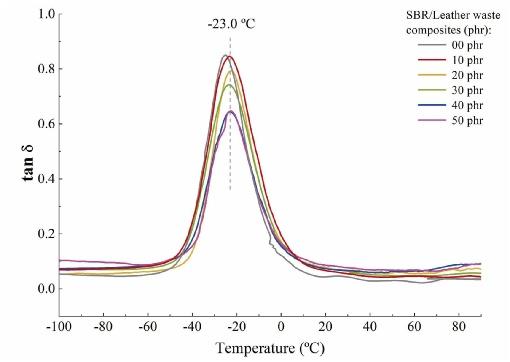
124 ARSTANNERY RESEARCH
FIG. 12.STORAGE MODULUS (E′) OF SBR/LEATHER WASTE COMPOSITES.
FIG. 13.TAN Δ CURVES OF SBR/LEATHER WASTE COMPOSITES.
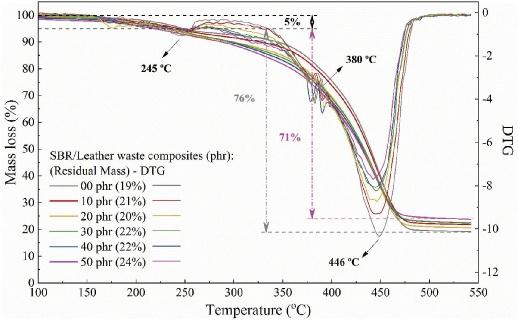
446 °C, with the entire process occurring between 300 and 500 °C. The first event is due to the decomposition of the styrene butadiene rubber (SBR), while the second refers to the sublimation of cyanuric acid, which occurs above 360 °C. In the latter, an endothermic reaction may result in an increase in the temperature of the composites. Consequently, after these events, the mass of the rubber (00 phr) is reduced by 76%, decreasing to 71% in the SBR/Leather waste 50 phr composite [
[18,[67], [68], [69], [70]]]. The residual mass increases as the amount of leather in the composites increases, composed of the inorganic materials present in the sample, such as calcium carbonate, zinc, and other chemical additives used in the curing process, as well as contaminants from the leather fibers originating from the tanning process.
3.6. Differential Scanning Calorimetry (DSC)
The heat flow curves for the SBR/Le-
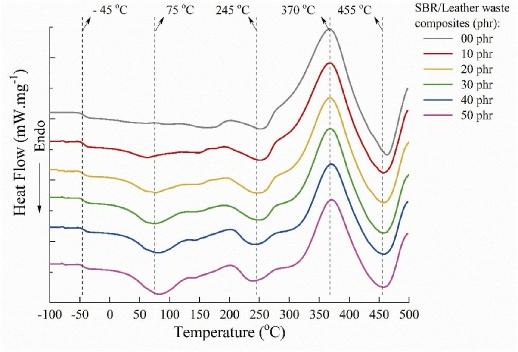
ARSTANNERY 125 RESEARCH
FIG. 14.THERMOGRAVIMETRIC ANALYSIS (TGA) AND
DTG
CURVE OF SBR/LEATHER WASTE COMPOSITES.
FIG. 15.DIFFERENTIAL SCANNING CALORIMETRY CURVE FOR SBR/LEATHER WASTE COMPOSITES.
ather waste composites are presented in Fig. 15, with the first endothermic event occurring at −45 °C, indicating the glass transition of the composites. The second endothermic event occurs at 75 °C and is attributed to the release of water present in the leather structure, especially in collagen, being more evident in the SBR/Leather waste 50 and 40 phr composites.
The third endothermic event occurs at 245 °C, confirming the volatilization of processing oil, other low boiling point vulcanization additives, and the decomposition of urea into cyanuric acid. The fourth event is exothermic, indicating the degradation of the styrene butadiene rubber (SBR) chains at 370 °C. Finally, the last endothermic event, at 445 °C, highlights the sublimation of cyanuric acid.
3.7. Analysis of thermal conductivity
The values of thermal conductivity and thermal attenuation are illustrated in Fig. 16. A decrease in thermal con-
ductivity was observed for the SBR/ Leather waste 10 phr composite and an increase for the SBR/Leather waste 20 phr composite, both compared to the rubber. These three composites exhibited a porosity of around 0.61 and a relative density of approximately 0.39. The lowest cell density was recorded for the SBR/Leather waste 20 phr composite, with a value of 102.109 cells.cm−3, followed by the SBR/Leather waste 10 phr composite, with 136.109 cells.cm-3 while the rubber recorded 133.109 cells.cm−3, as shown in Table 3. Therefore, although the SBR/Leather waste 20 phr composite achieved the lowest cell density, it exhibited the best pore distribution with more varied area sizes, as evidenced in Fig. 7, and pores with a larger average area of 9.1 × 103 μm2, providing favorable conditions for an effective response as a thermal insulator.
Given the results obtained from thermal conductivity, it is possible to compare with commonly used insulation materials in civil construction,

126 ARSTANNERY RESEARCH
FIG. 16.THERMAL CONDUCTIVITY AND THERMAL ATTENUATION FOR THE SBR/LEATHER WASTE COMPOSITES.

it is observed that the composites present competitive thermal performance. It is noticeable that the thermal conductivity of all SBR/Leather waste composites is significant and, in some cases, even lower than other related research findings. However, sealing systems employing commercial vacuum insulation panels remain the most effective in terms of thermal insulation, exhibiting significantly lower thermal conductivity.
3.8. Analysis of acoustic absorption Fig. 17 presents the acoustic absorp-
tion coefficient of the SBR/Leather composites.
Among the SBR foams analyzed in this study, the SBR/Leather 50 phr sample demonstrated the best acoustic performance, albeit restricted to the frequency range of 1500–3500 Hz. On the other hand, the SBR/Leather 20 phr composite maintained its performance over a broader frequency range, from 1500 to 4500 Hz, with absorption values close to 0.30. This may be attributed to the lower cell density and better heterogeneous distribution of pores, as shown in Fig. 6.
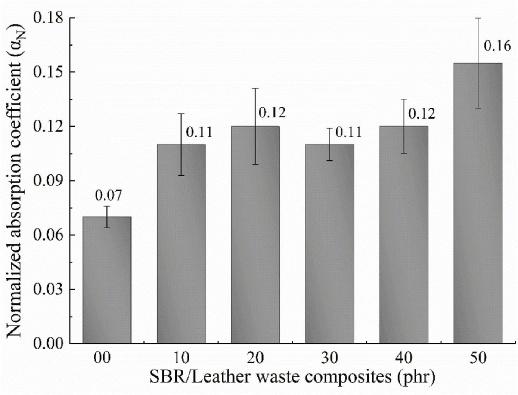
ARSTANNERY 127 RESEARCH
FIG. 18.NORMALIZED ACOUSTIC ABSORPTION COEFFICIENT(ΑN) OF THE SBR/LEATHER WASTE COMPOSITES.
FIG. 17.ACOUSTIC ABSORPTION CURVE OF THE SBR/LEATHER WASTE COMPOSITES.
An additional analysis conducted was the determination of the normalized absorption coefficient (αN), as shown in Fig. 18.
The normalized absorption coefficient is a fundamental measure of a material’s ability to absorb incident sound energy, normalized with respect to its surface area. In this context, the addition of leather shavings resulted in a noticeable increase in this coefficient, although the values obtained were not exceptionally high. Sound absorption is closely linked to the material’s cellular structure, especially the interconnectivity of pores and their geometric complexity.
Simply put, a more intricate and complex pore structure tends to offer better sound absorption capability. This is because the intricate geometry of the pores provides a longer path for sound waves to dissipate and be absorbed by the material (see Fig. 19).
An important point to consider is that the absorption coefficient is also related to the effectiveness with which sound waves can penetrate the cellular structure. In general, open-cell pores tend to be more efficient in this regard, as sound waves, being mechanical waves, travel faster in denser mediums. On the other hand, closed-cell pores may not be as effective in absorbing sound energy, as shown in Fig. 17. However, it is important to note that closed-cell pores tend to offer better thermal insulation properties, as demonstrated in Fig. 16 [71]. This is due to their more compact structure, which reduces heat transfer through the material. Thus, when evaluating the acoustic performance of a material, it is necessary to consider not only the absorption coefficient but also the material’s cellular structure and how it influences both sound absorption and thermal insulation.
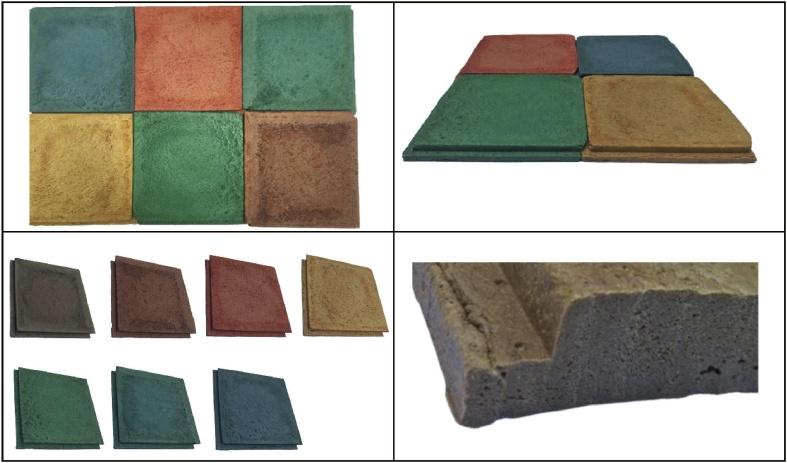
128 ARSTANNERY RESEARCH
FIG. 19.PROTOTYPES OF EXPANDED SBR RUBBER COMPOSITES WITH LEATHER WASTE.
4. APPLICATION OF THE COMPOSITE - PROTOTYPING
Prototyping is a fundamental stage in the development of new products or the implementation of new processes, as it allows developers and designers to explore ideas, identify problems, and adjust before investing significant resources in the final production.
The thermal coating prototype (19 x 19 x 1,55 cm) was conceived based on a sustainable approach, integrating recycled and low-cost materials. Expanded SBR composites offer significant insulating properties, contributing to the reduction of energy consumption in diverse climates. Furthermore, the incorporation of industrial leather waste not only strengthens the material but also promotes the reuse of a byproduct of the leather industry, minimizing waste and associated environmental impacts.
5. CONCLUSION
The production of styrene-butadiene rubber (SBR) foams incorporating micronized leather waste as filler has yielded promising results across various evaluated properties. The SBR/ Leather waste composites exhibited a notable trend regarding relative density and porosity. Specifically, the composite with 20 phr of leather stood out, showing the lowest number of pores, resulting in a more homogeneous distribution and displaying enhanced efficiency in acoustic absorption. Concerning thermal insulation, the SBR/Leather waste 20 phr composite proved to be the most effective, with a thermal conductivity of 0.073 Wm-1.
K−1 and significant thermal attenuation. These findings suggest that this composite could represent a viable alternative for thermal insulation applications, surpassing conventional materials such as construction boards, plywood, and fiberglass. Therefore, this study offers valuable insights for potential commercial applications in the development of composite materials combining expanded rubber with leather across various sectors, particularly excelling in acoustic and thermal insulation. The development of a thermal coating prototype represents a significant step towards sustainable innovation and improvement of housing conditions in low-income communities.
CONTRIBUTIONS OF THE AUTHORS
The manuscript was crafted through the contributions of all authors, and all authors have endorsed the final version of the manuscript. Each author has read and consented to the published version of the manuscript.
DECLARATION OF COMPETING INTEREST
The authors declare that they have no known competing financial interests or personal relationships that could have appeared to influence the work reported in this paper.
ACKNOWLEDGMENTS
To the São Paulo Research Foundation (FAPESP) for the financial support provided under grant number 2016/03208-0, and to the Cellular Materials Laboratory (CellMat) at the University of Valladolid - Spain.
ARSTANNERY 129 RESEARCH
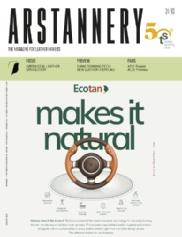
AICC - ASSOCIAZIONE ITALIANA
CHIMICI DEL CUOIO info@aiccc.it www.aiccc.it pag. 18-19-20
APLF LTD. tel. +852 282.762.11 info@aplf.com www.aplf.com www.aclechina.com www.fashionaccess.aplf.com www.leatherfair.aplf.com pag. 82-83-84-85-89
AS GREEN TECHNOLOGY s.r.l. Unipersonale tel. +39 0571.467.253 info@asgreentechnology.it www.asgreentechnology.it pag. 70-71-72-73
ASSOMAC SERVIZI s.r.l. tel. +39 0381.788.83 info@assomac.it www.assomac.it pag. from 45 to 65
BARNINI s.r.l. tel. +39 0571.487.001 barnini@barnini.it www.barnini.it pag. IV cover
BAUCE TRI.MA s.r.l. tel. +39 0445.490.740 info-line@bauce.com www.bauce.com pag. 9
BERGI S.p.A. tel. +39 0444.473.473 info@bergi.com www.bergi.com pag. 76-77
COMELZ S.p.A. tel. +39 0381.424.01 info@comelz.com www.comelz.com pag. 3-13-17-49-101-III cover
CORICHEM s.r.l. tel. +39 0444.671.670 info@corichem.it www.corichem.it pag. 38-39
COTANCE
cotance@euroleather.com pag. 6-7-8
DERMACOLOR s.r.l. tel. +39 0571.471.313 info@dermacolor.it www.dermacolor.it pag. 21
DERMAKIM s.r.l. tel. +39 0332.287.623 info@dermakim.it www.dermakim.it pag. 5
ESCOMAR ITALIA s.r.l. tel. +39 0444.451.313 info@escomar.it www.escomar.it pag. 68-69
FGL INTERNATIONAL S.p.A. tel. +39 0571.478.851 info@fglinternational.com www.fglinternational.com pag. 15
GEMATA S.p.A. tel. +39 0445.492.711 info@gemata.com www.gemata.com pag. 43
GRUPPO MASTROTTO S.p.A. tel. +39 0444.621.200 sales@mastrotto.com www.mastrotto.com pag. 100
S.C. COSTRUZIONI MECCANICHE s.r.l. tel. +39 0571.931.588 info@sctech.it www.sctech.it pag. 74-75
SILVACHIMICA s.r.l. tel. +39 0174.220.254 tan@silvateam.com www.silvateam.com pag. Cover
STAHL HOLDINGS B.V. www.stahl.com pag. 11
SYN-BIOS S.p.A. tel. +39 0444.441.144 synbios@synbios.it www.synbios.it pag. 34-35
TFL ITALIA S.p.A. tel. +39 0444.644.311 contactitaly@tfl.com www.tfl.com pag. 40-41-42
TODESCO s.r.l. tel. +39 0444.340.639 info@todescosrl.com www.todescosrl.com pag. II cover-66-67
130 ARSTANNERY CONTACTS MAY 2024-03

























































































































 DANIELE BONFITTO, MARTIN LOBERT, MARCELLO DE LUCA - ICAP LEATHER CHEM
ALESSANDRO BIANCO - MEC MAN
AGOSTINO APOLITO - ASSOMAC CHIARA TROISI, PAOLA BELLUSCI - ITA AGENZIA
GABRIELLA BOCCA - LAMEBO
LORENZO SIMONI, RICCARDO FABIANI - BARNINI
MATTEO CABRINI, MARCO FOGLI - THEMA SYSTEM
DAVIDE PIRONI SPRAYCOLOR,PAOLO MATELLI - ALPE
LUCA BAUCE - BAUCE
DIEGO CISCO - GSC GROUP
MAURIZIO MOLON, ALBERTO CALIARO - GER ELETTRONICA
OPENING CEREMONY
LUIGI JULIANI - REPICO
MAURO PELLIZZARI - GEMATA
PAOLO TODESCO, NICOLA GARDIN, ZHOU JIANZHE - TODESCO
STEFANO CARLOTTO - CARTIGLIANO
ROBERTO CALATTINI - SC COSTRUZIONI MECCANICHE
DANIELE BONFITTO, MARTIN LOBERT, MARCELLO DE LUCA - ICAP LEATHER CHEM
ALESSANDRO BIANCO - MEC MAN
AGOSTINO APOLITO - ASSOMAC CHIARA TROISI, PAOLA BELLUSCI - ITA AGENZIA
GABRIELLA BOCCA - LAMEBO
LORENZO SIMONI, RICCARDO FABIANI - BARNINI
MATTEO CABRINI, MARCO FOGLI - THEMA SYSTEM
DAVIDE PIRONI SPRAYCOLOR,PAOLO MATELLI - ALPE
LUCA BAUCE - BAUCE
DIEGO CISCO - GSC GROUP
MAURIZIO MOLON, ALBERTO CALIARO - GER ELETTRONICA
OPENING CEREMONY
LUIGI JULIANI - REPICO
MAURO PELLIZZARI - GEMATA
PAOLO TODESCO, NICOLA GARDIN, ZHOU JIANZHE - TODESCO
STEFANO CARLOTTO - CARTIGLIANO
ROBERTO CALATTINI - SC COSTRUZIONI MECCANICHE















 DORIANO PAGLIA - SERAFINI BERGI
GIULIO GALIOTTO - ERRETRE
MARCO FREDIANI - KLF TECNOKIMICA
NICOLA OCELLO - WEGA
NICOLÒ PIAMPIANI, LUCA MARTINI - CHIMICA ITALIANA
CLAUDIO ROSATI - LMF BIOKIMICA
ANDREA FASTELLI - TECNOCHIMICA
GIUSEPPE PERETTI, GIANPIETRO PORTINARI - REVOMEC
MARIOLINA CAIMI - CAIMI
FILIPPO SANI - AS GREEN TECHNOLOGY
FRANCESCO TURINI - GOZZINI DAVIDE PIRONI - SPRAYCOLOR
MONICA BRAGGION, FABIO BRAGGION - CORICHEM
GUIDO FRIZZARIN - ELPA
OLIMPIO STORTI - PAJUSCO TECNOLOGIE
ANDREA MEUCCI, ALESSIO MAFFEI - DERMACOLOR
DORIANO PAGLIA - SERAFINI BERGI
GIULIO GALIOTTO - ERRETRE
MARCO FREDIANI - KLF TECNOKIMICA
NICOLA OCELLO - WEGA
NICOLÒ PIAMPIANI, LUCA MARTINI - CHIMICA ITALIANA
CLAUDIO ROSATI - LMF BIOKIMICA
ANDREA FASTELLI - TECNOCHIMICA
GIUSEPPE PERETTI, GIANPIETRO PORTINARI - REVOMEC
MARIOLINA CAIMI - CAIMI
FILIPPO SANI - AS GREEN TECHNOLOGY
FRANCESCO TURINI - GOZZINI DAVIDE PIRONI - SPRAYCOLOR
MONICA BRAGGION, FABIO BRAGGION - CORICHEM
GUIDO FRIZZARIN - ELPA
OLIMPIO STORTI - PAJUSCO TECNOLOGIE
ANDREA MEUCCI, ALESSIO MAFFEI - DERMACOLOR












































































